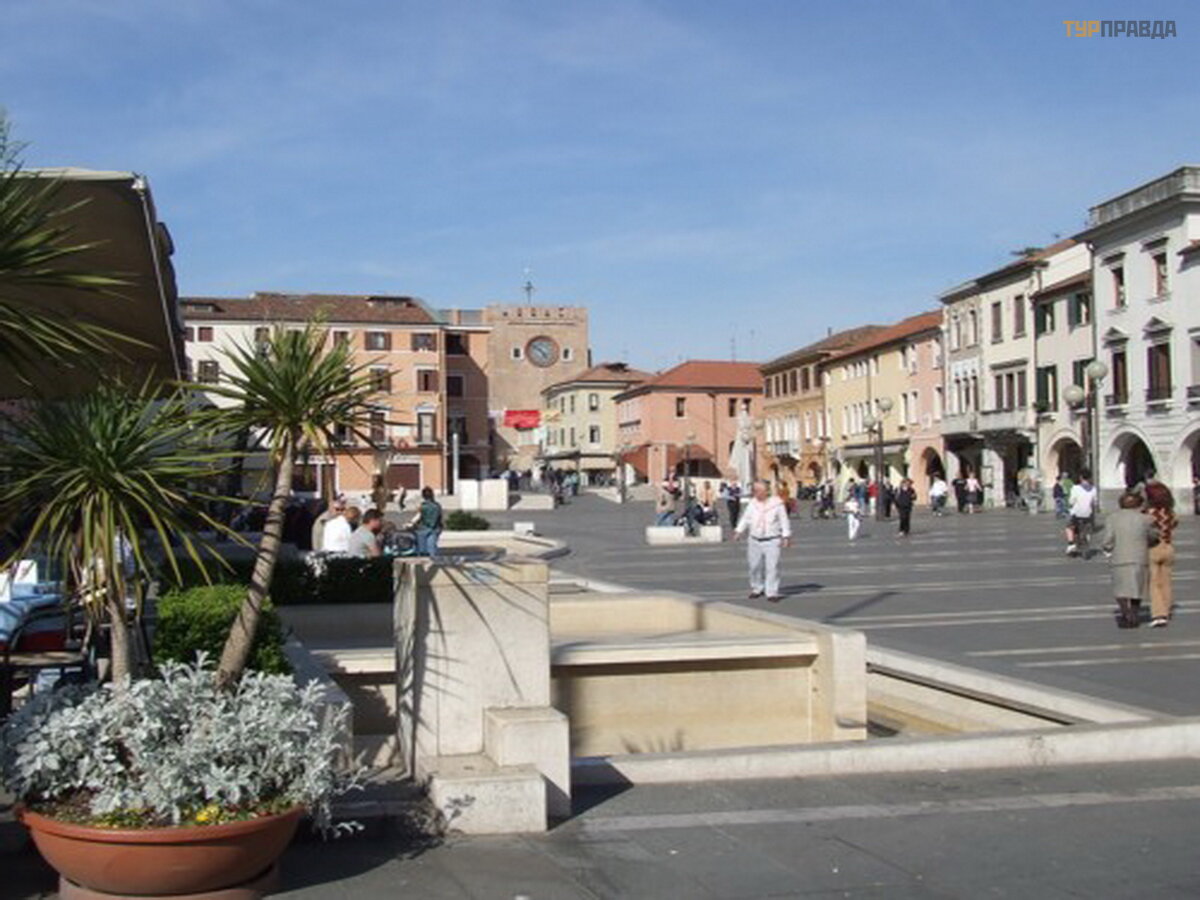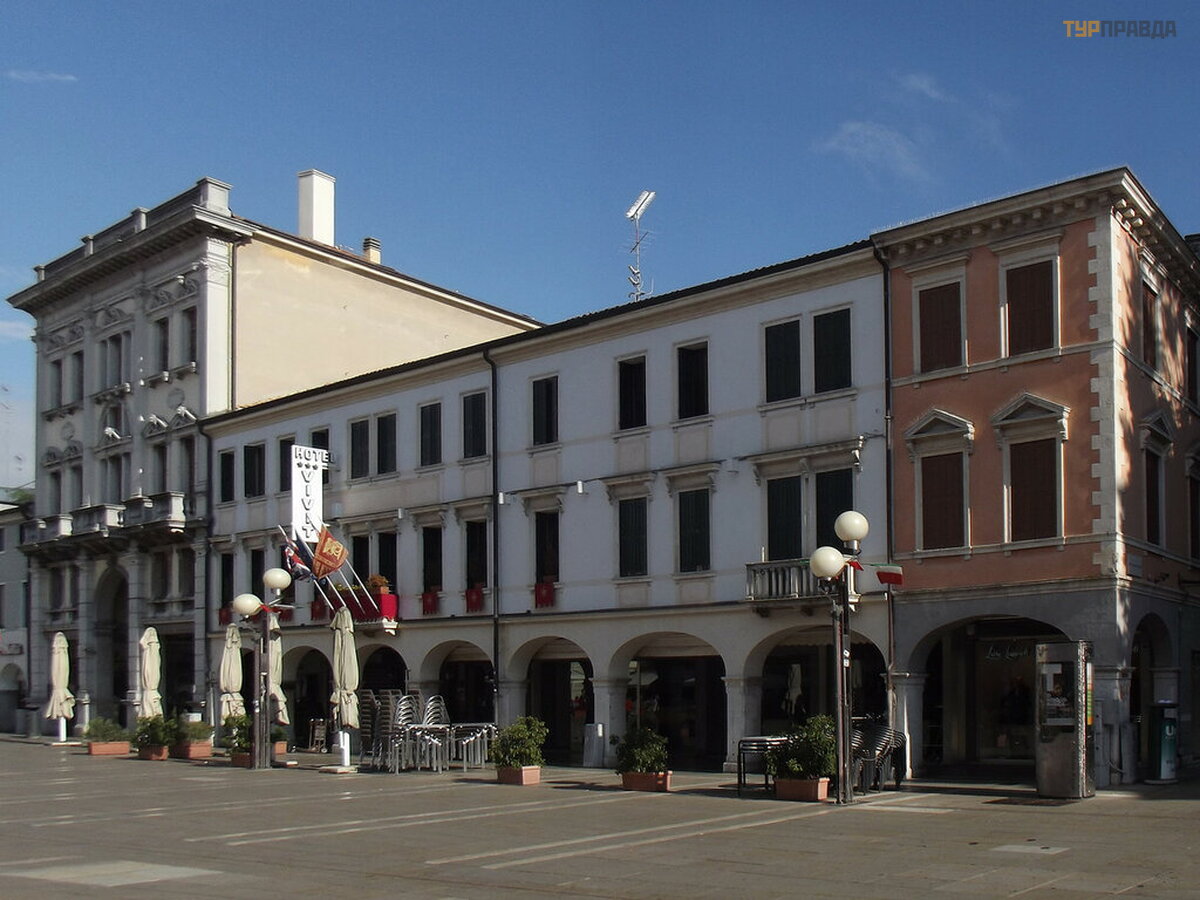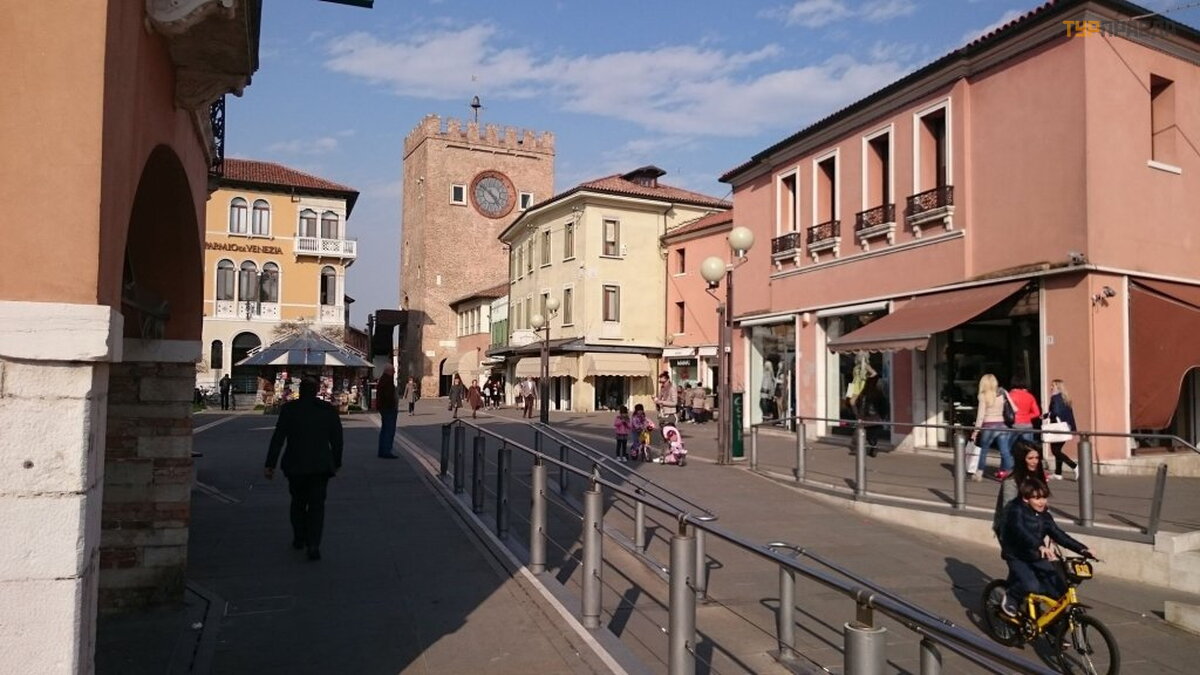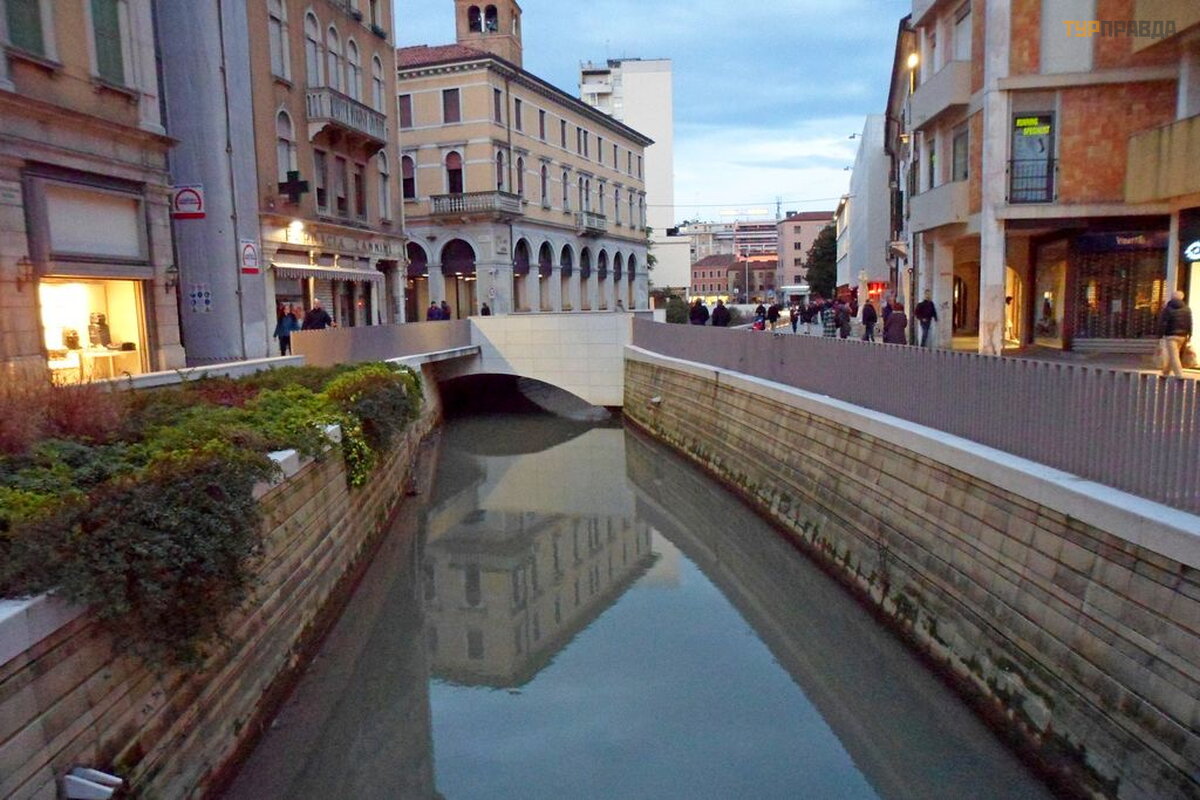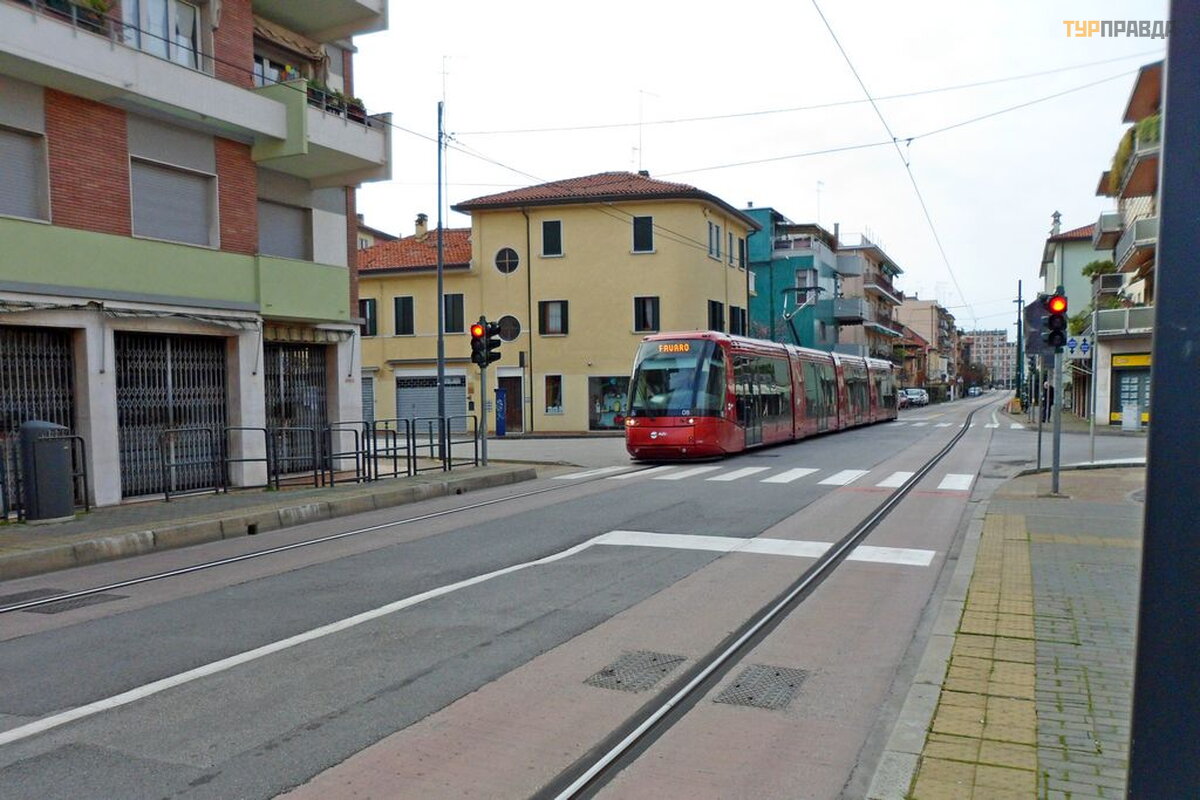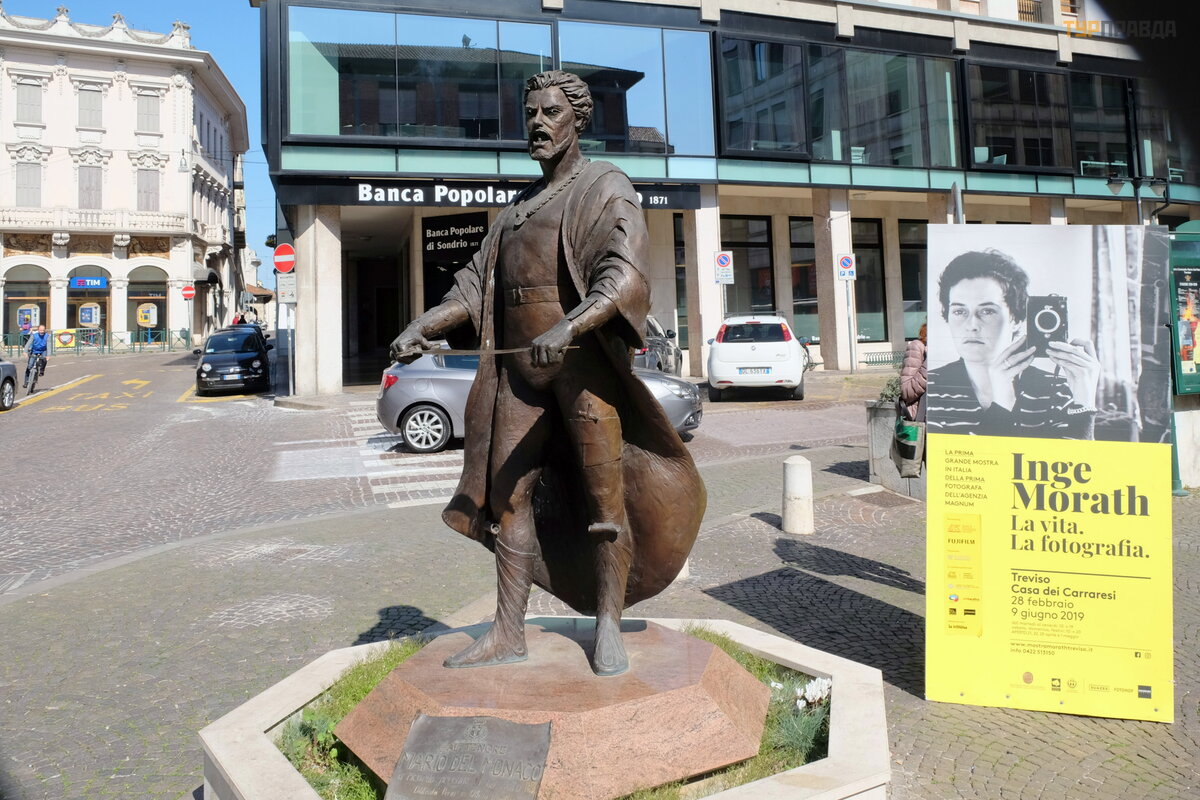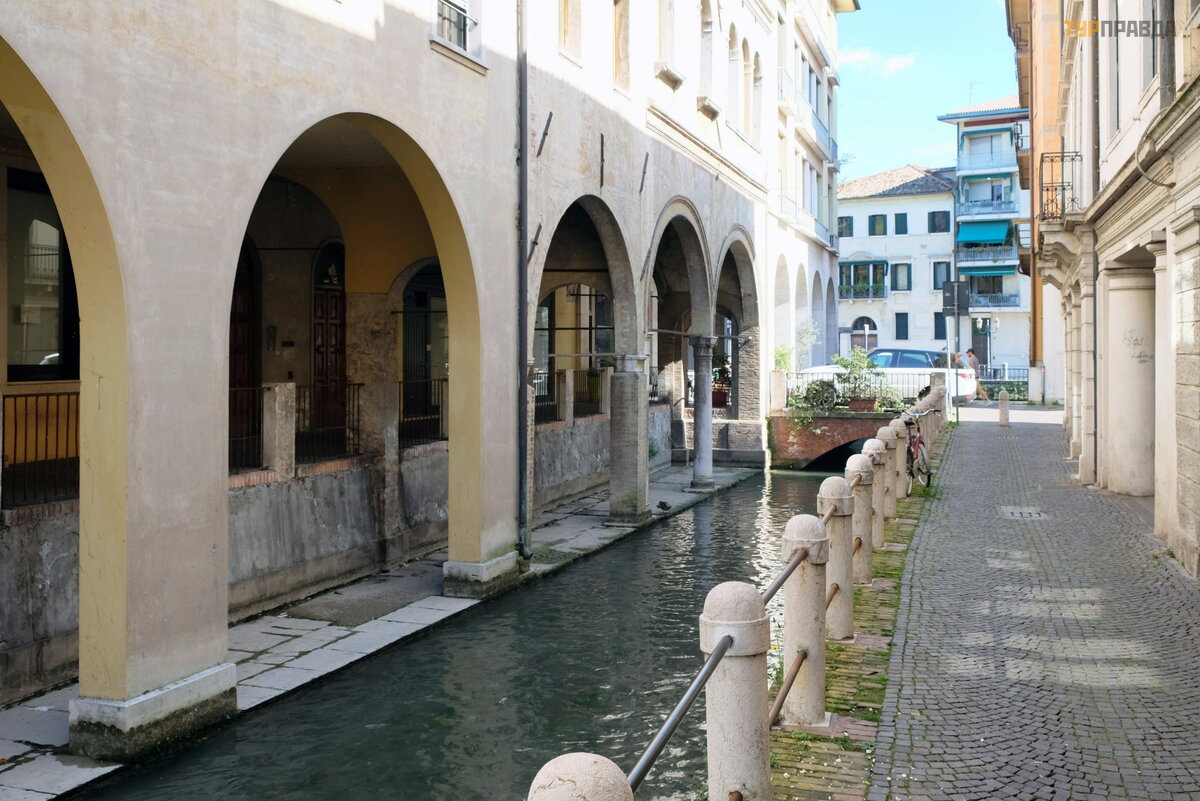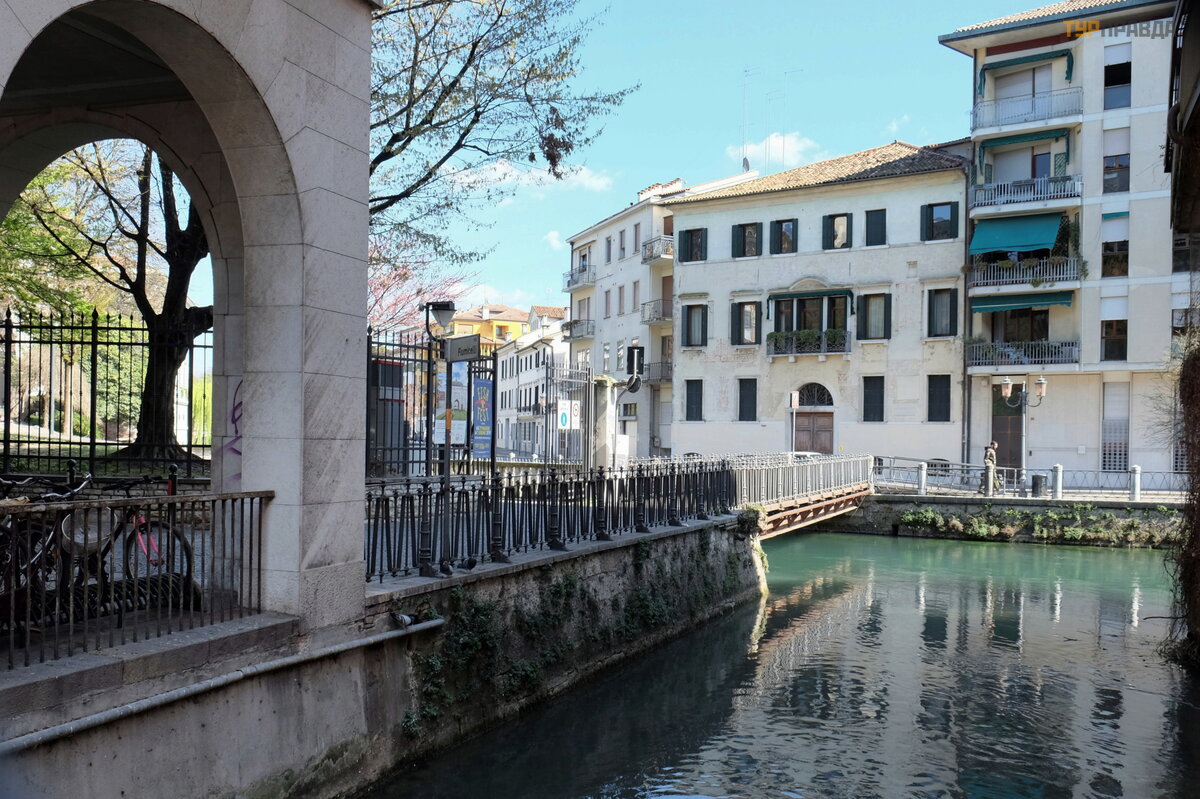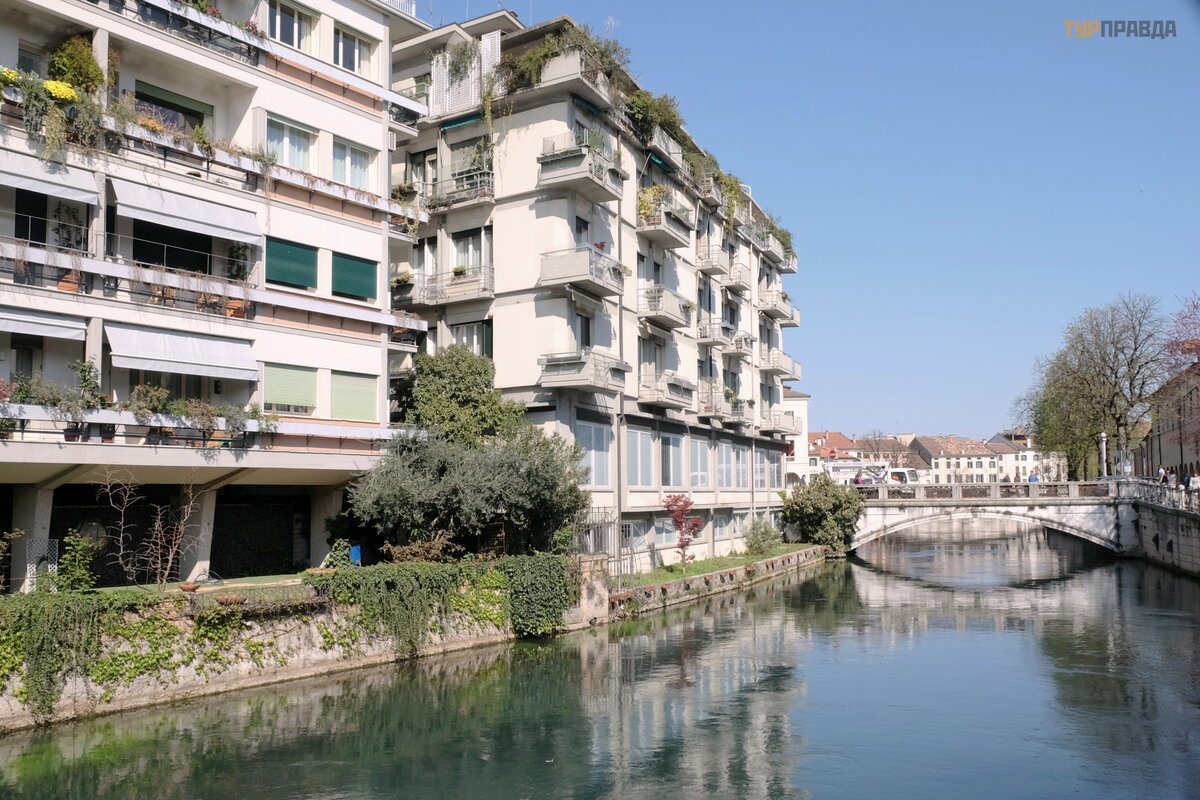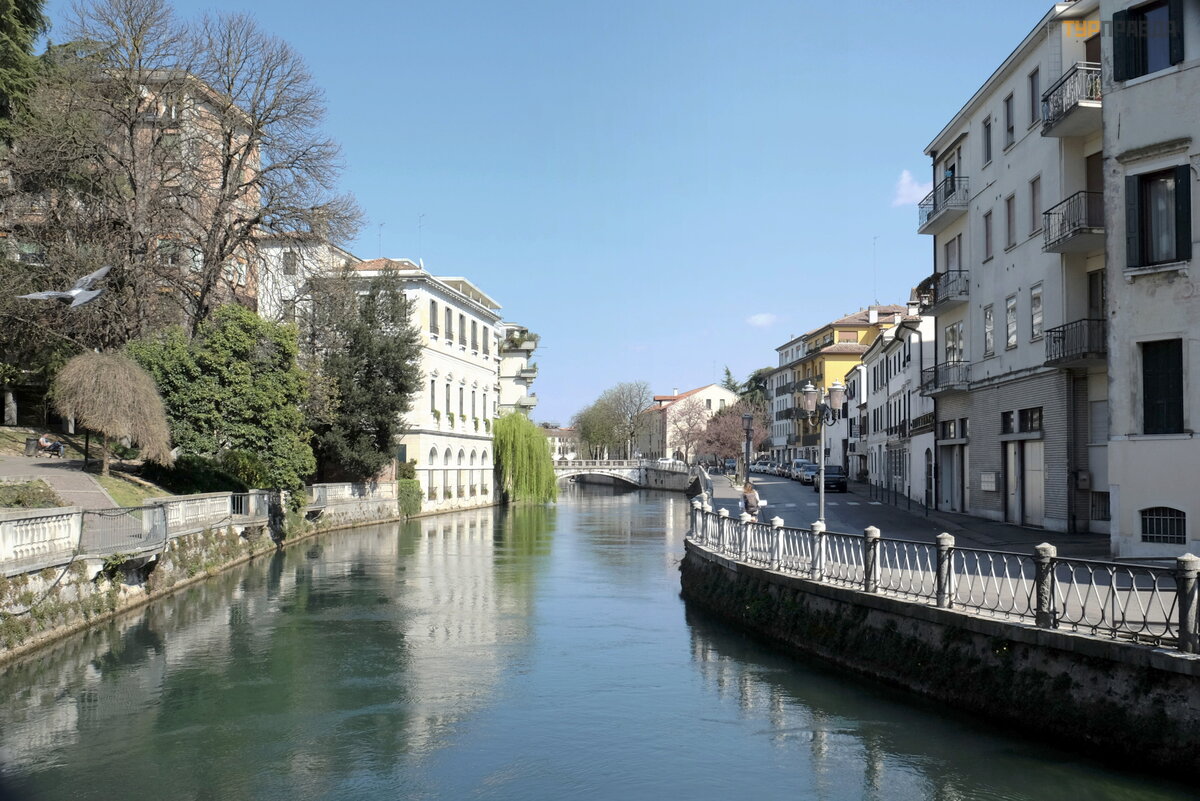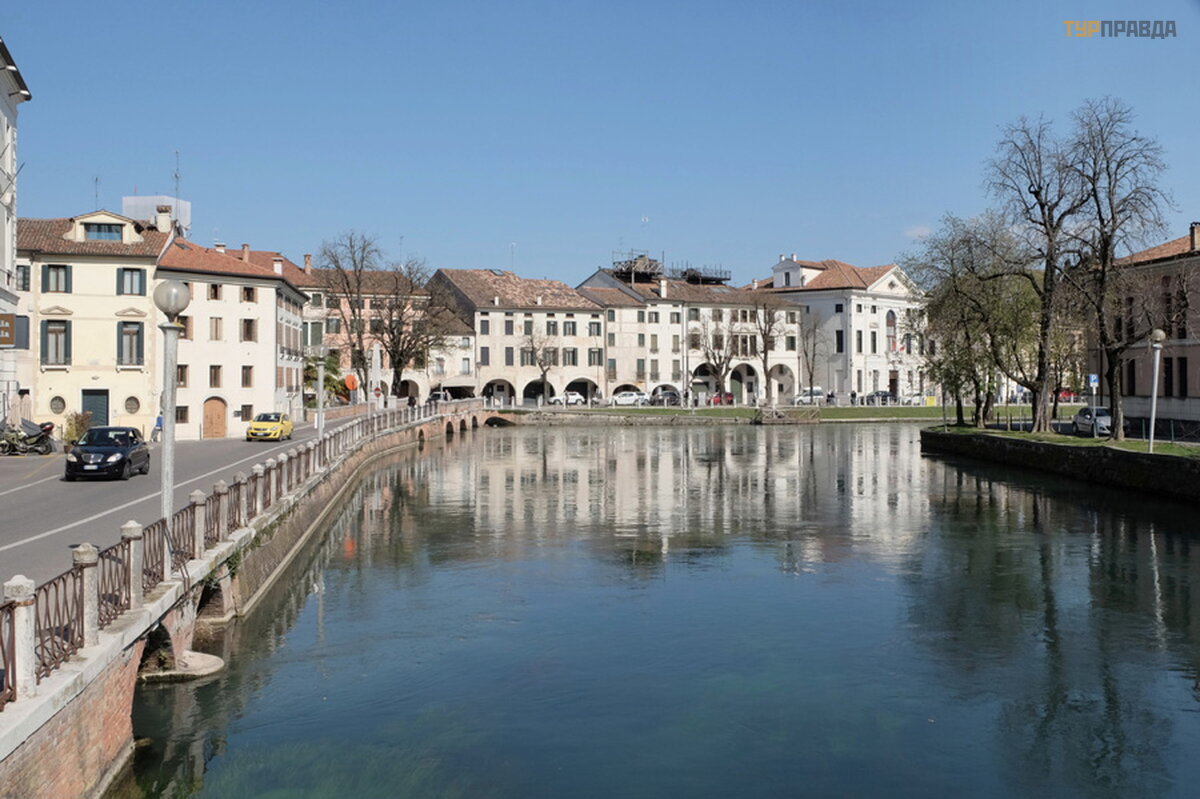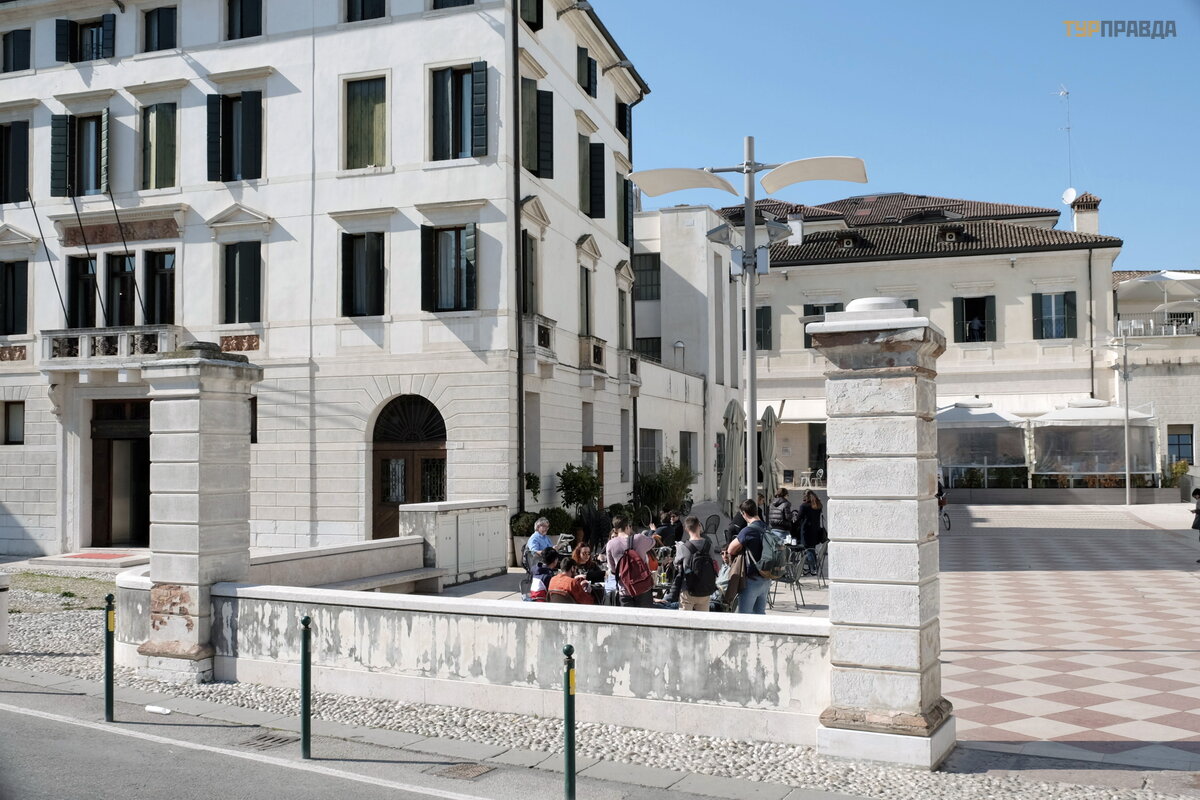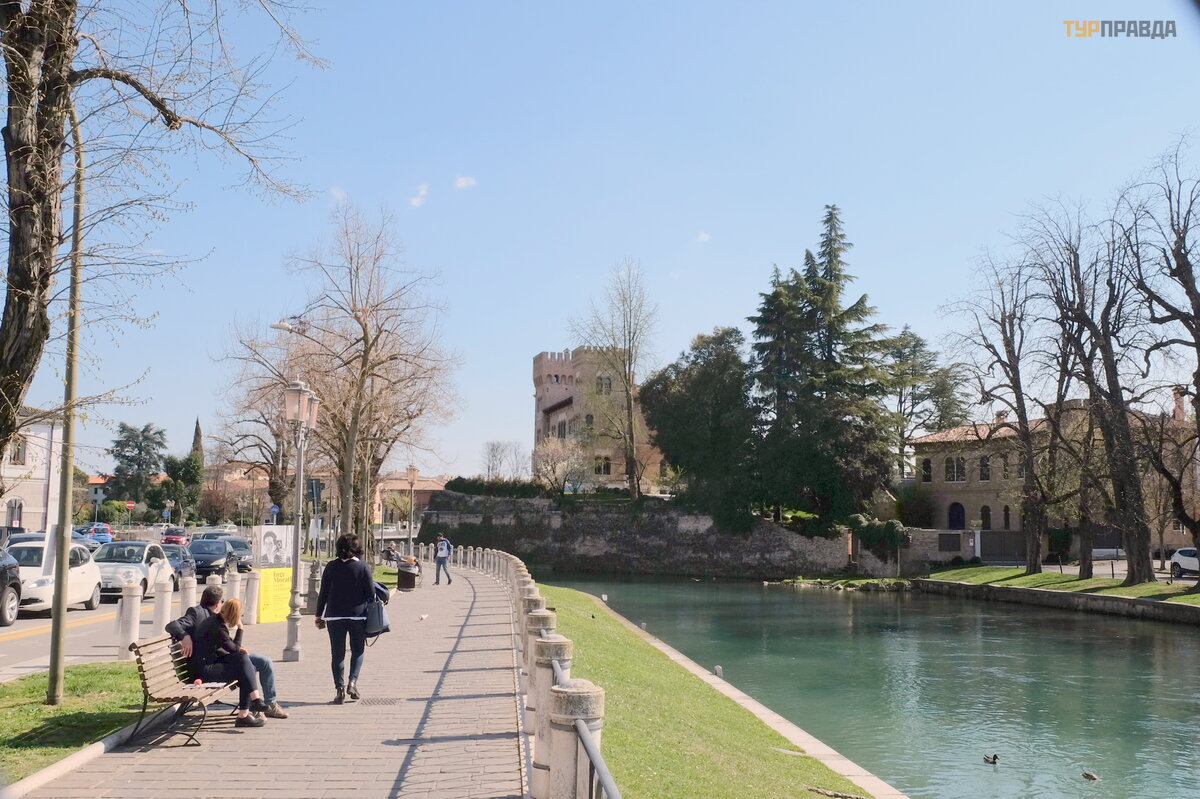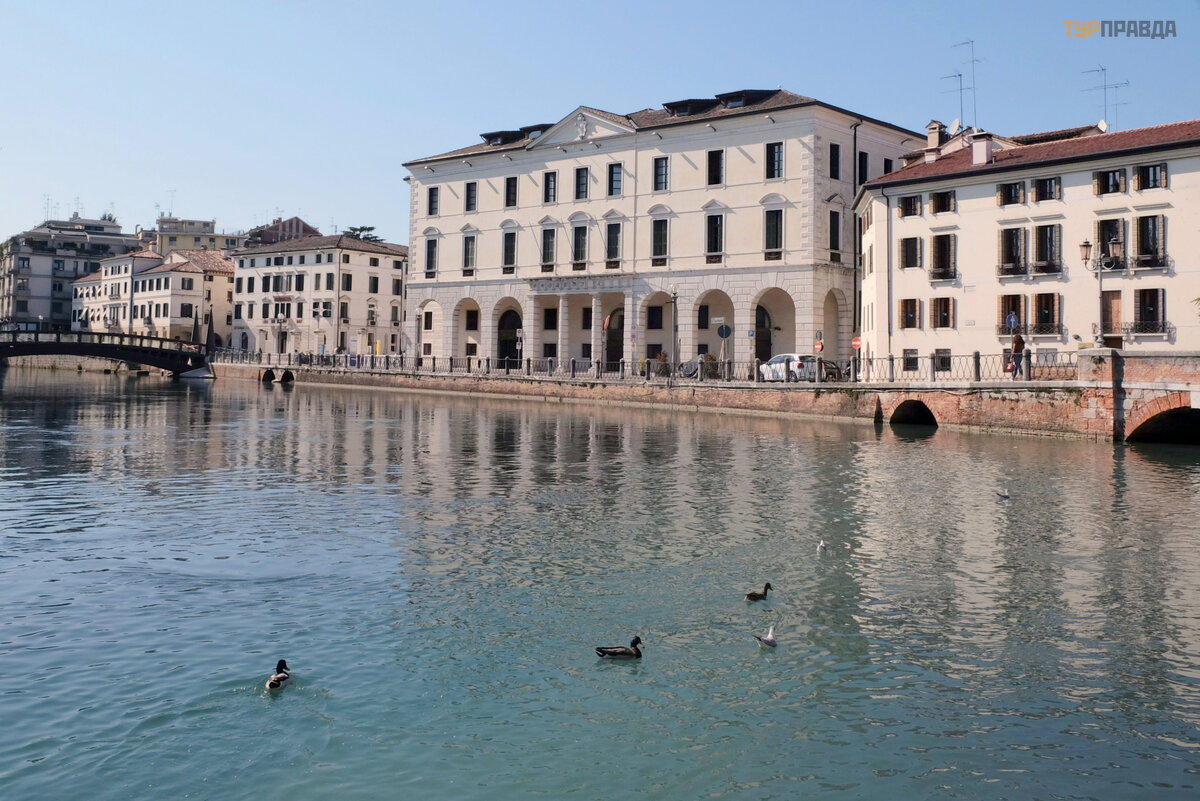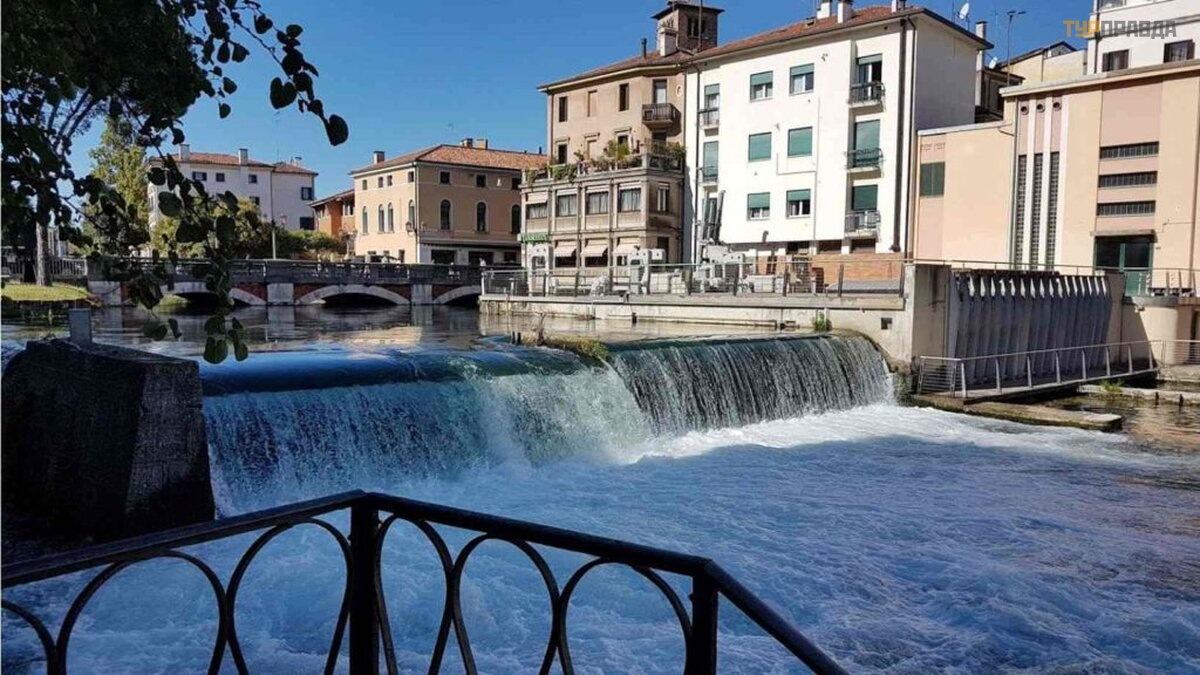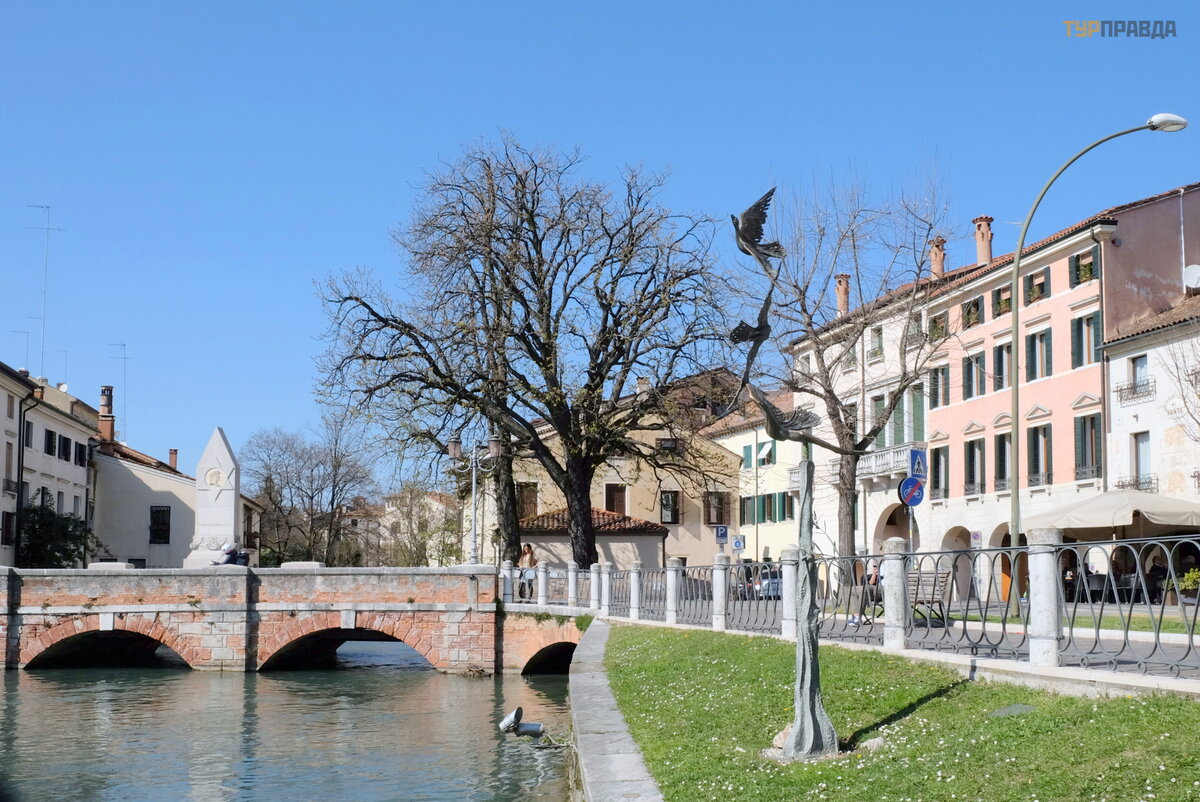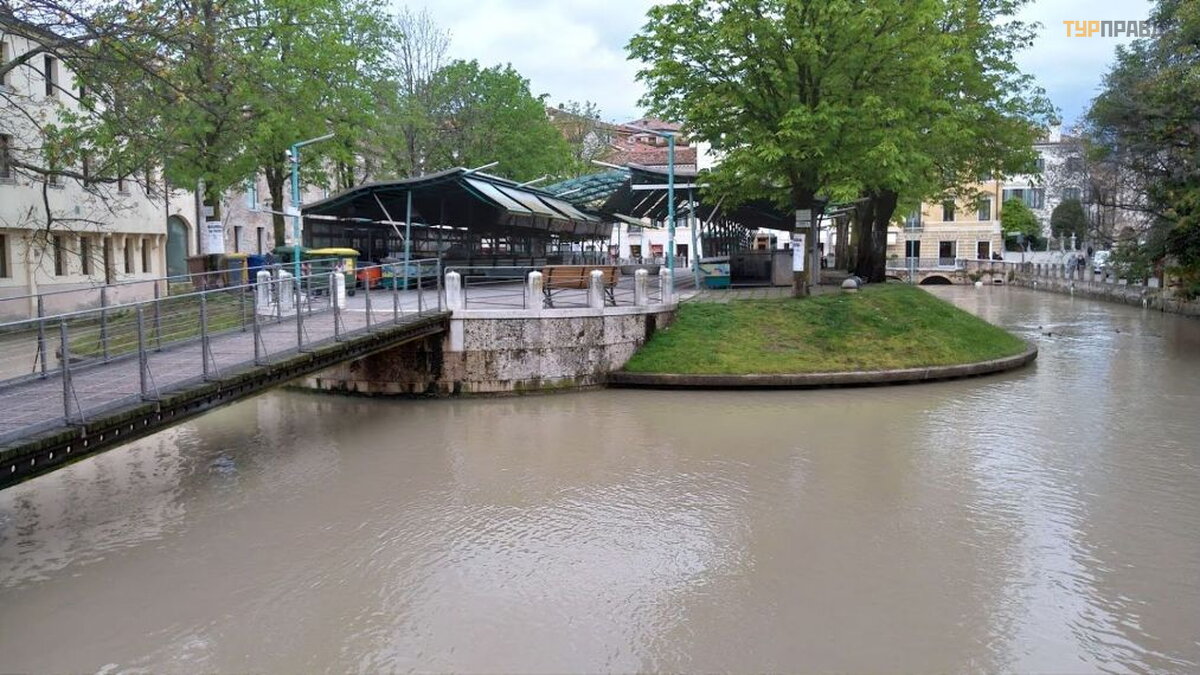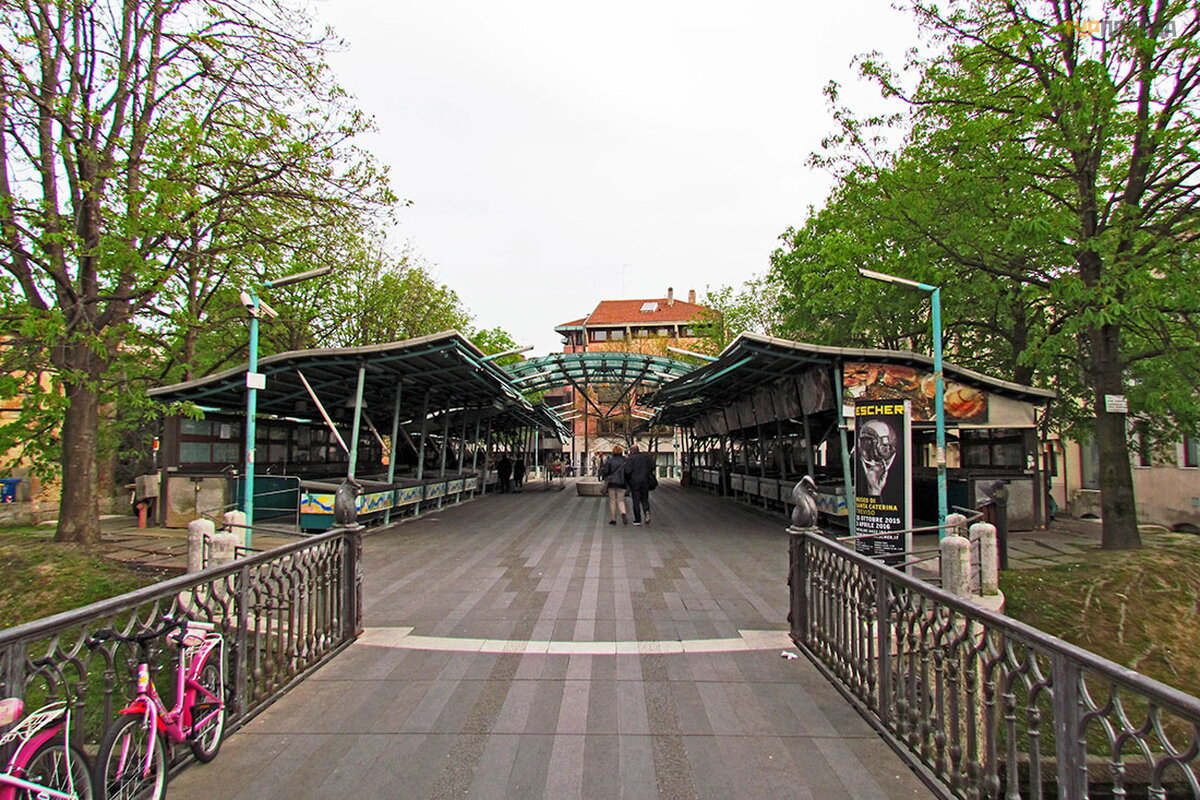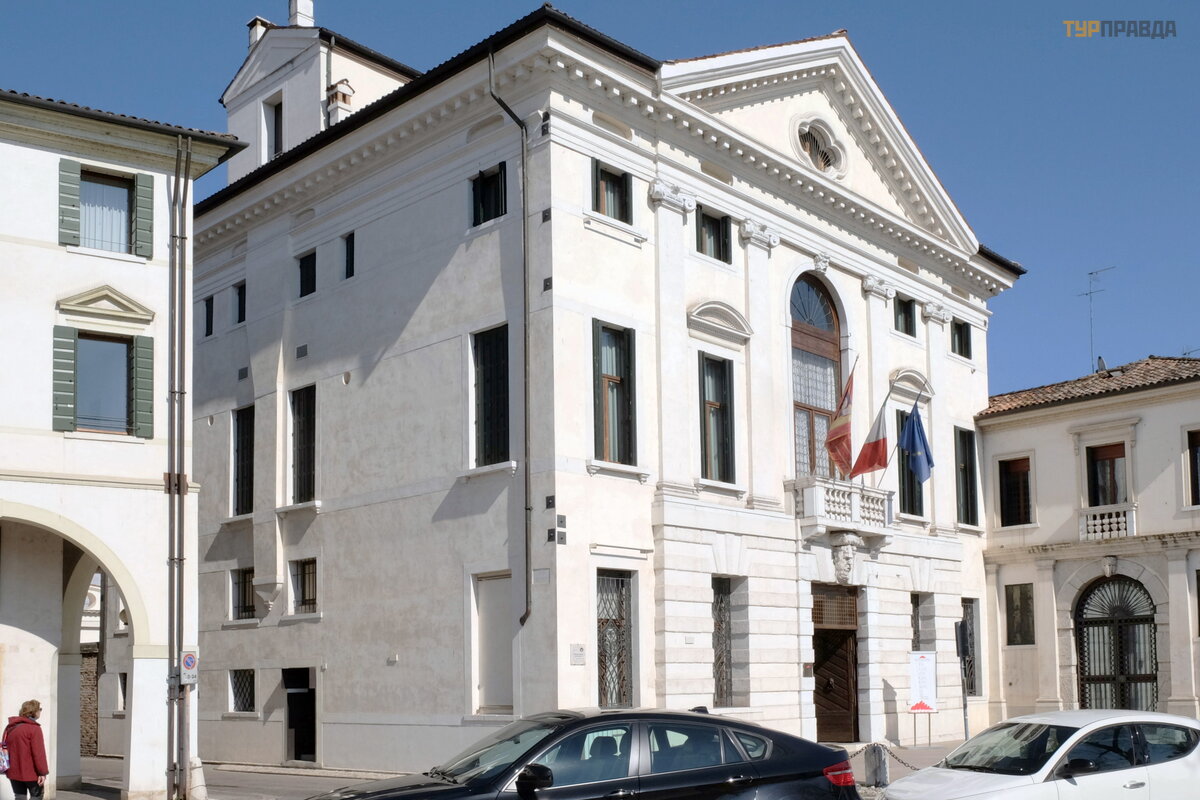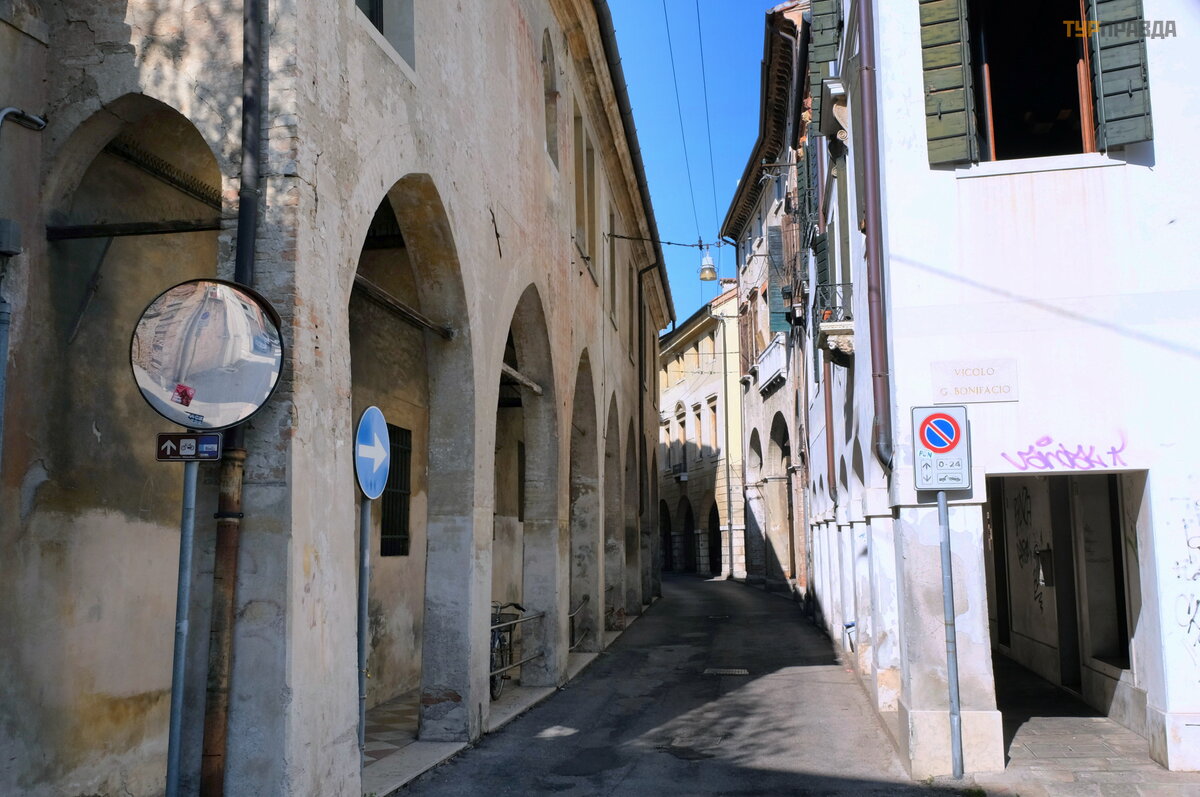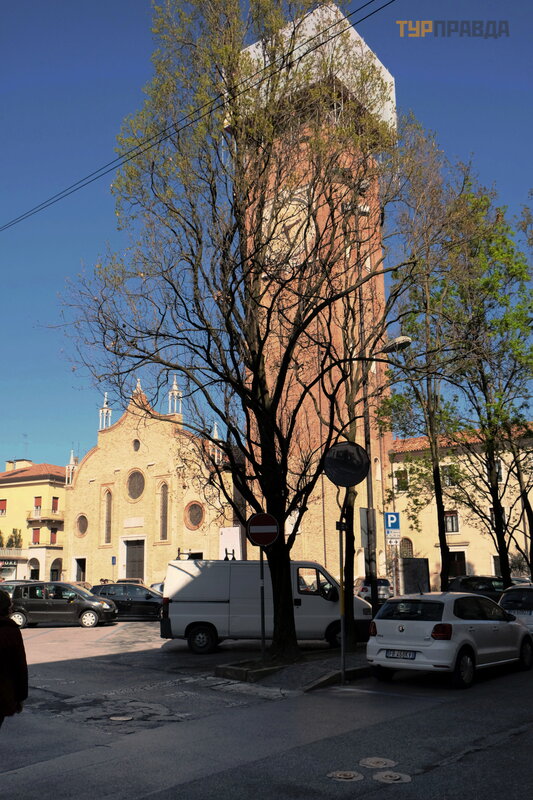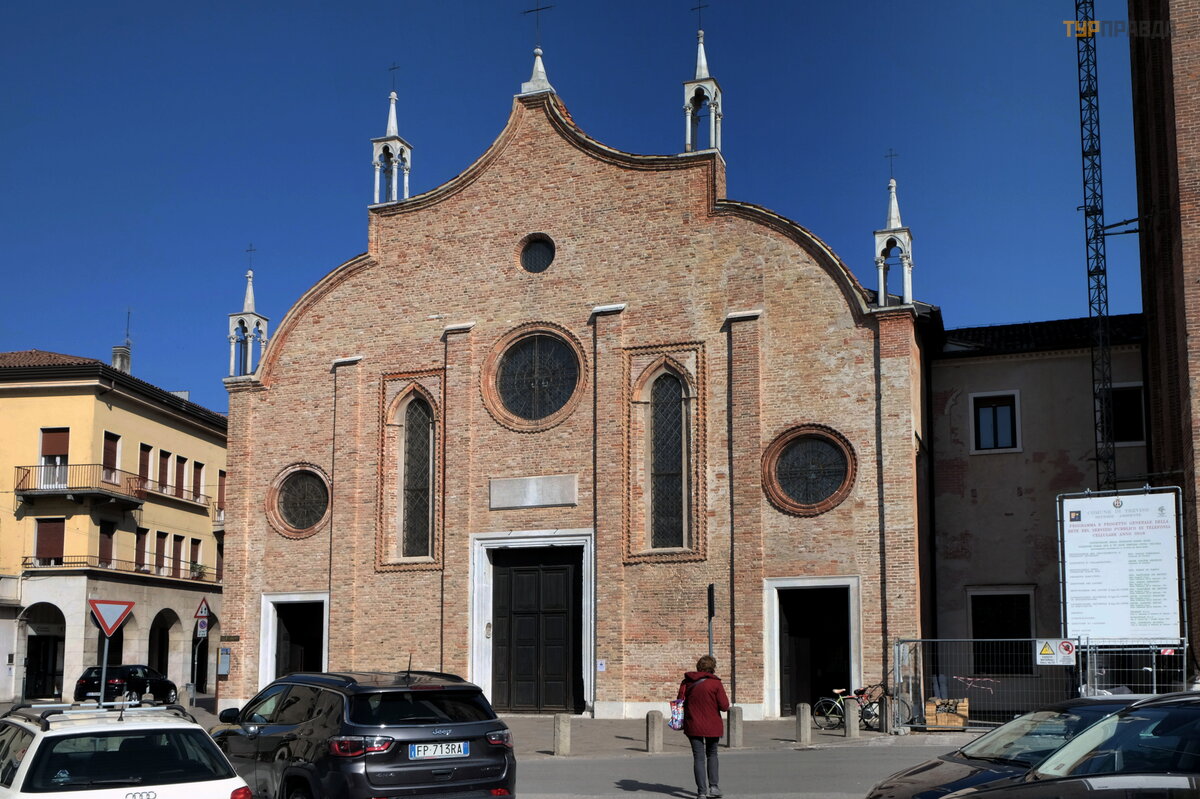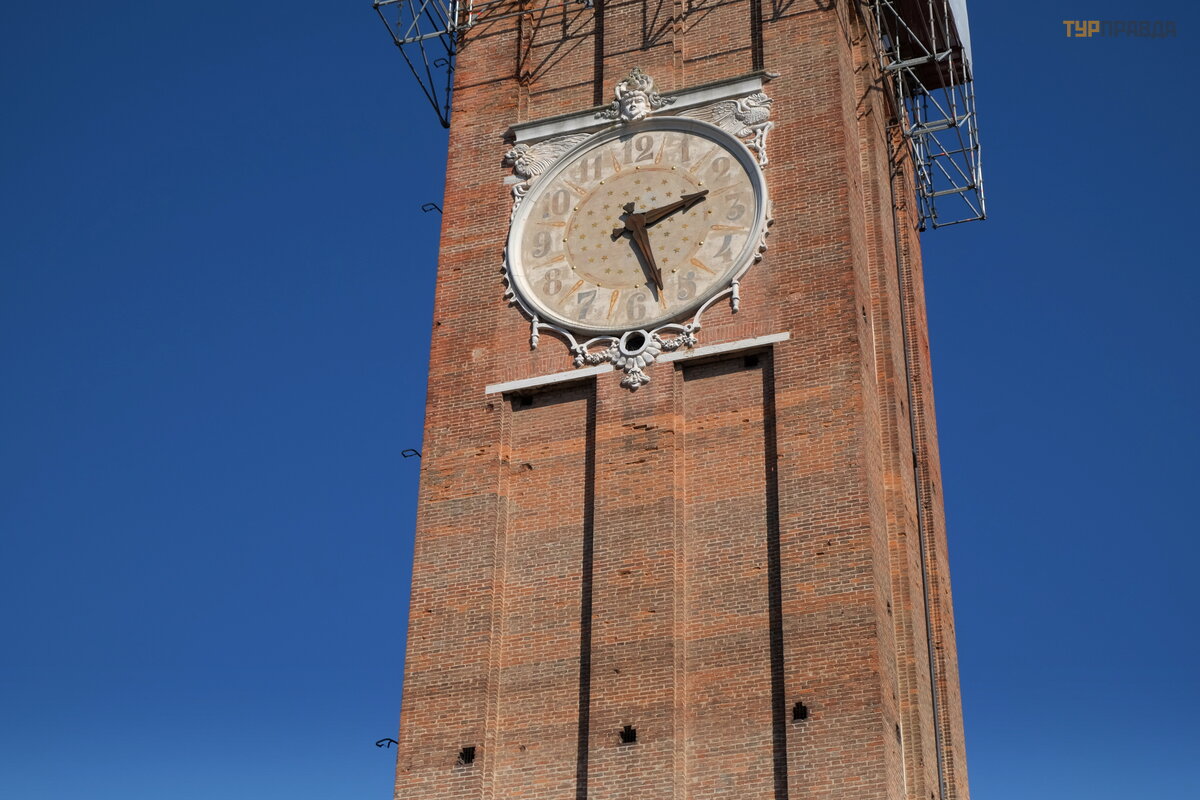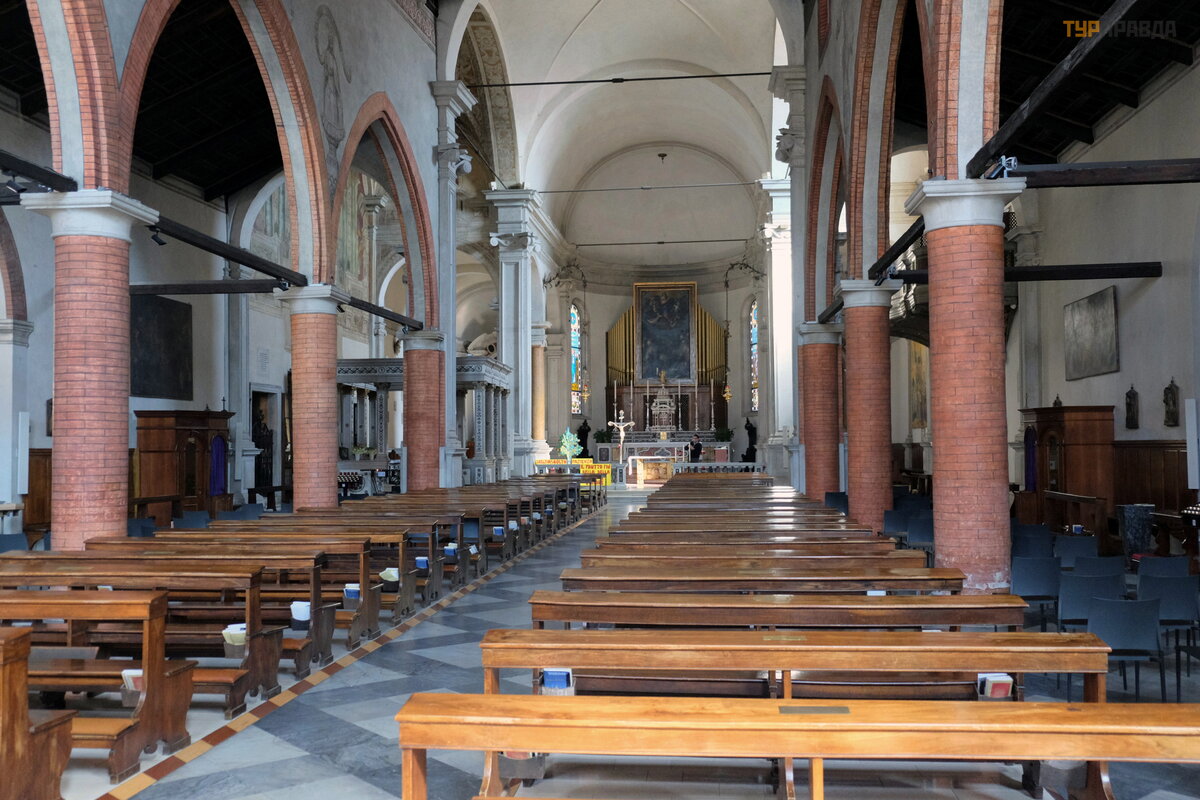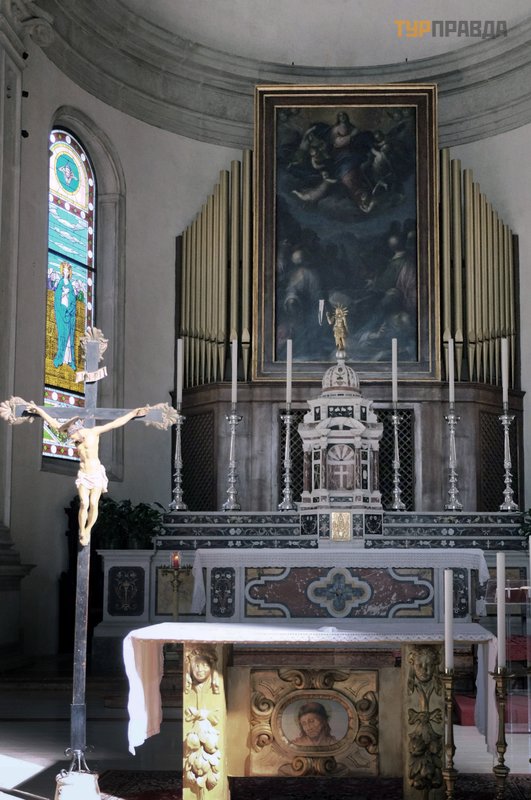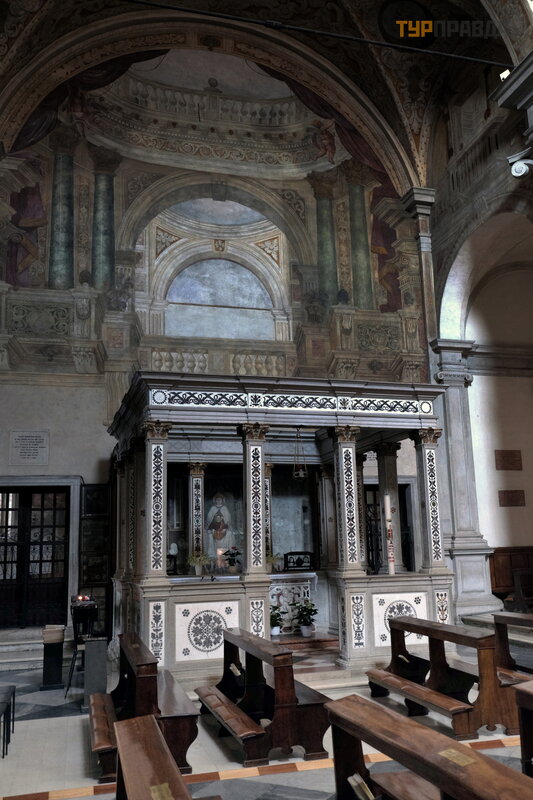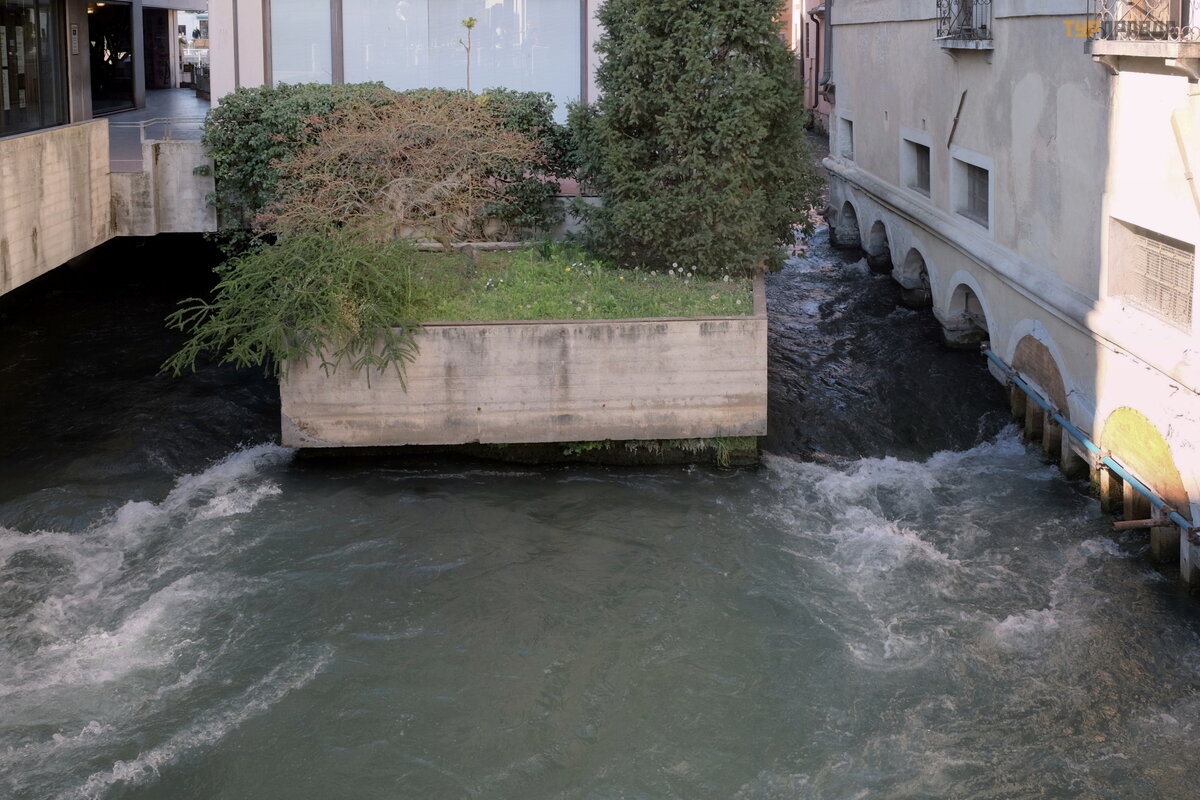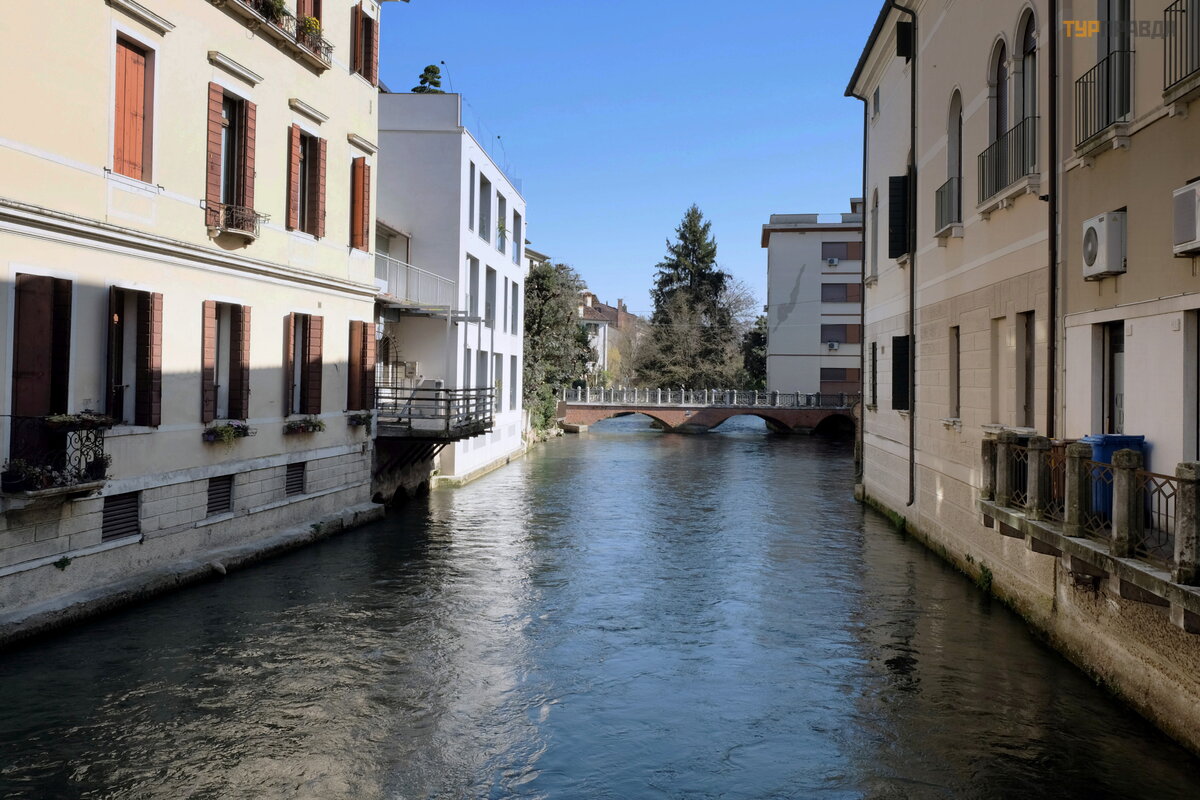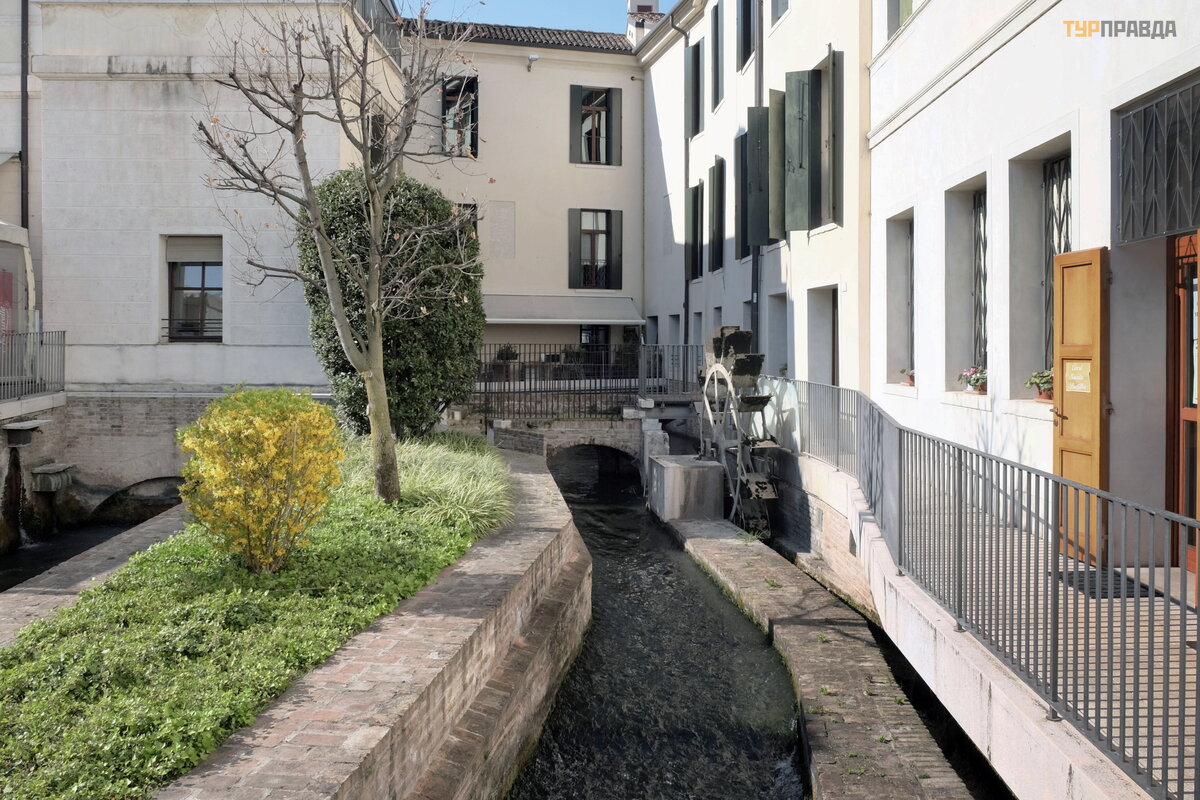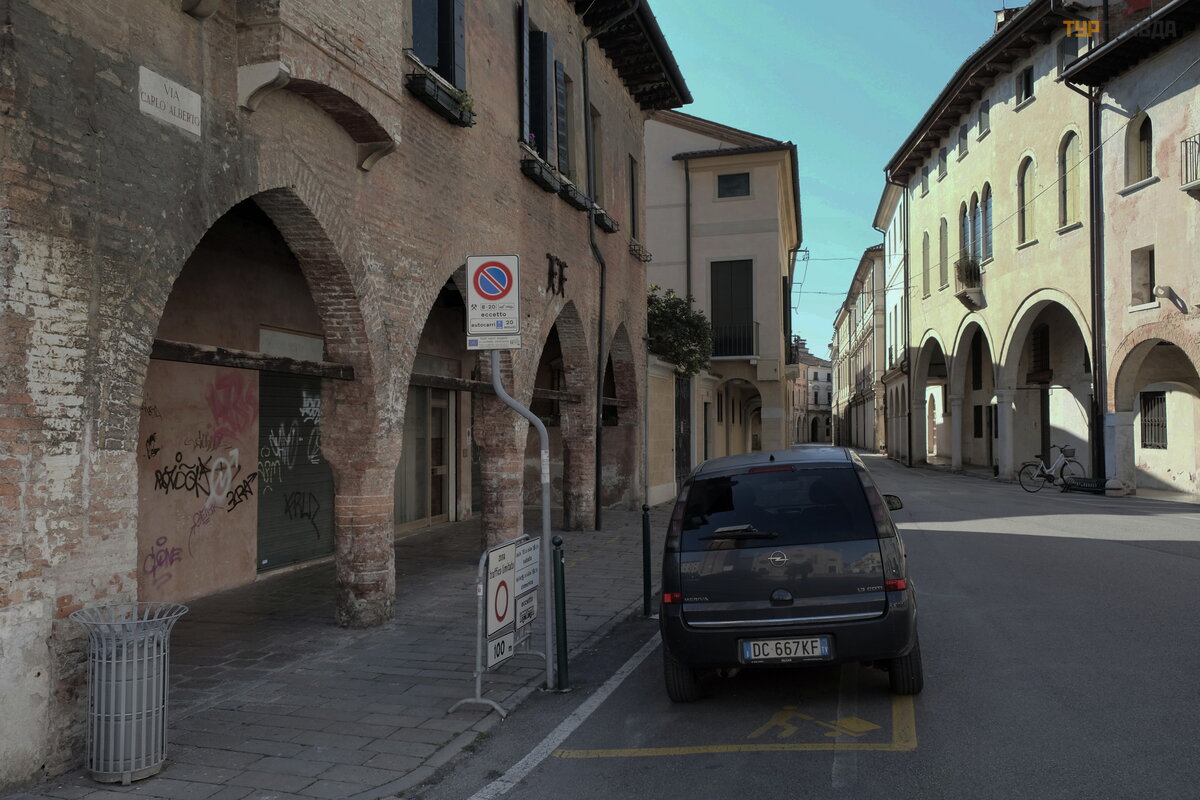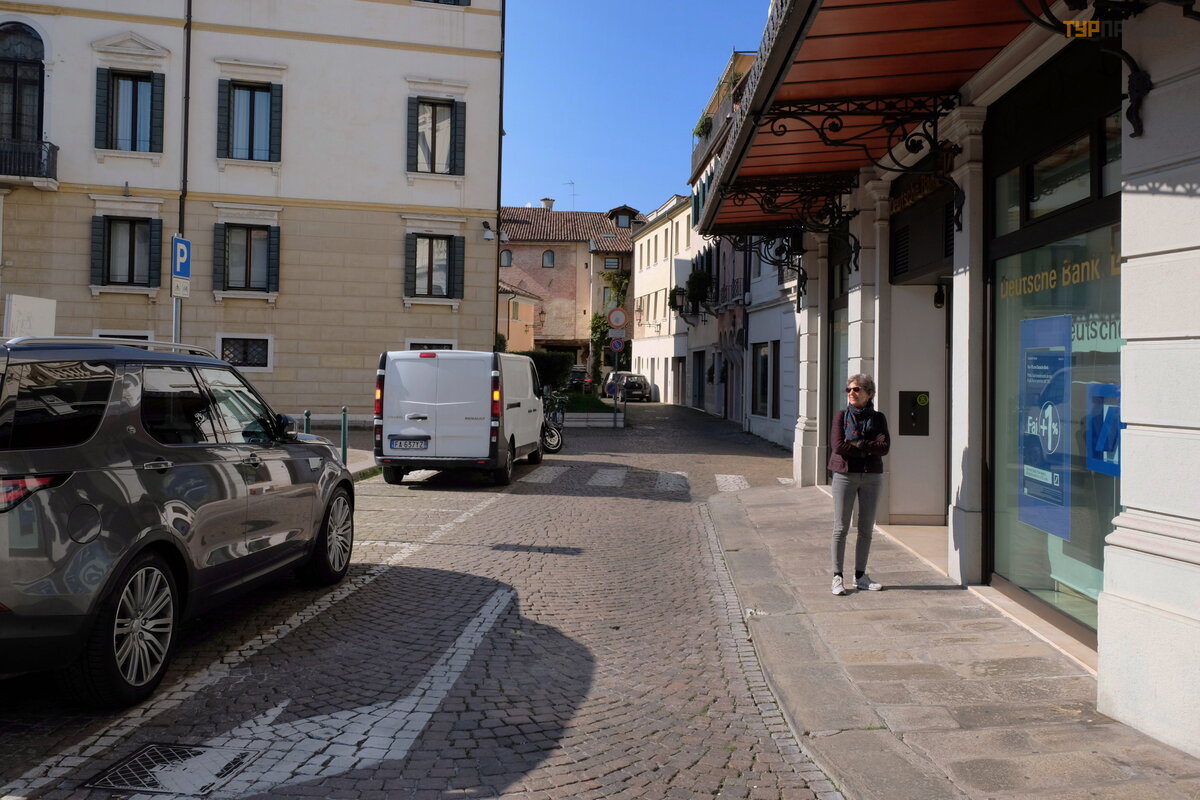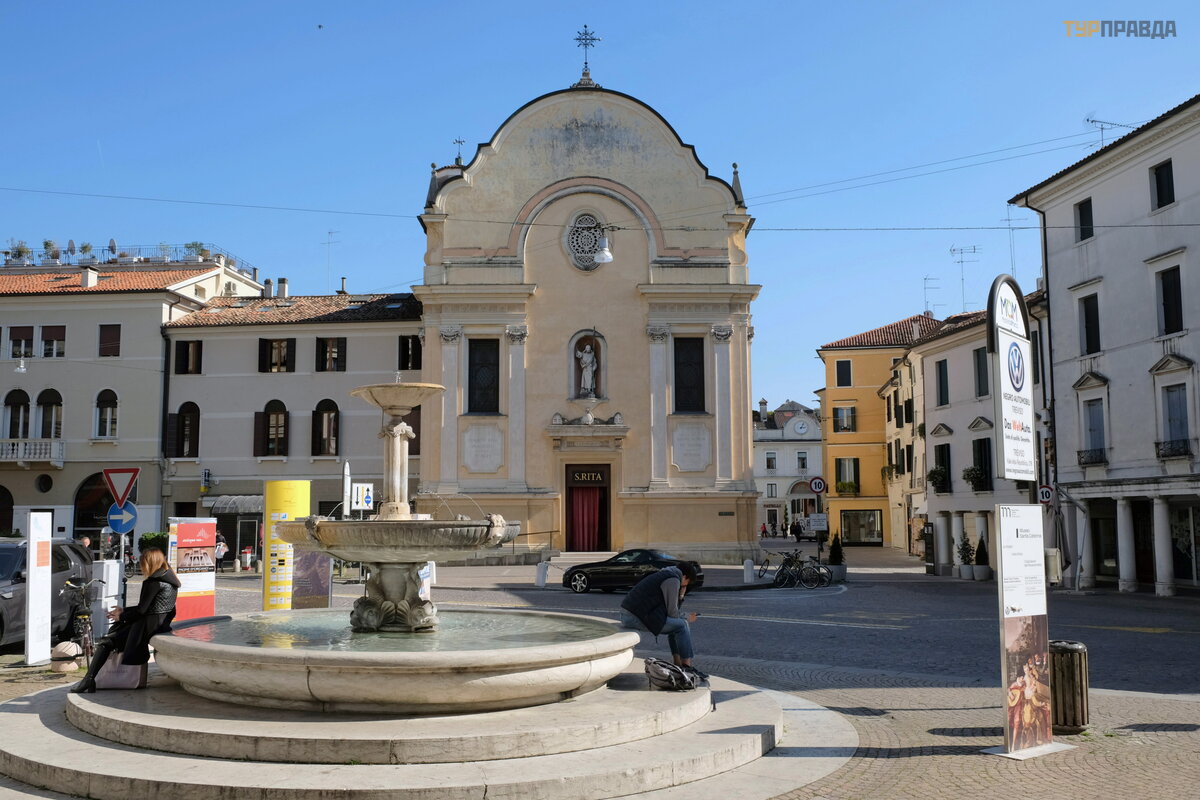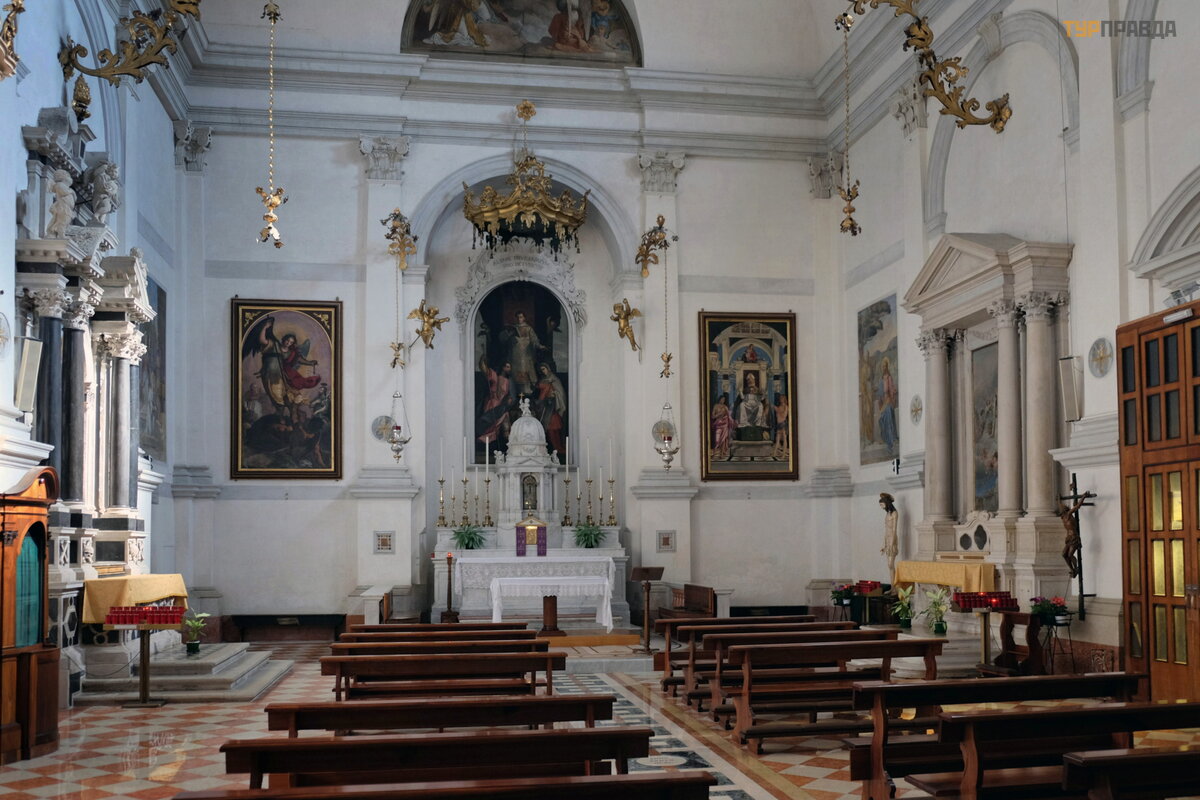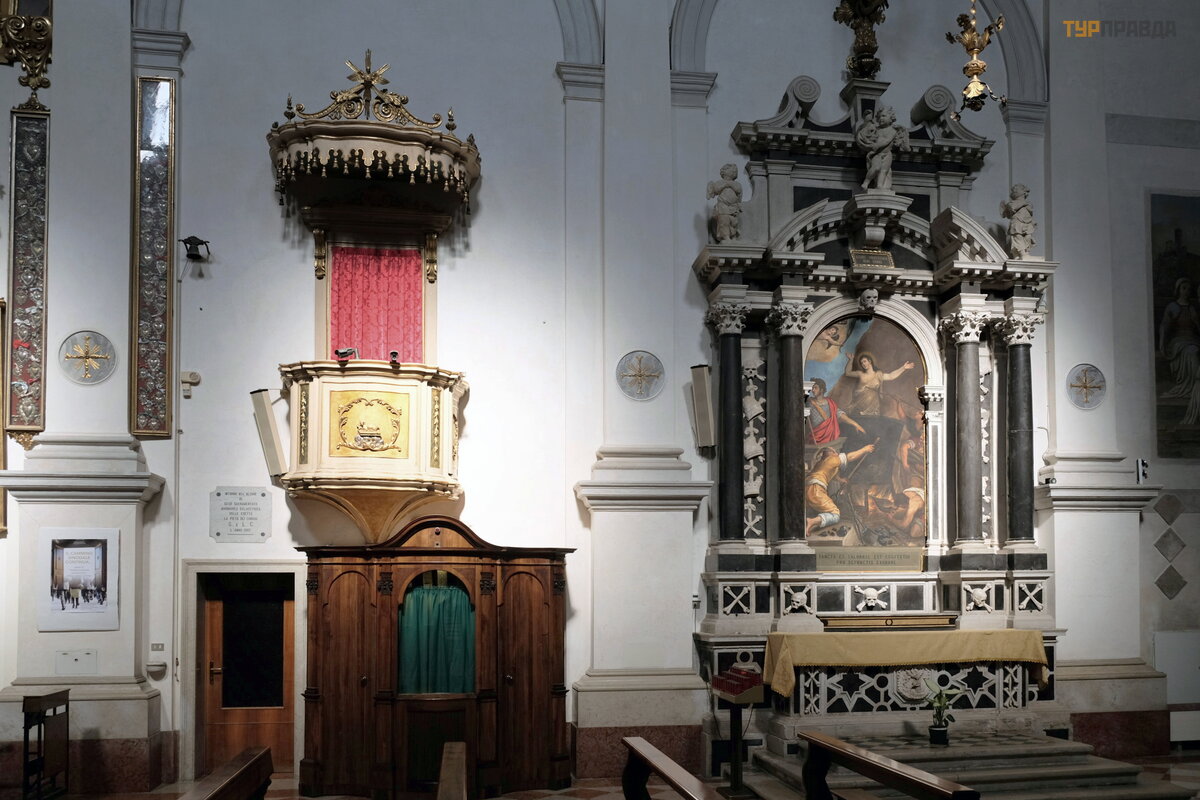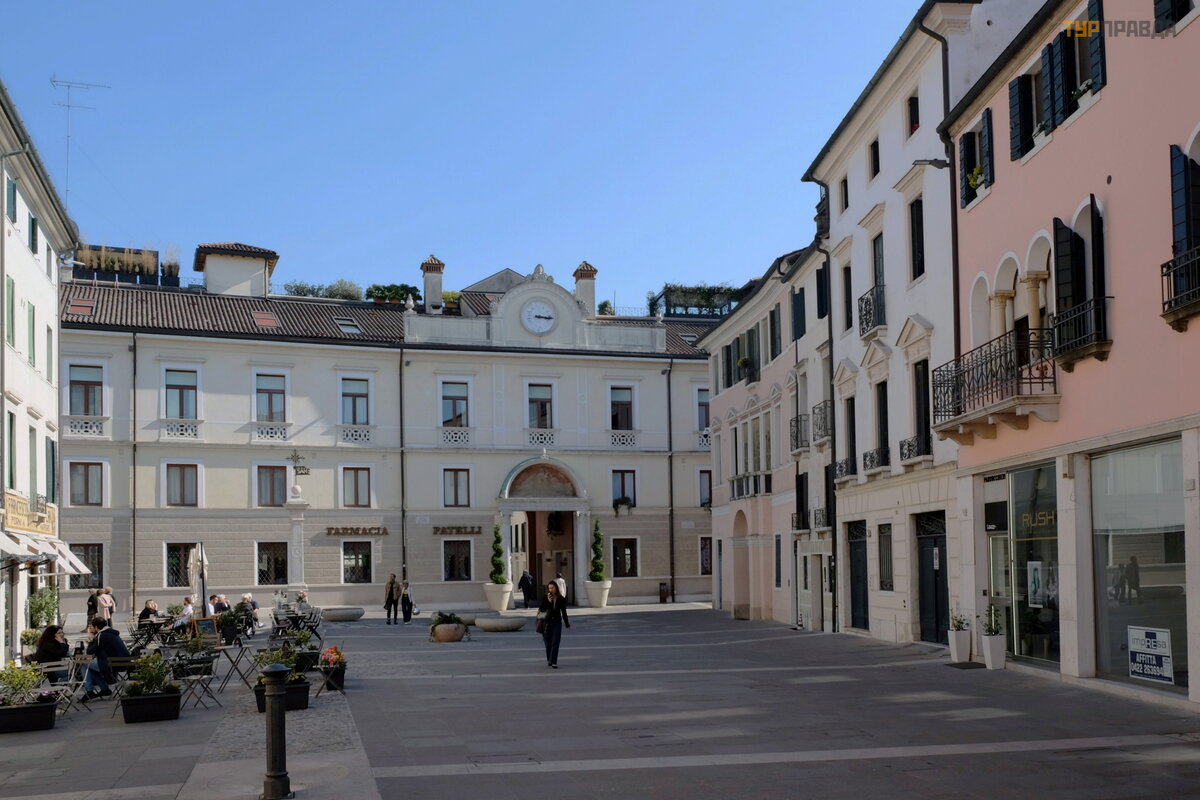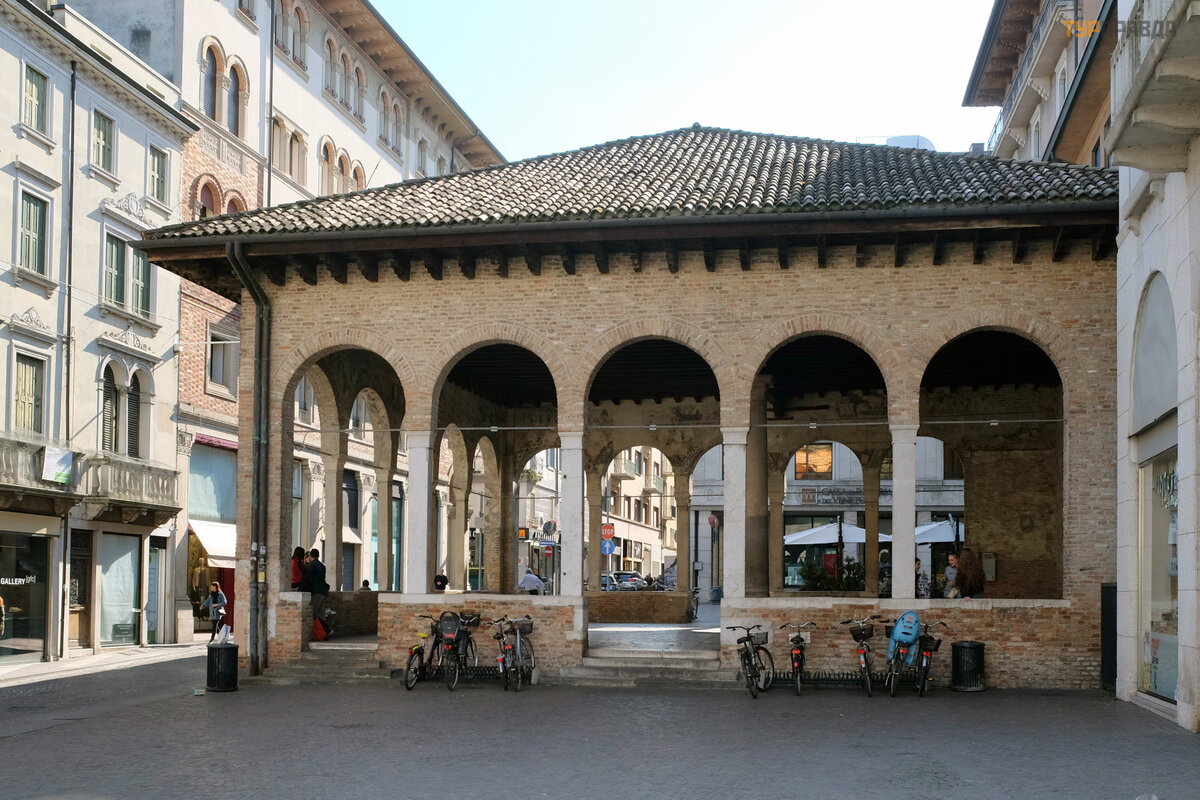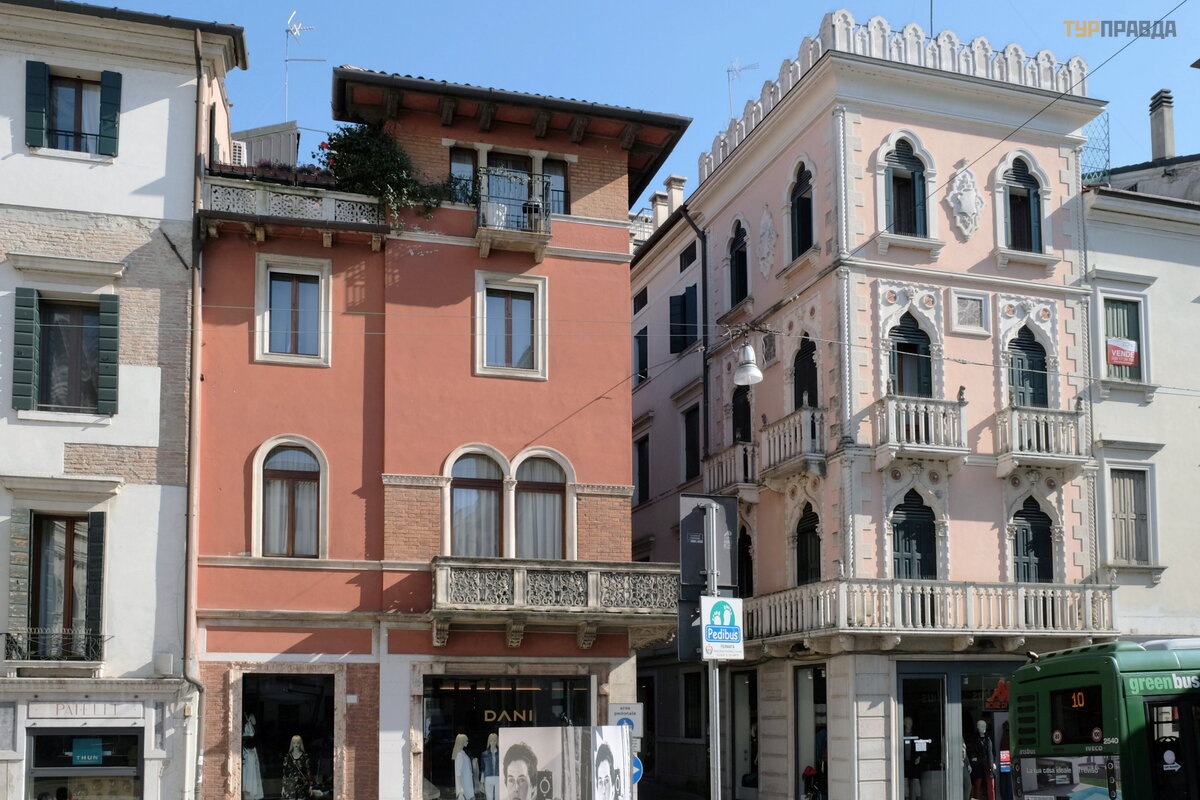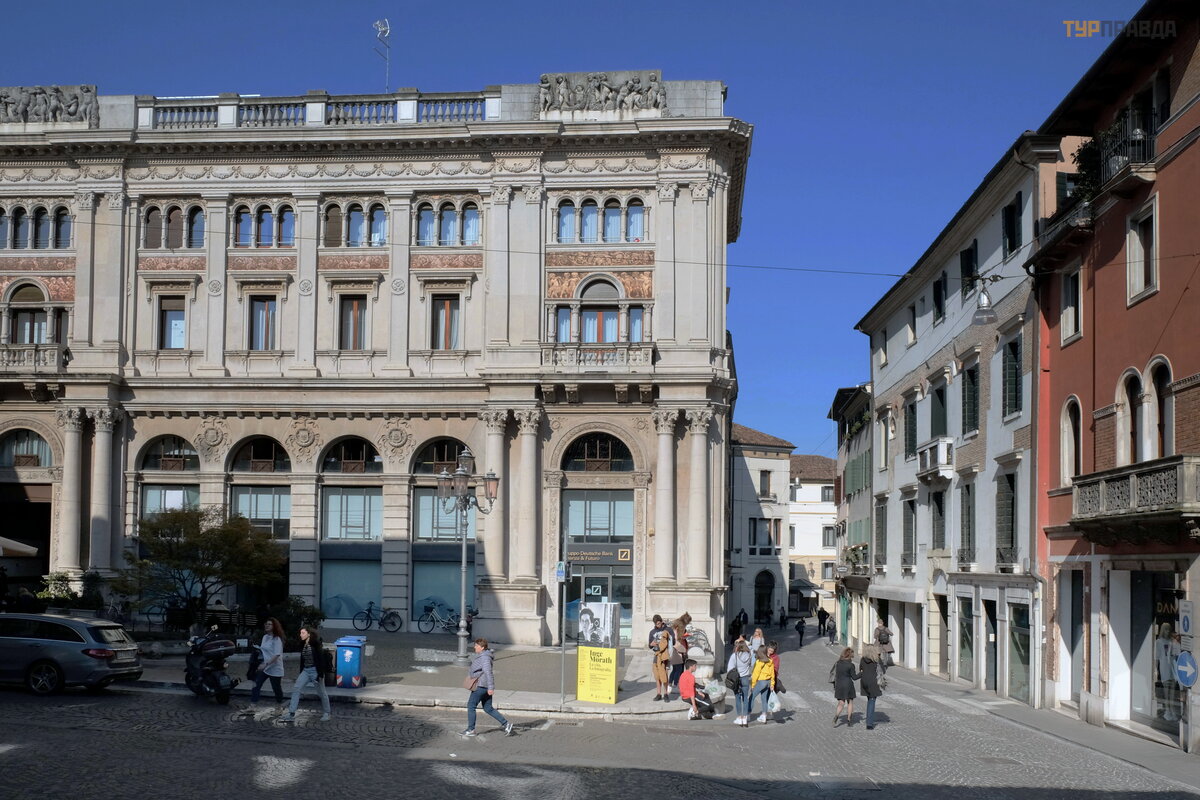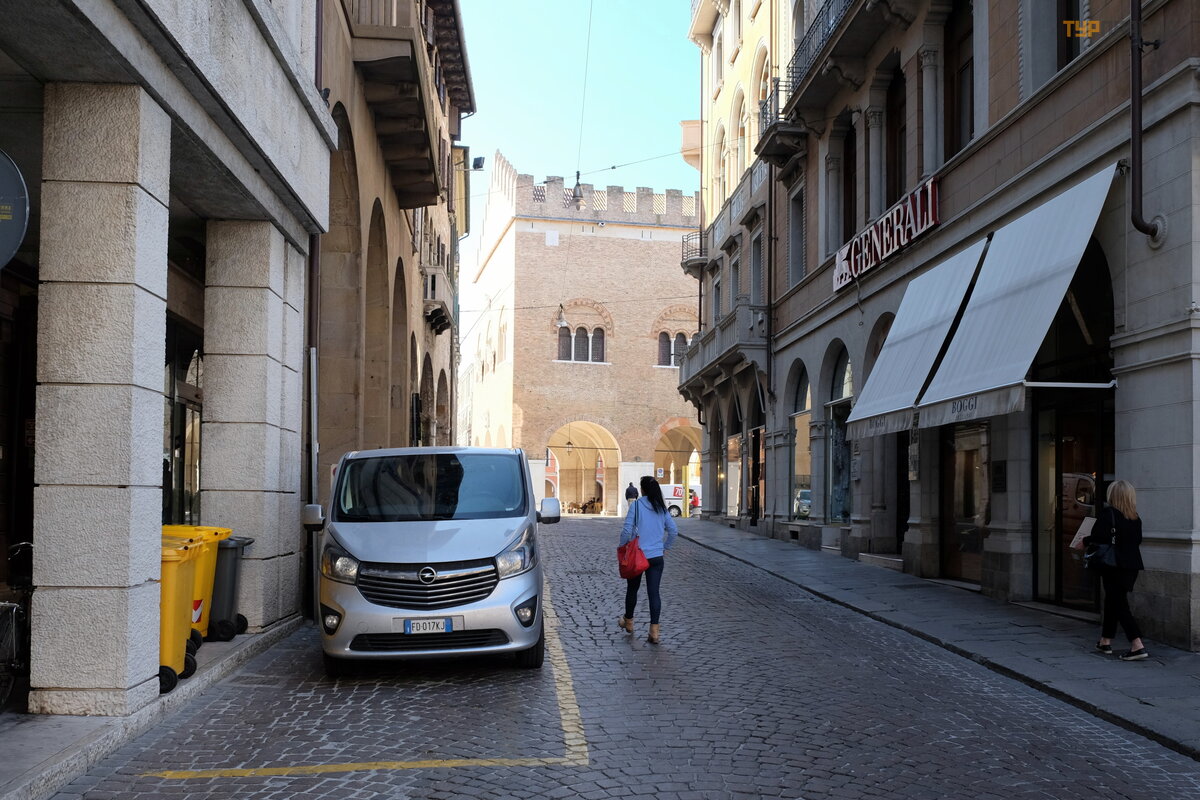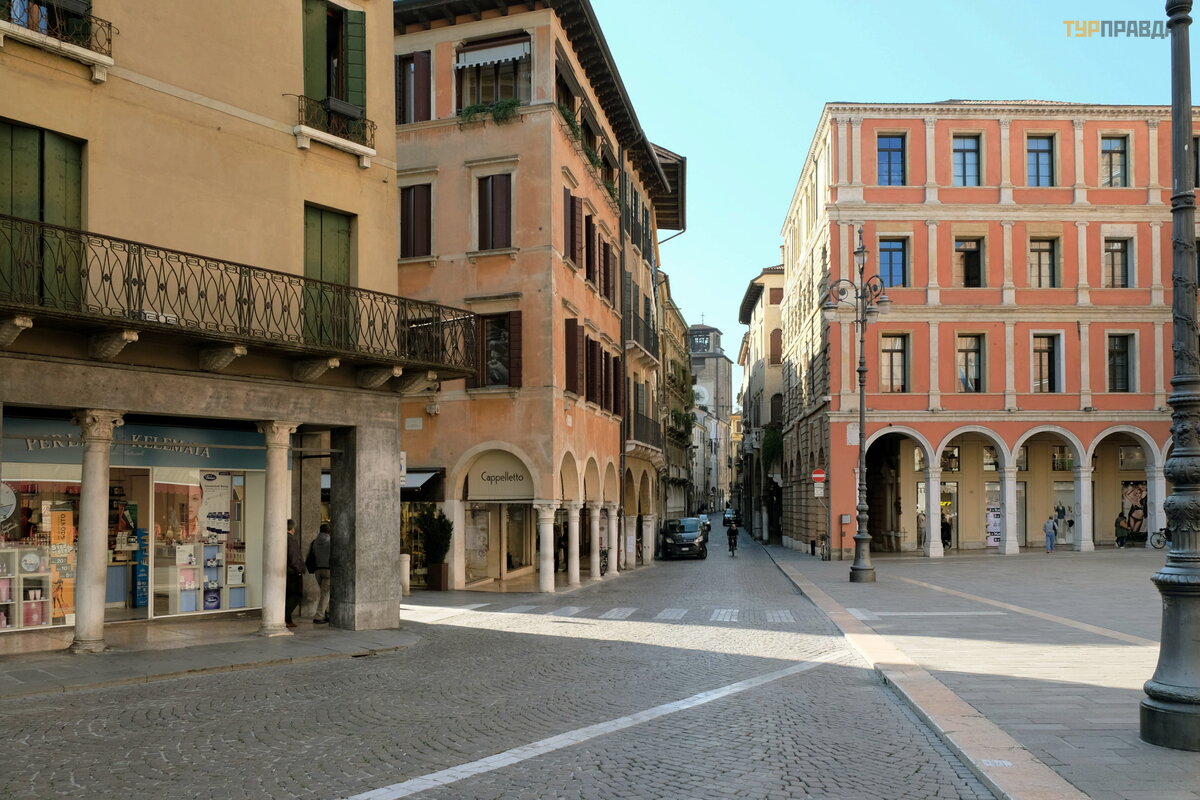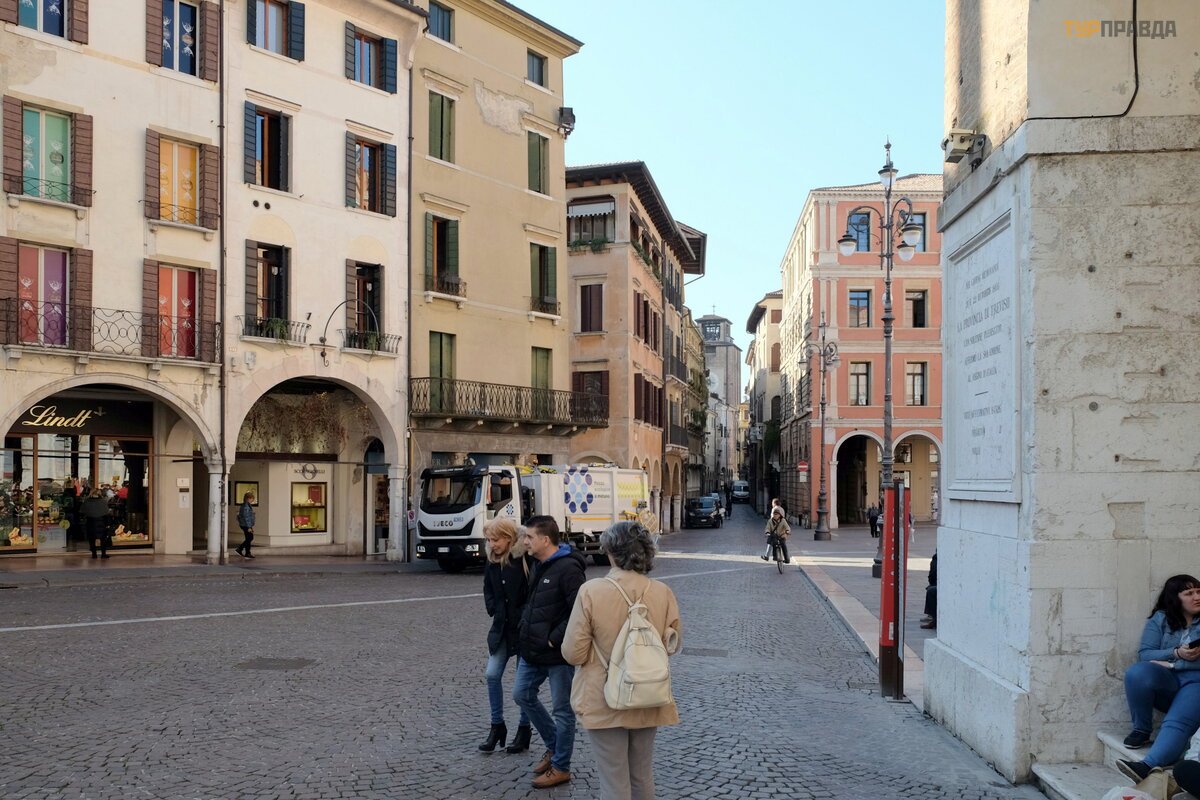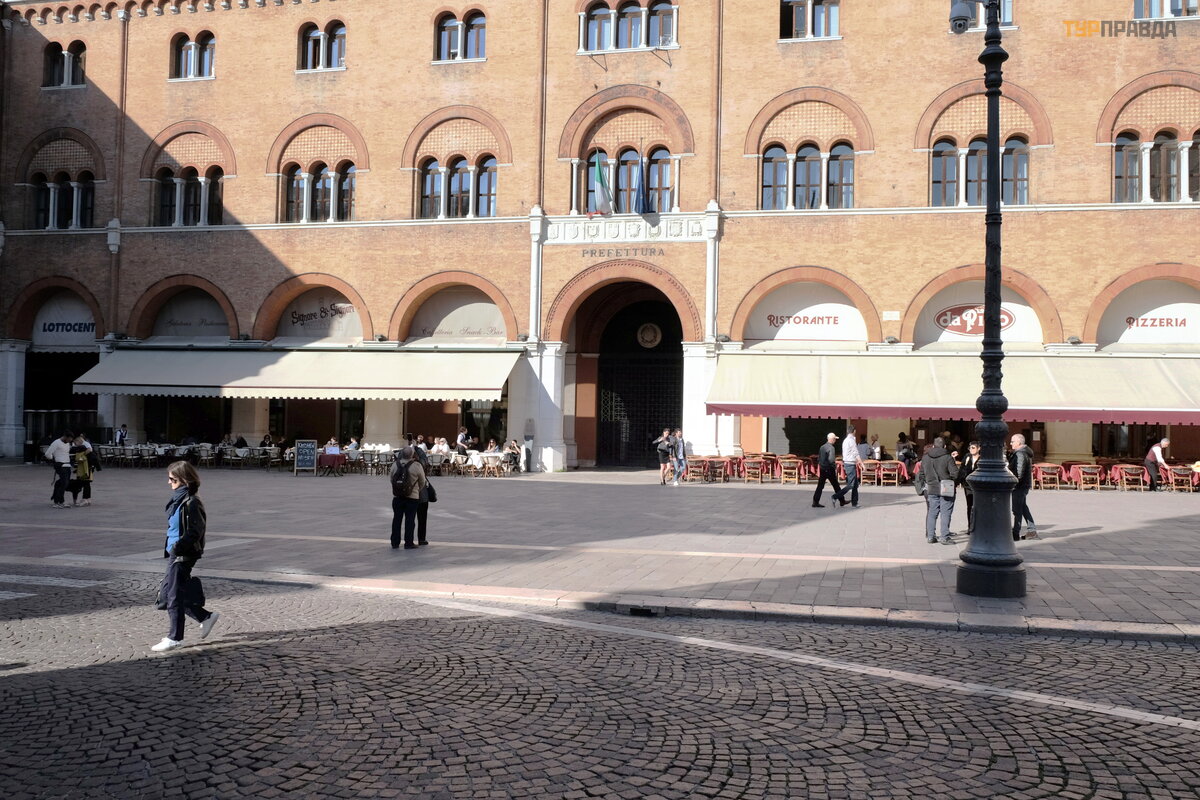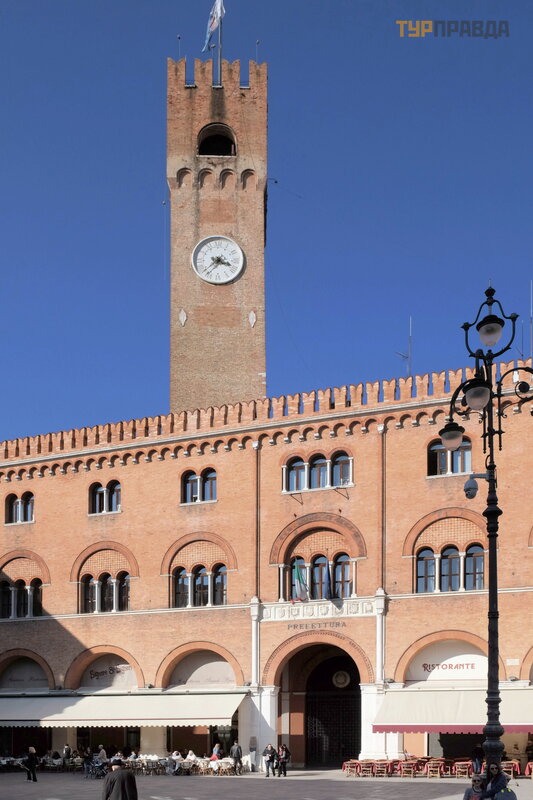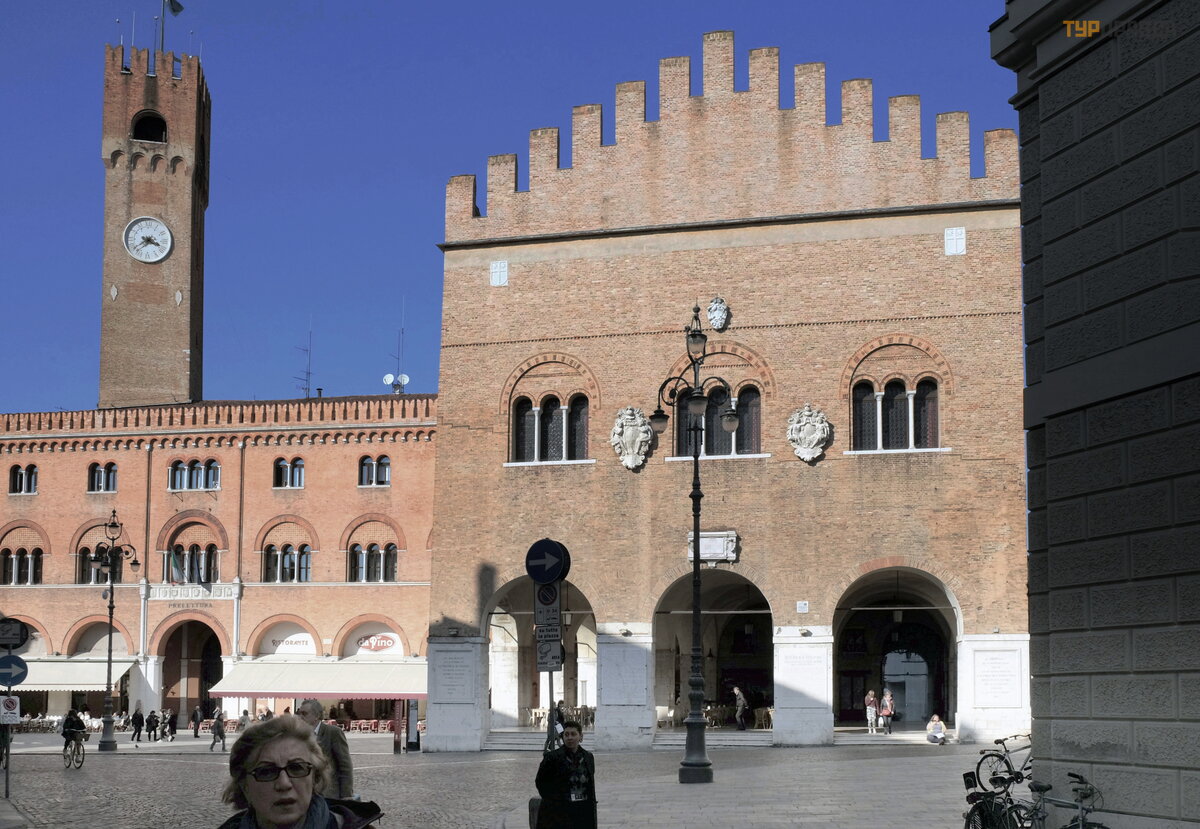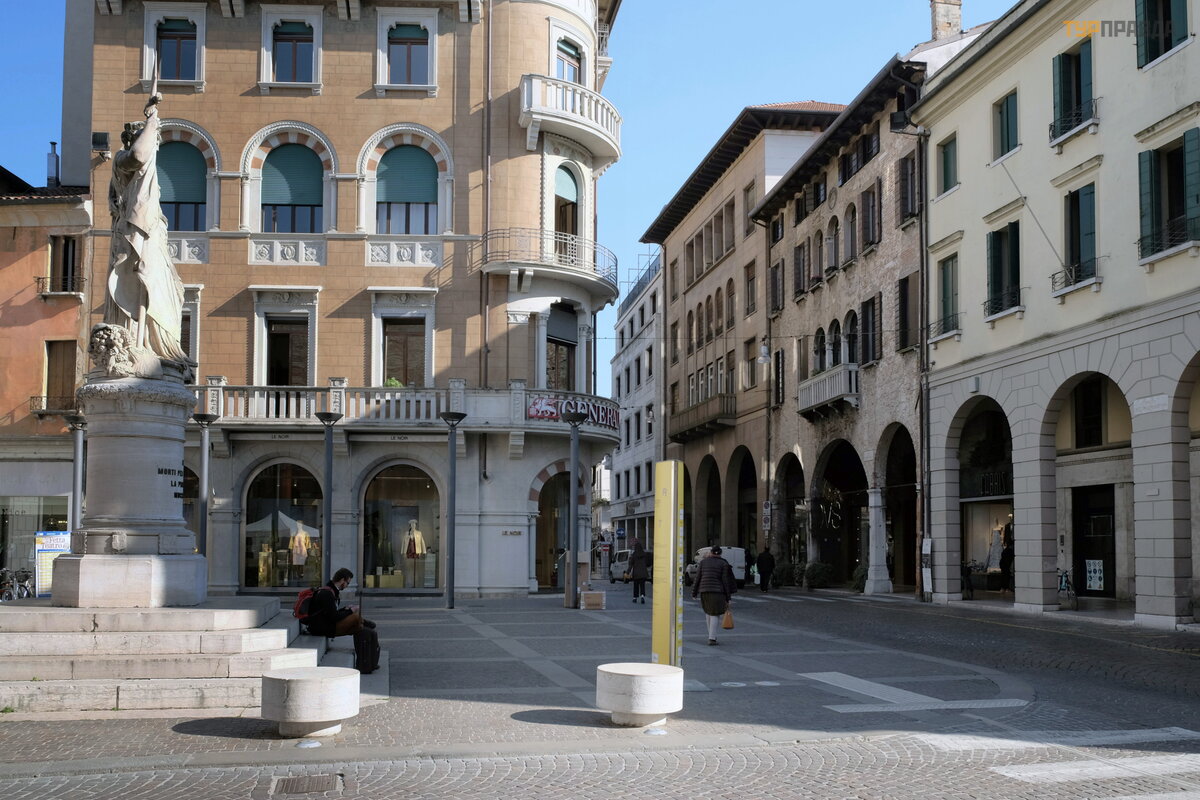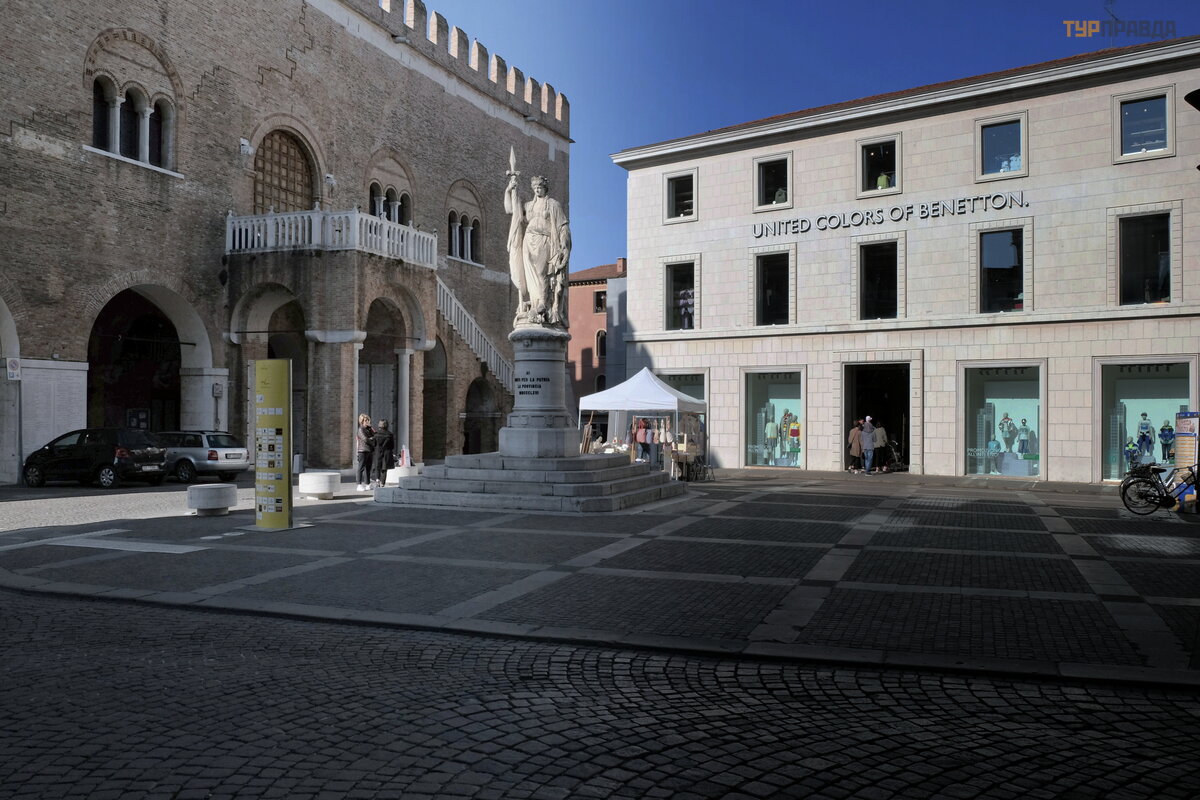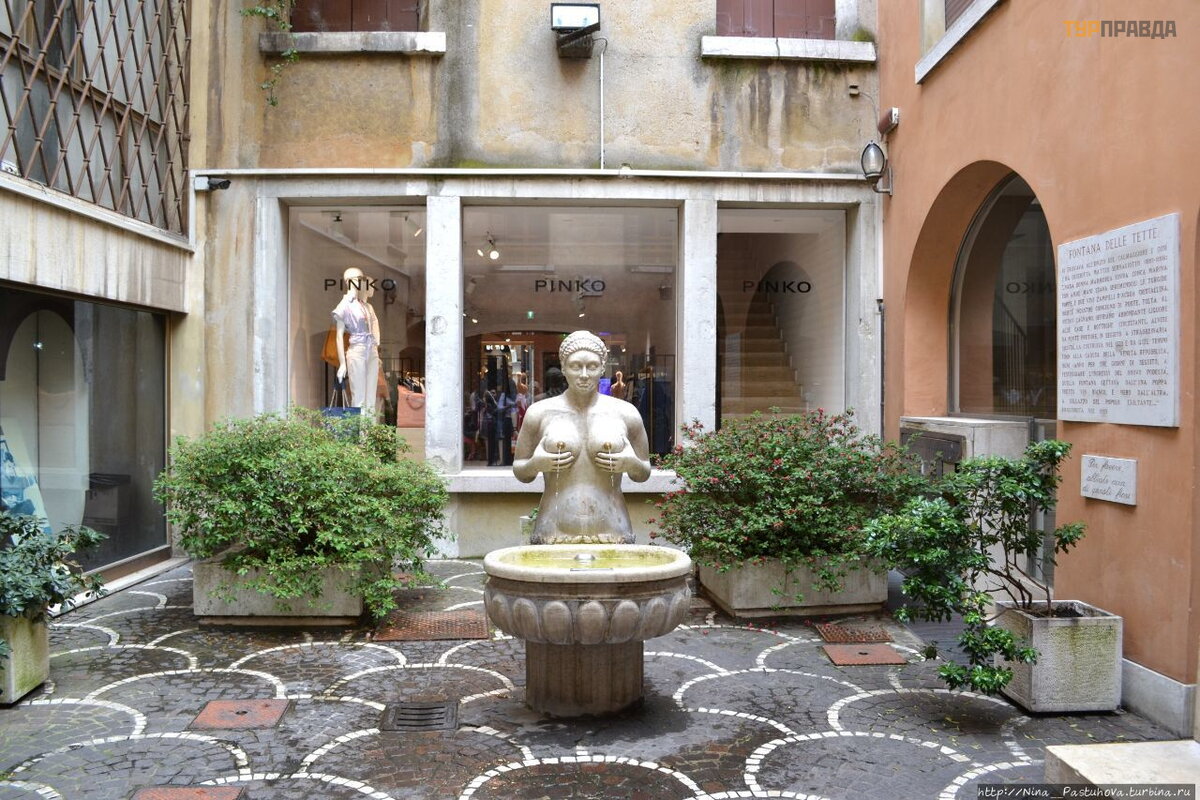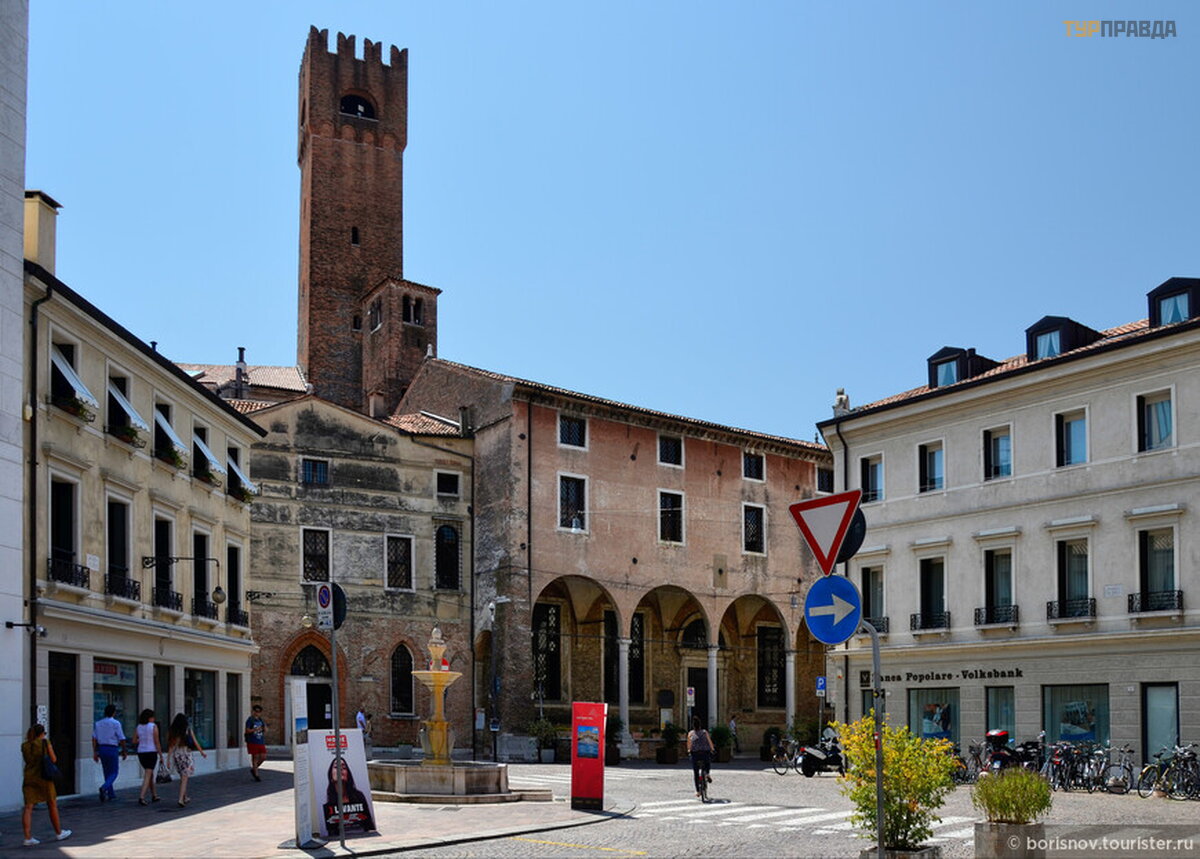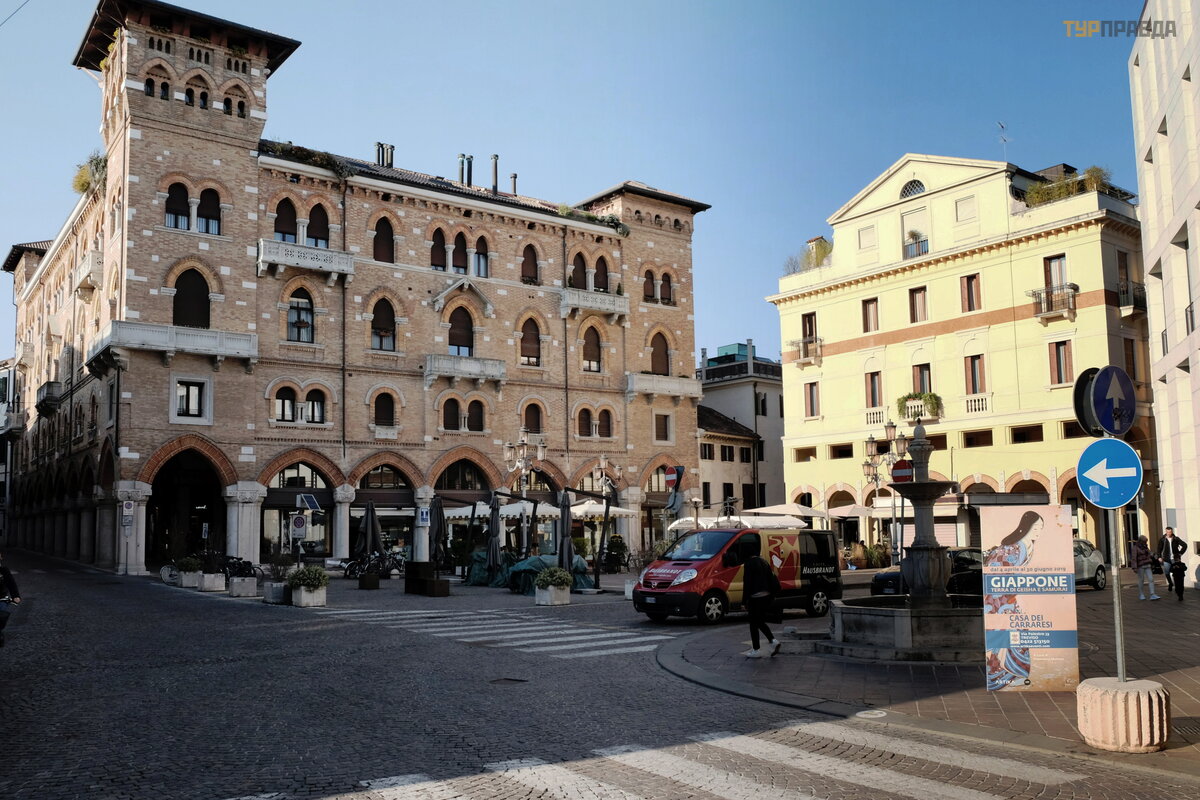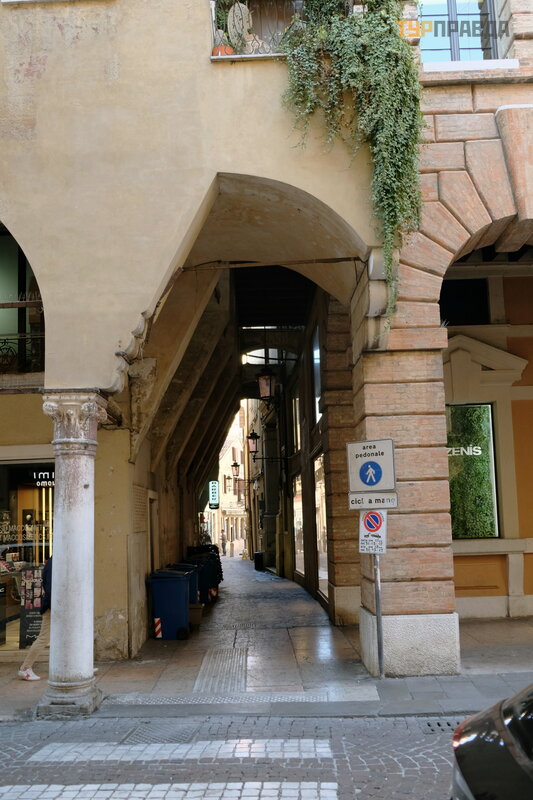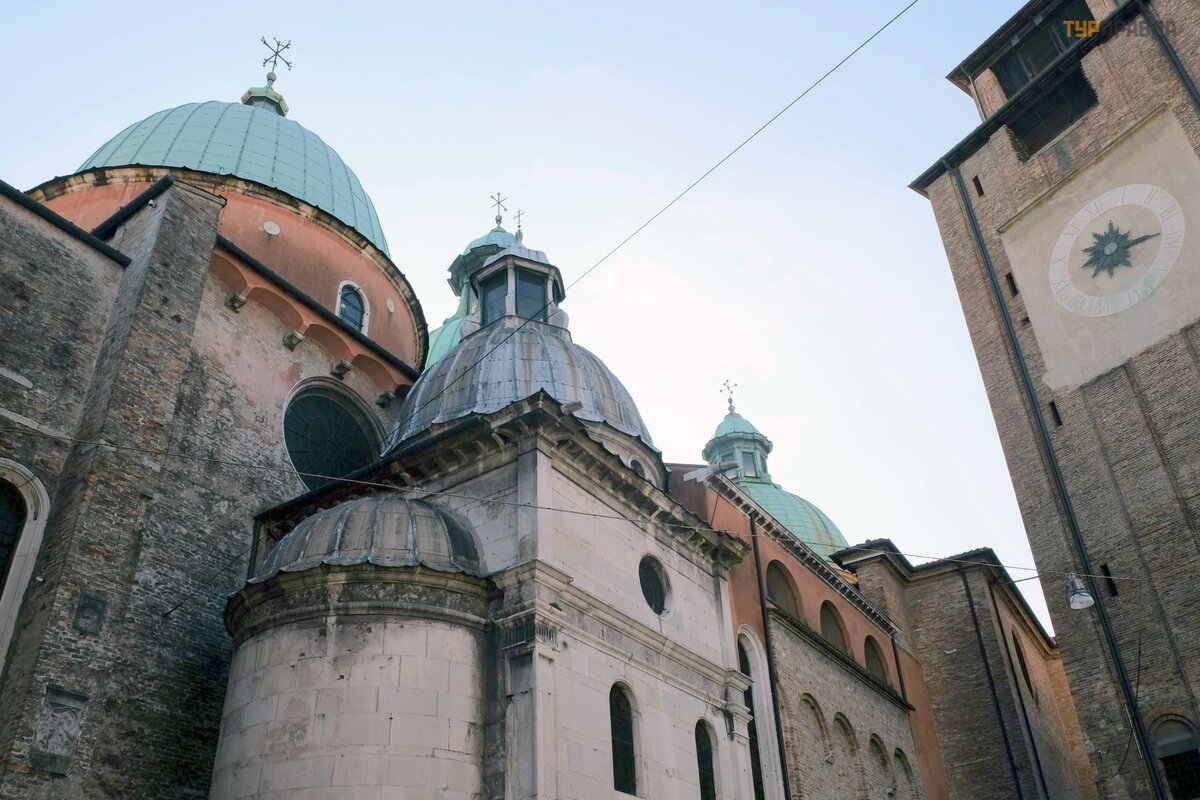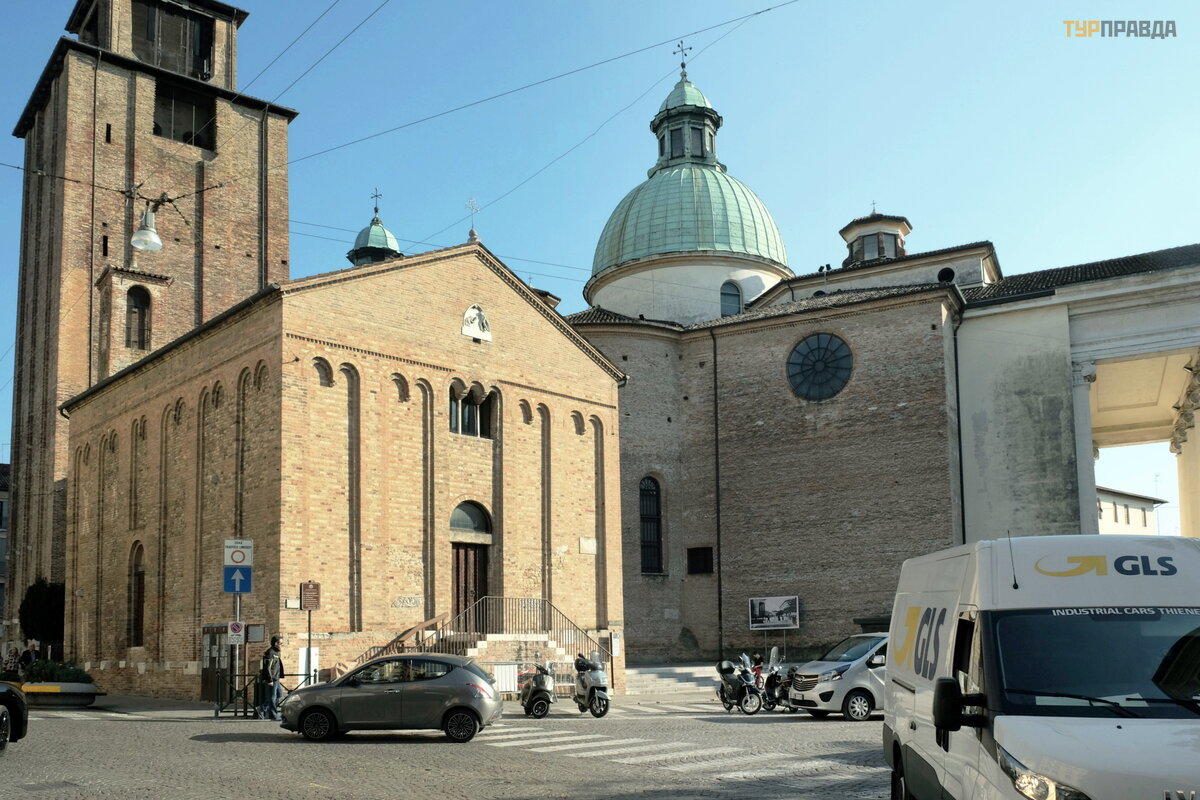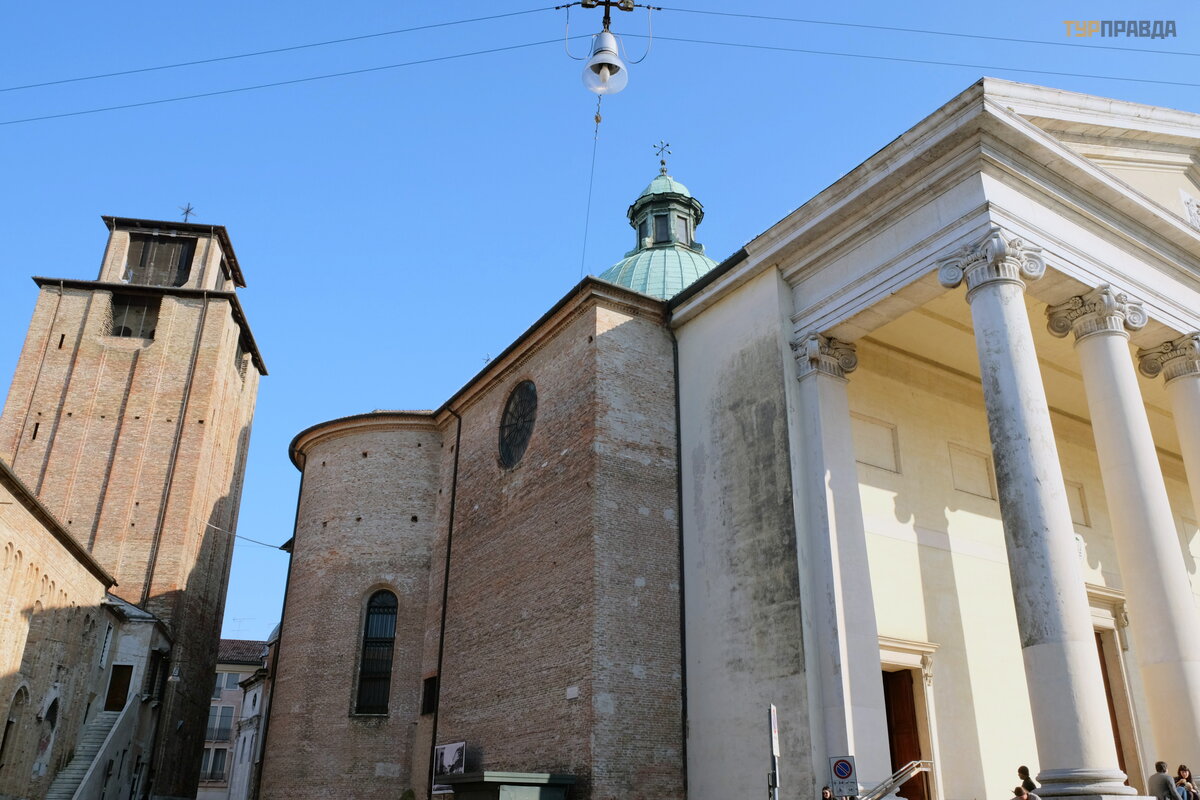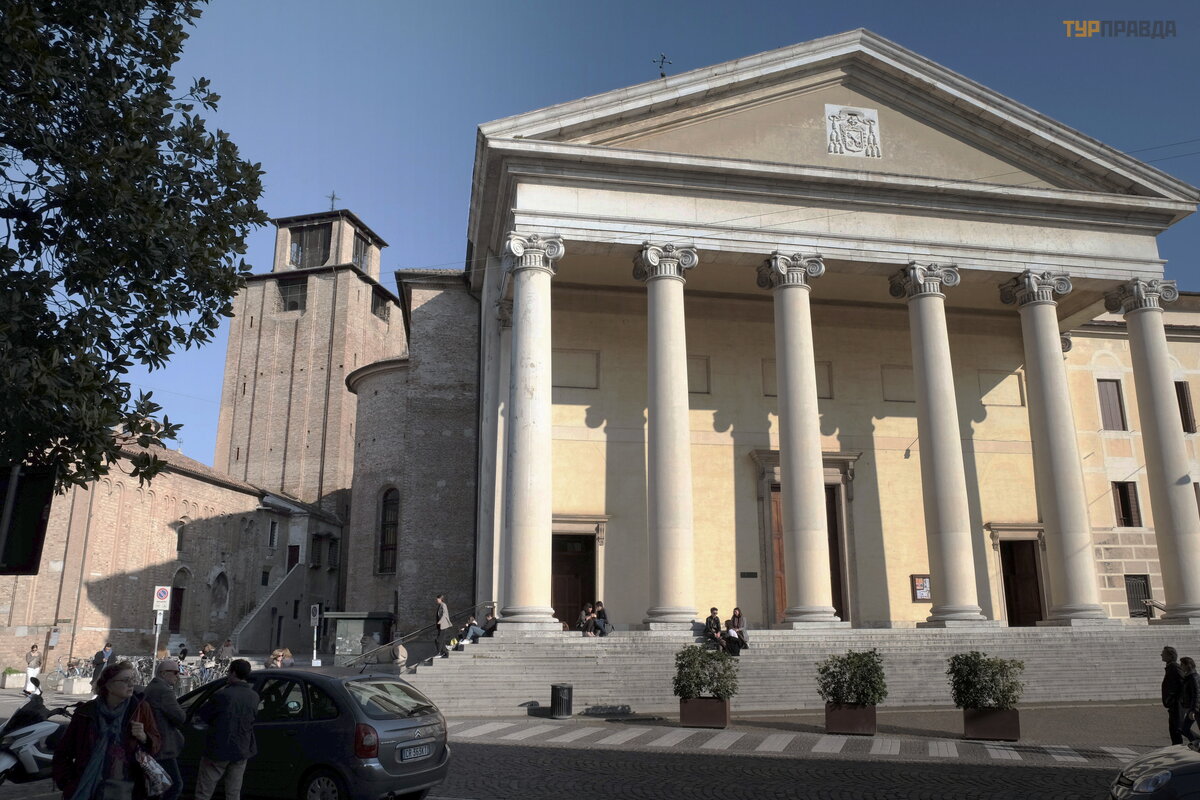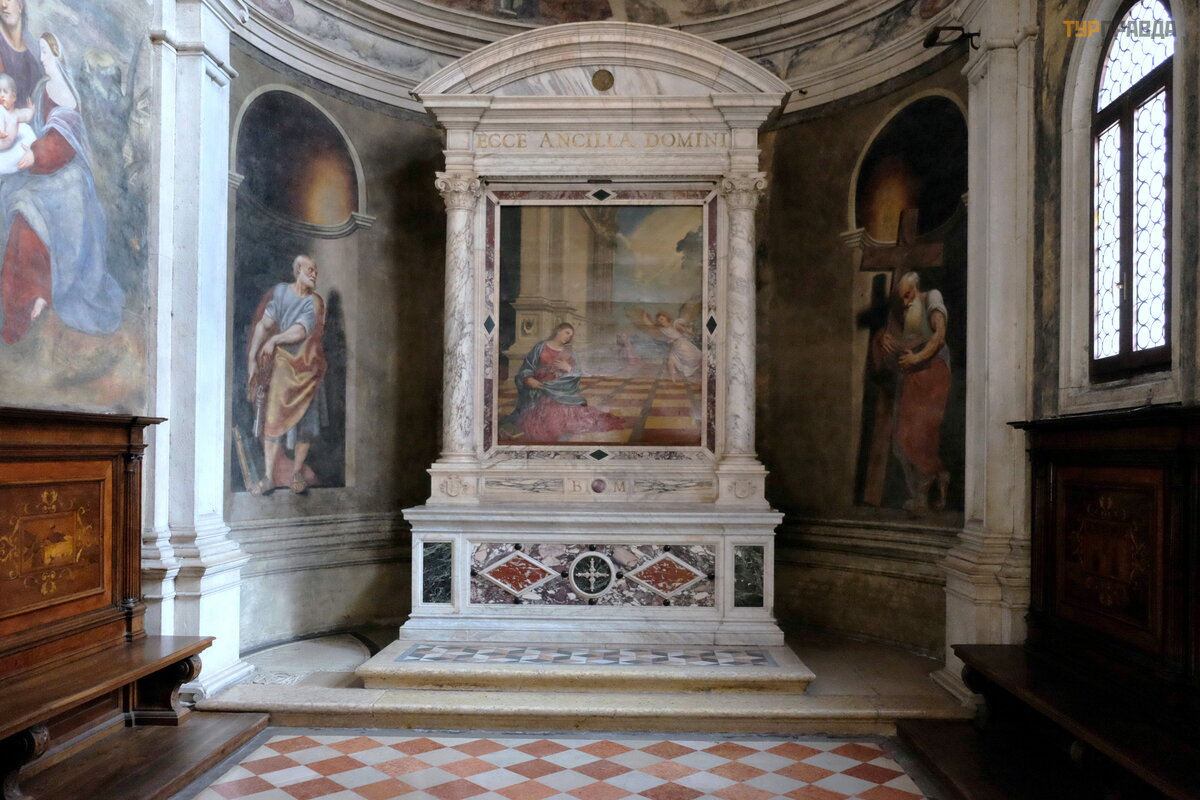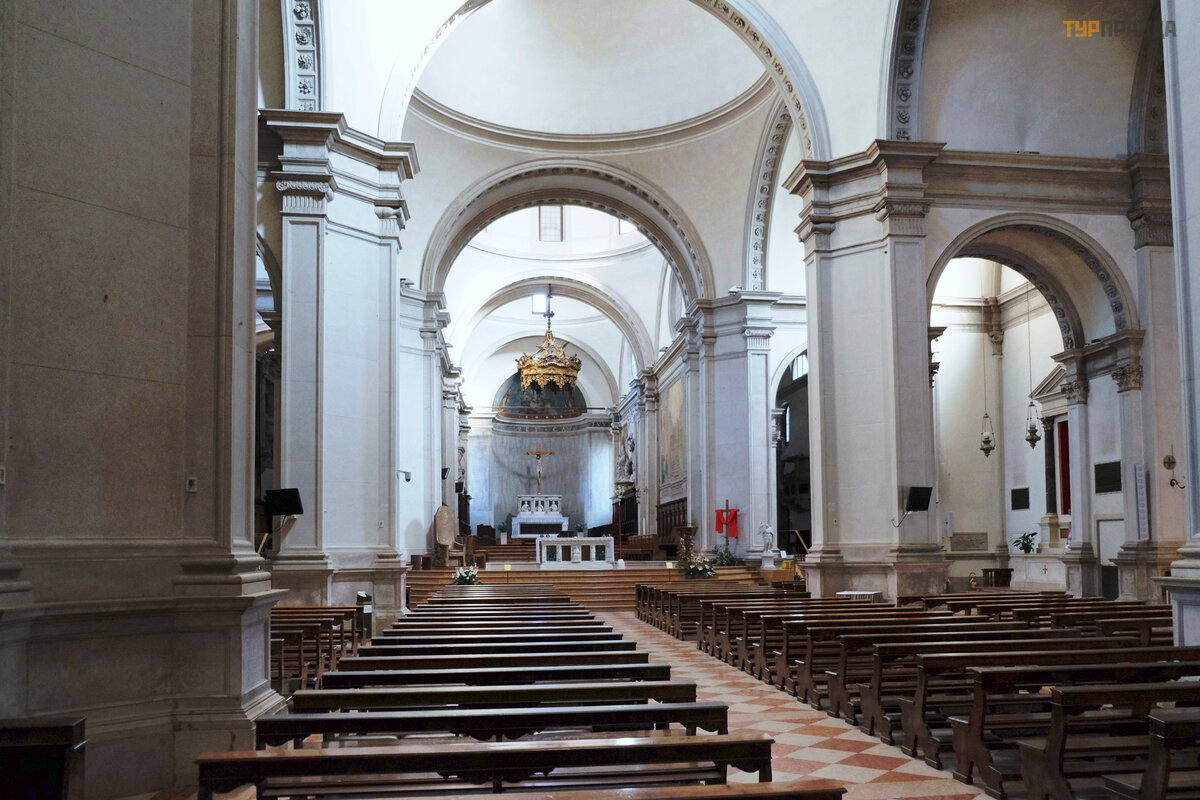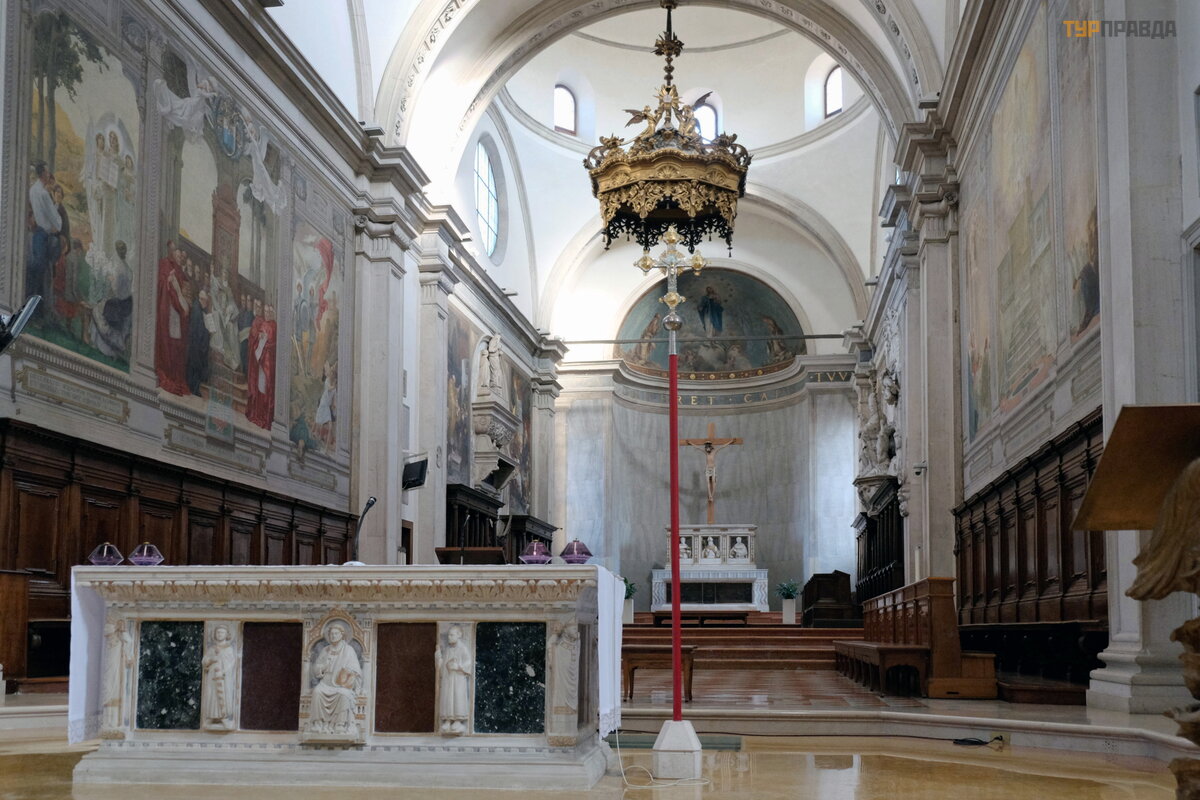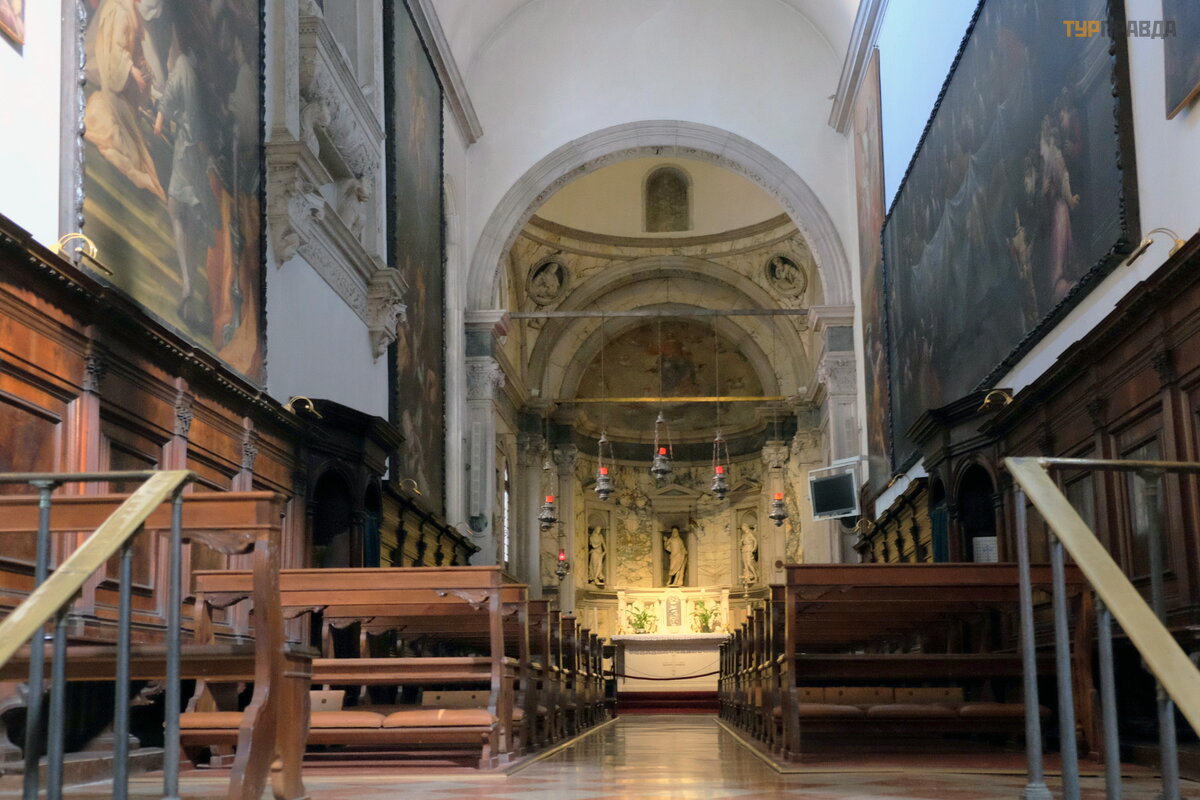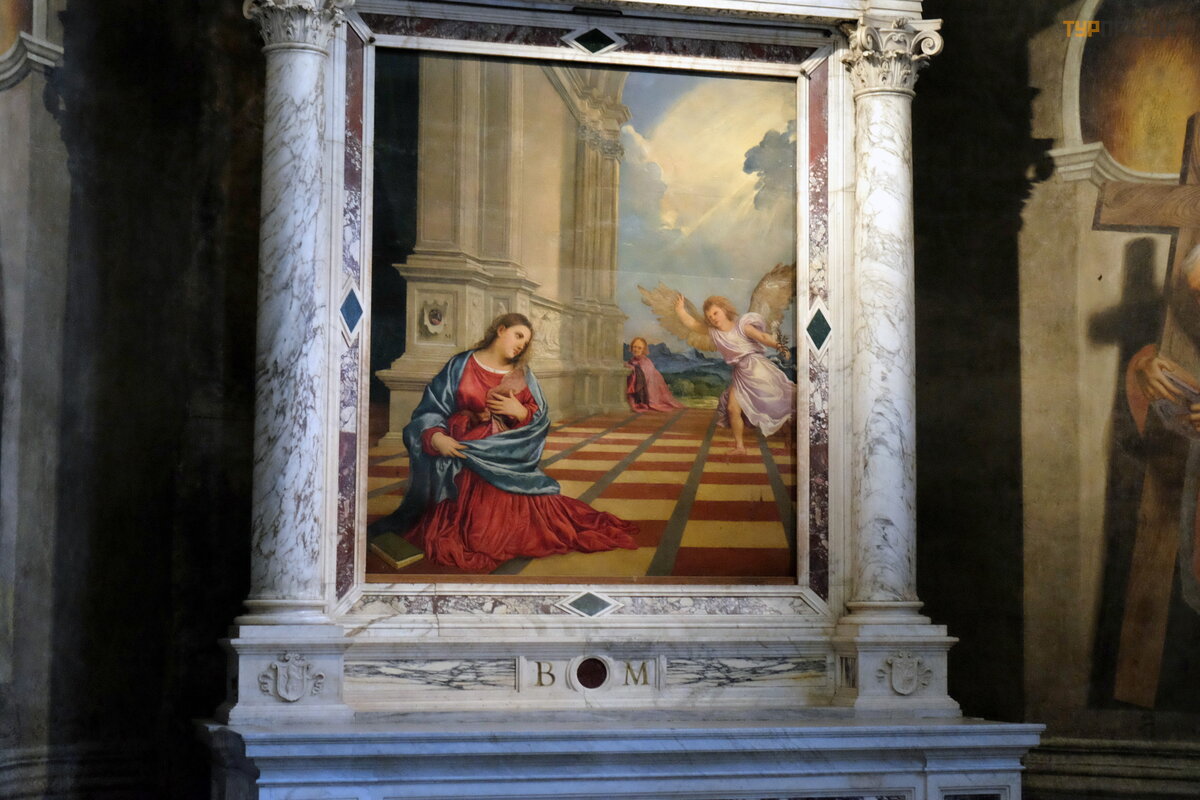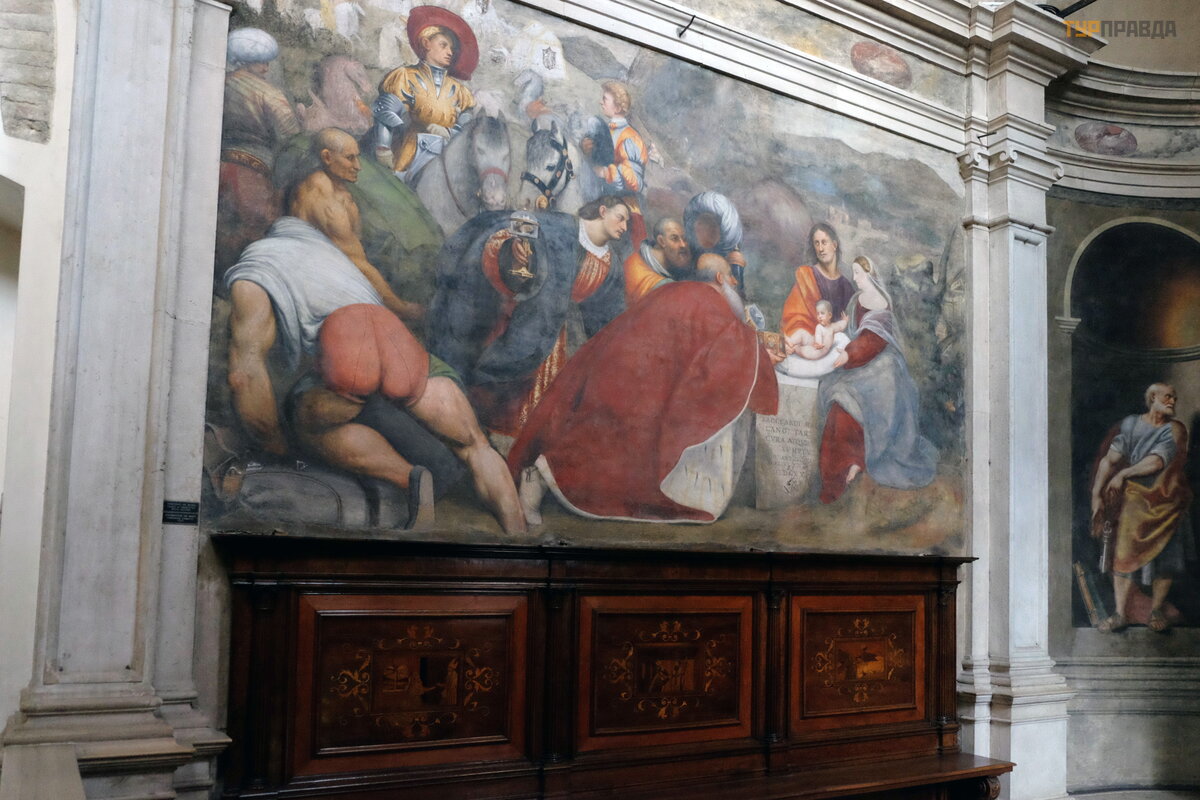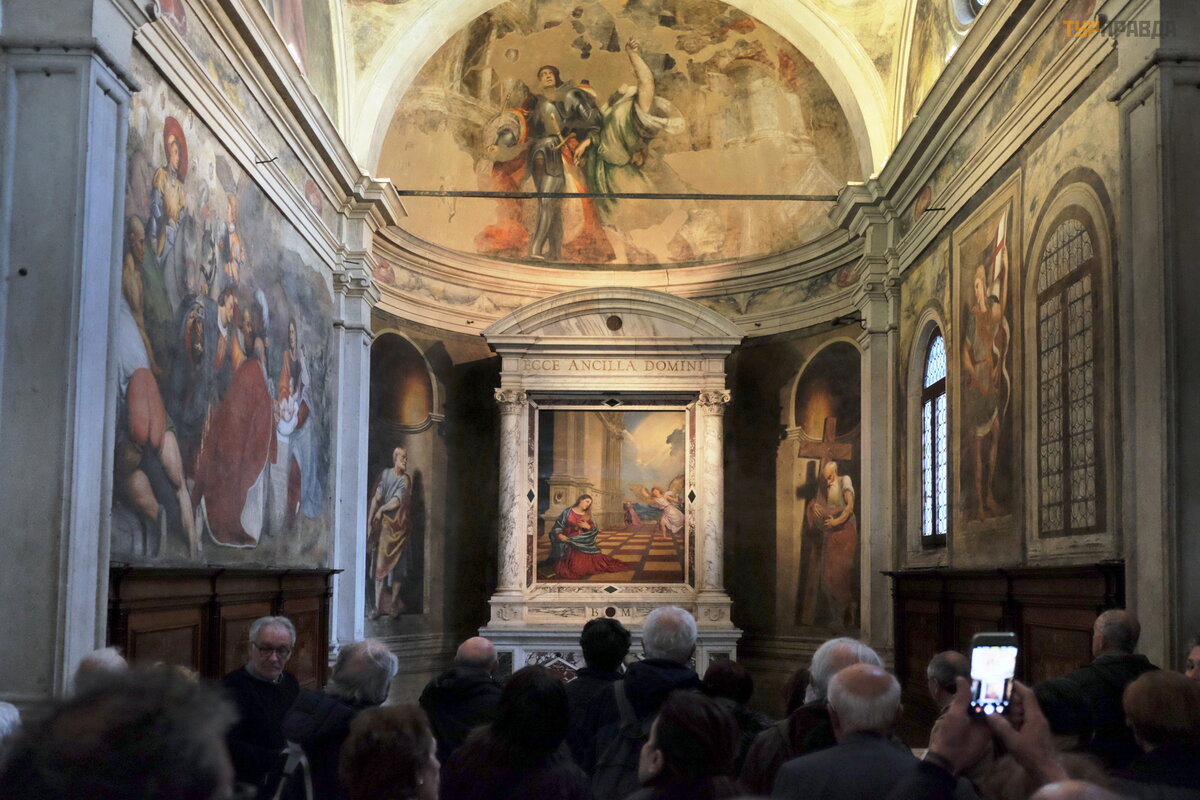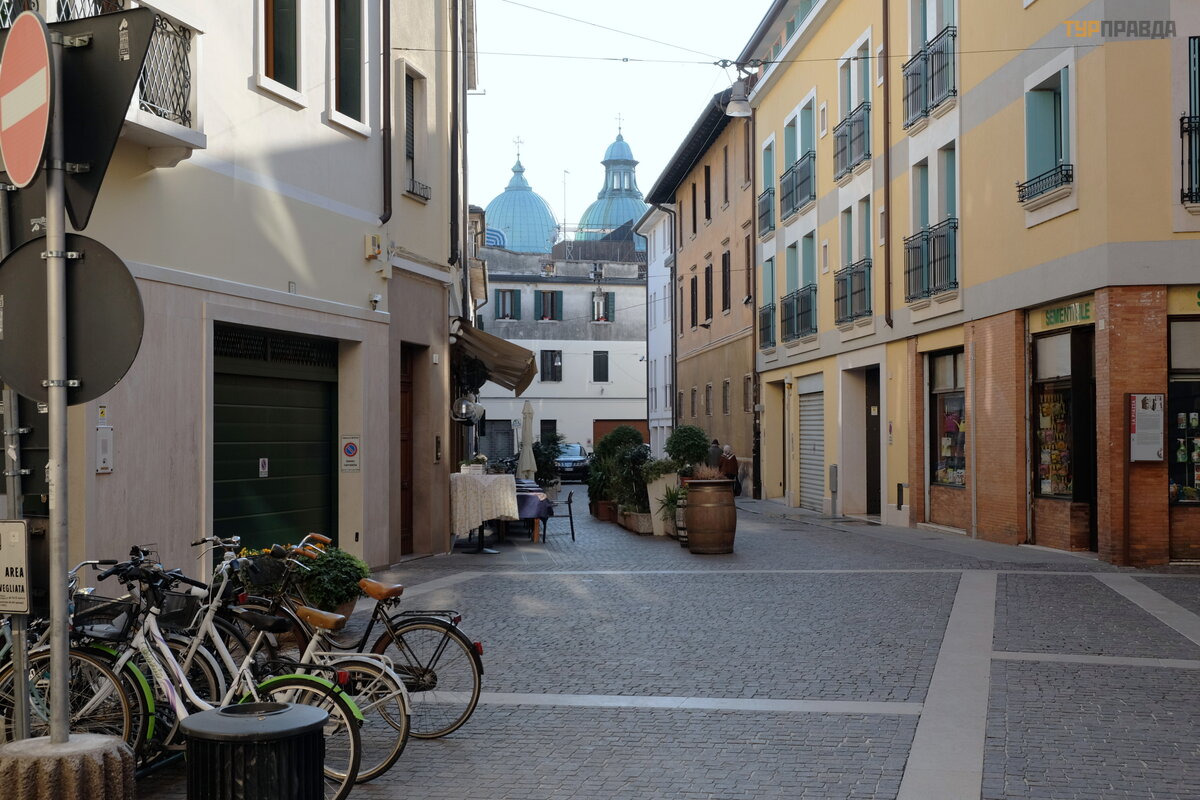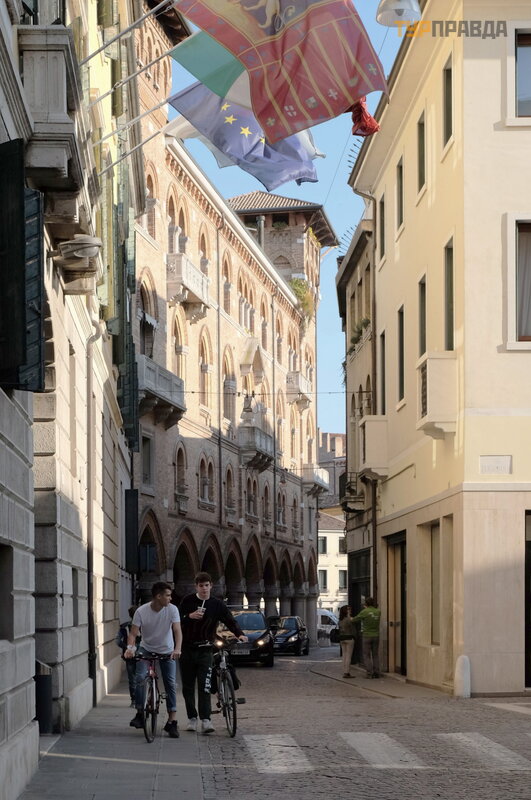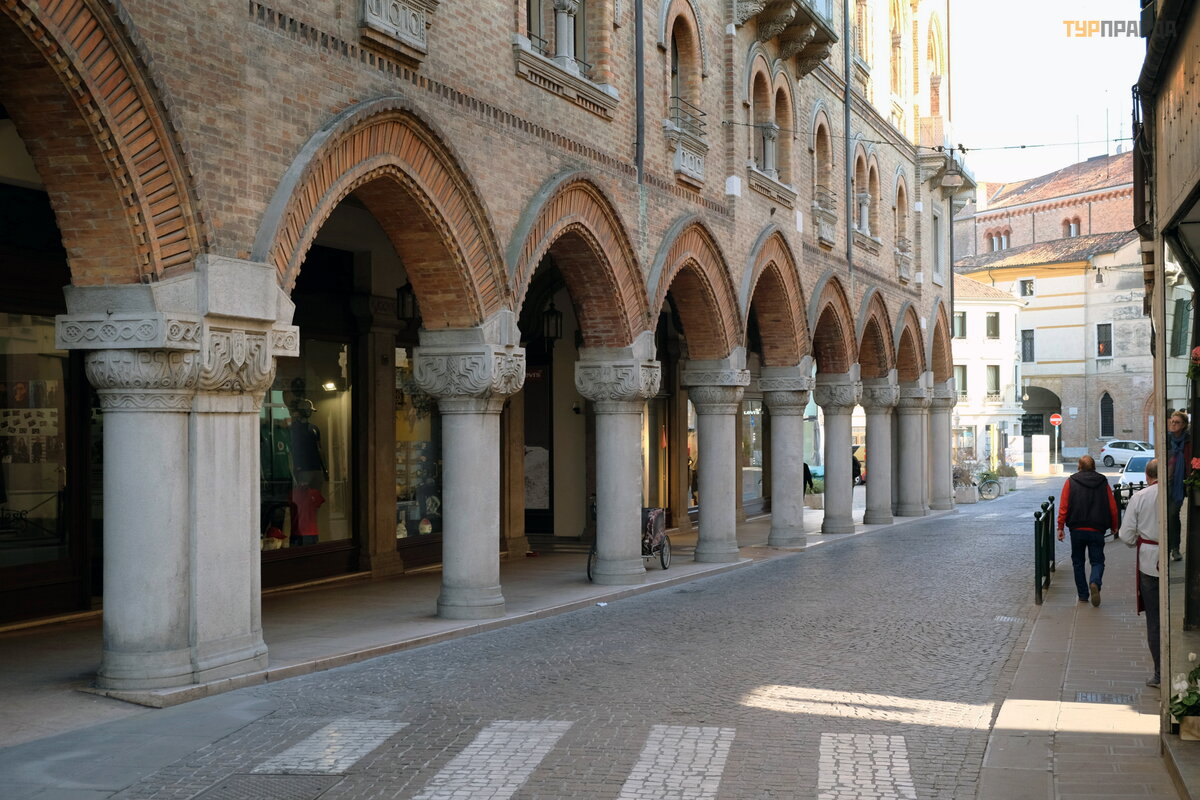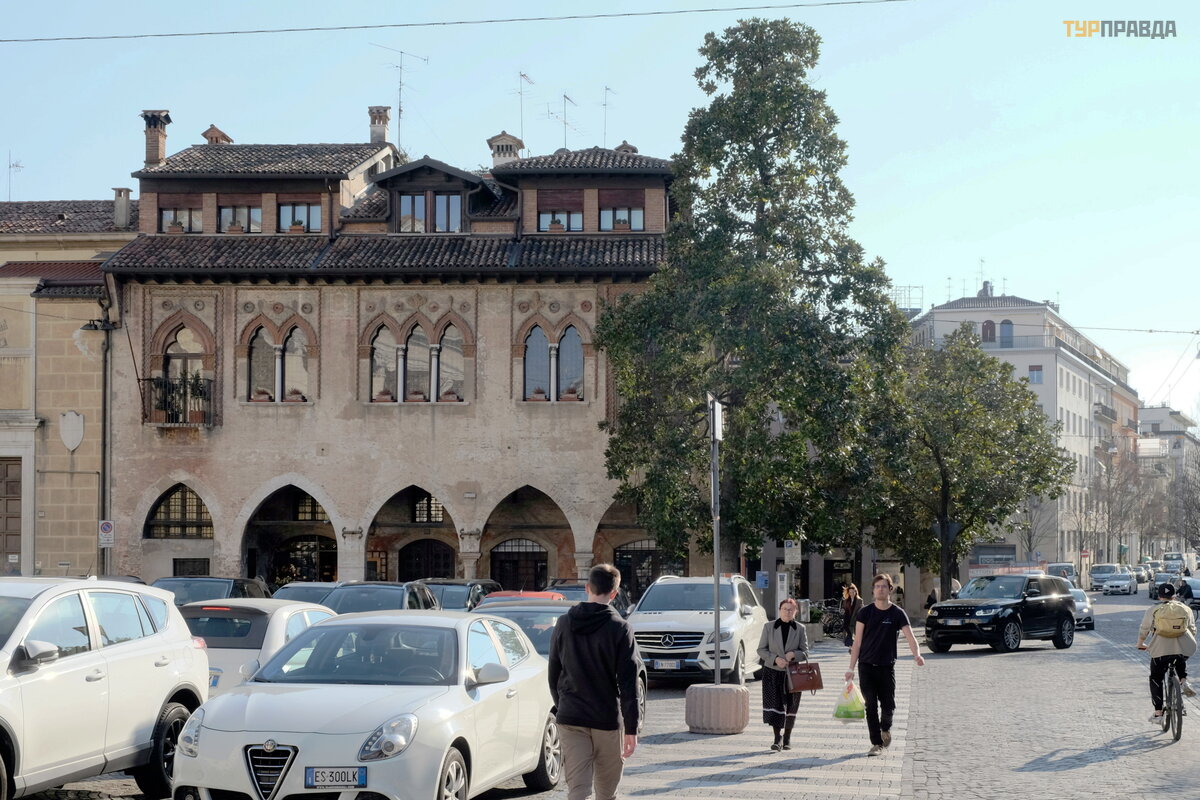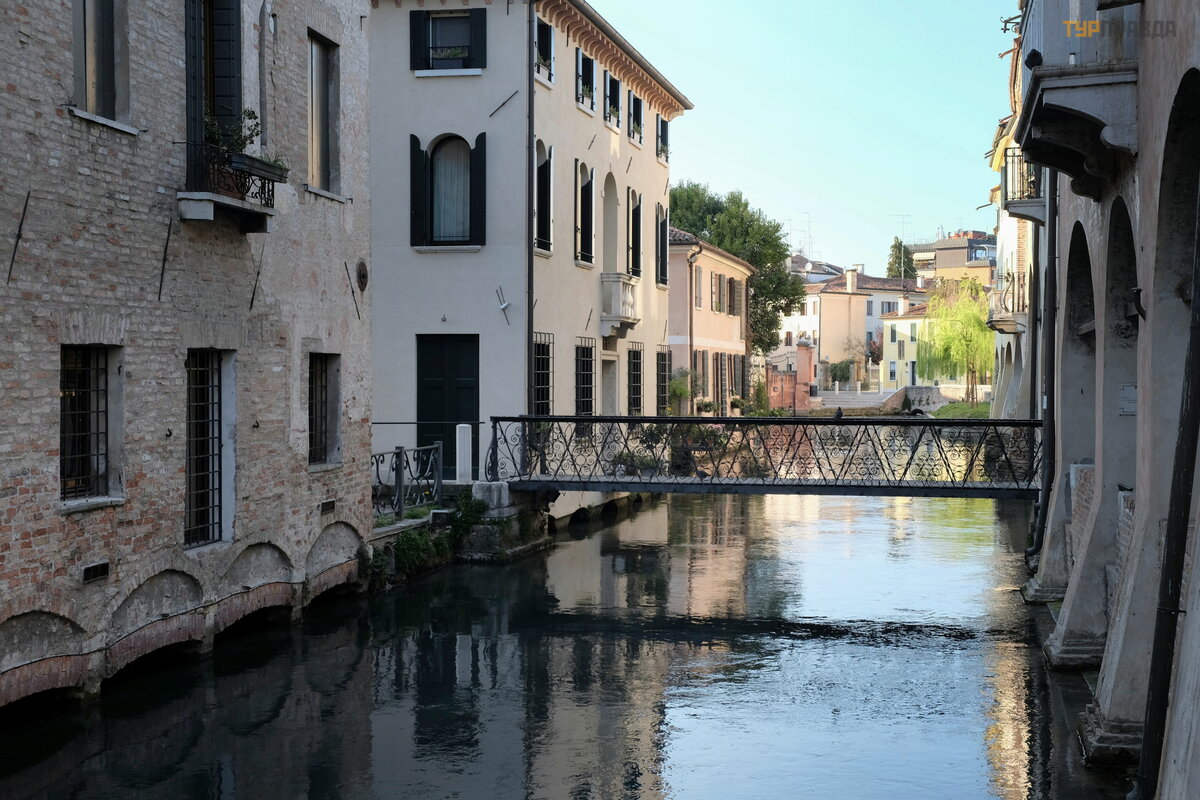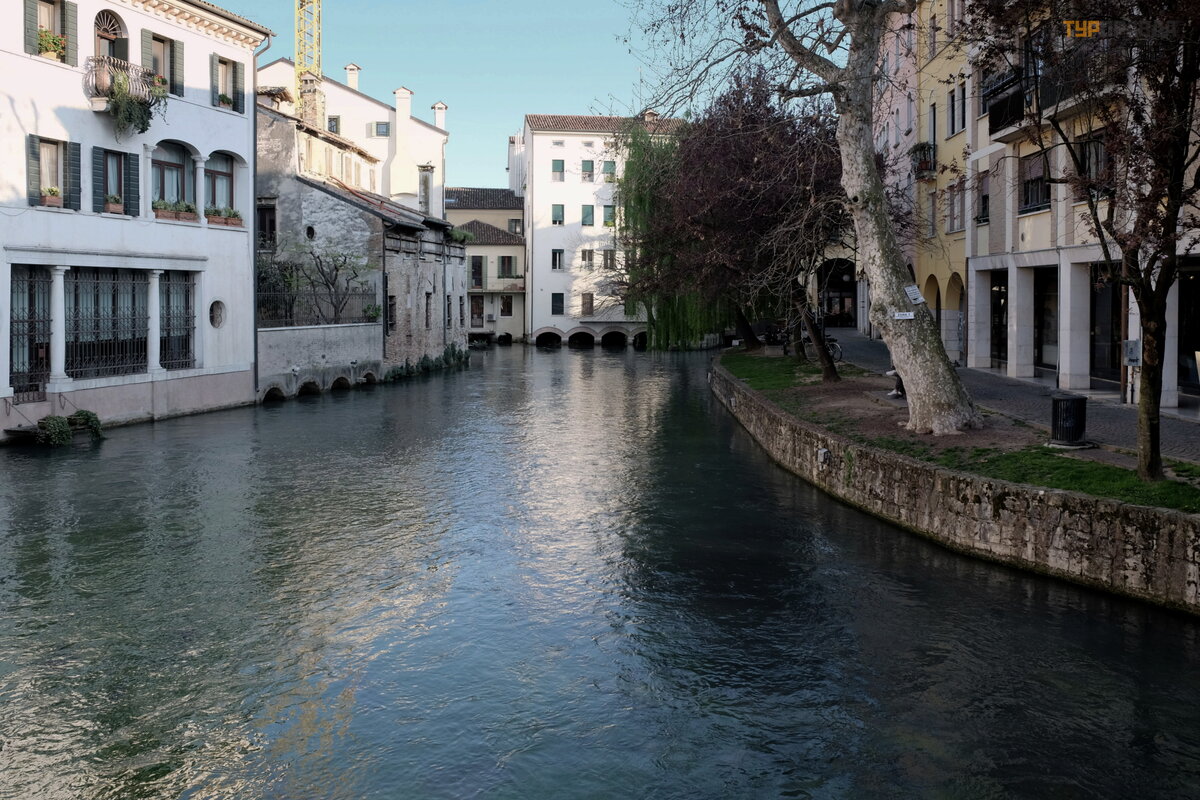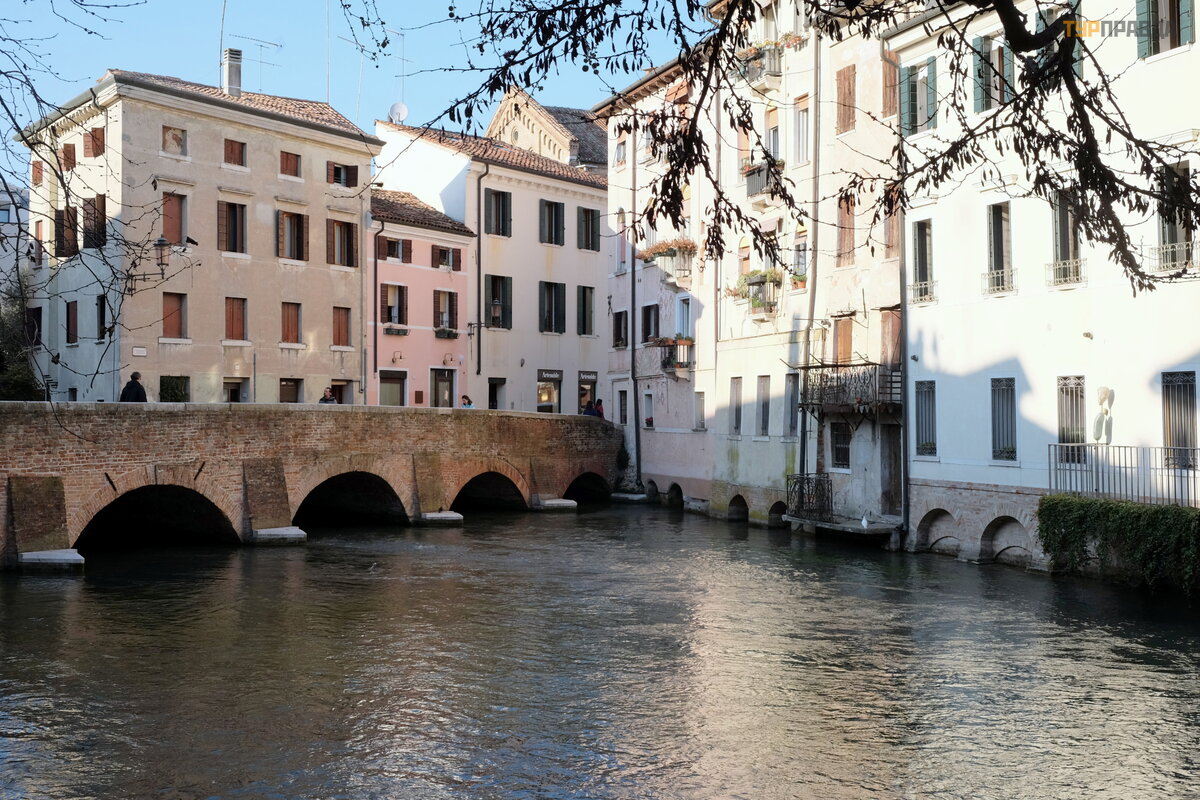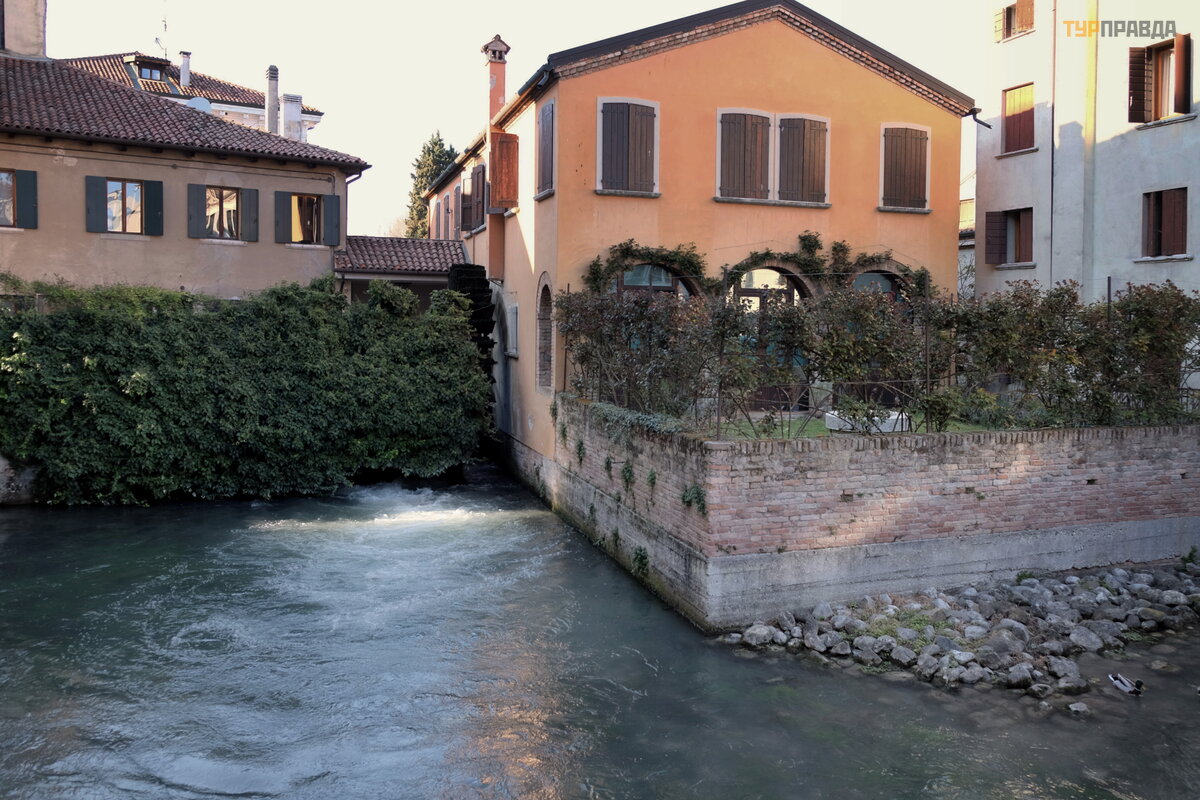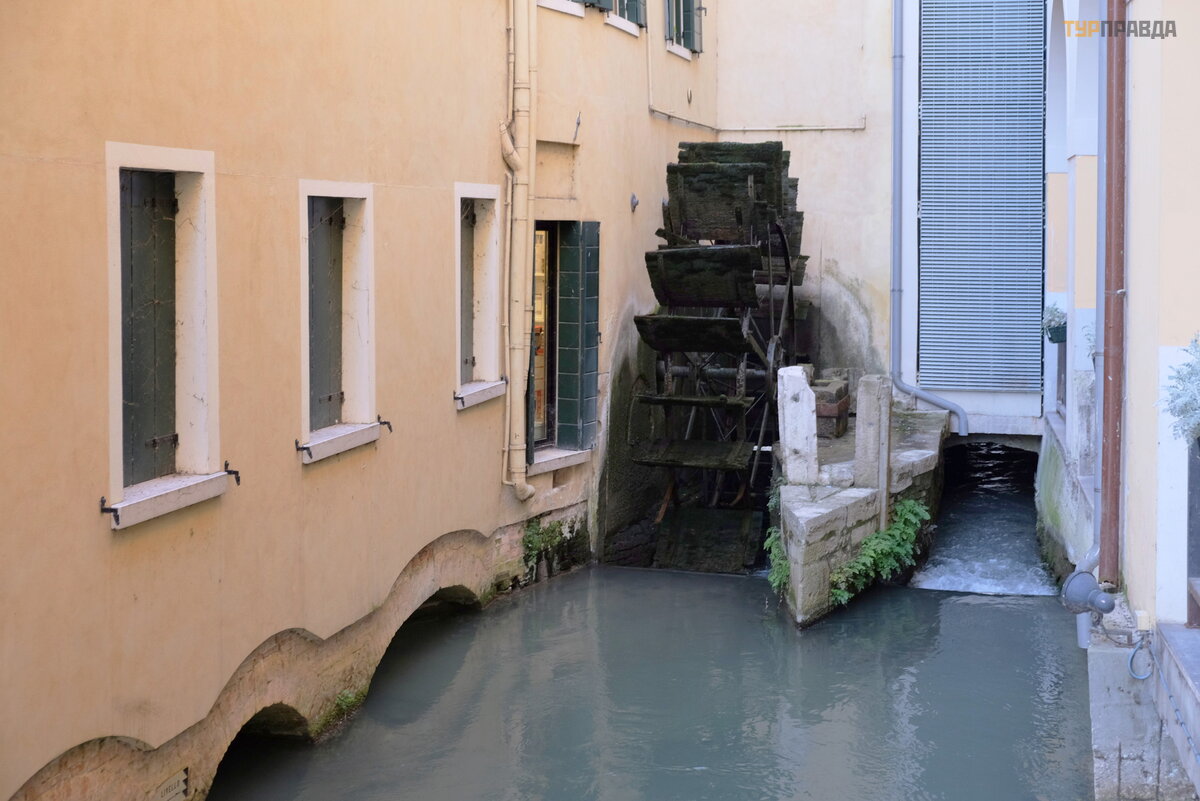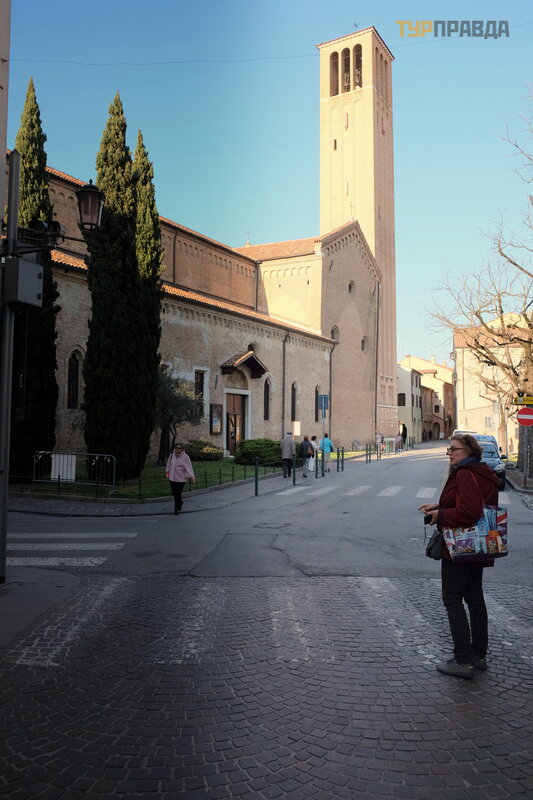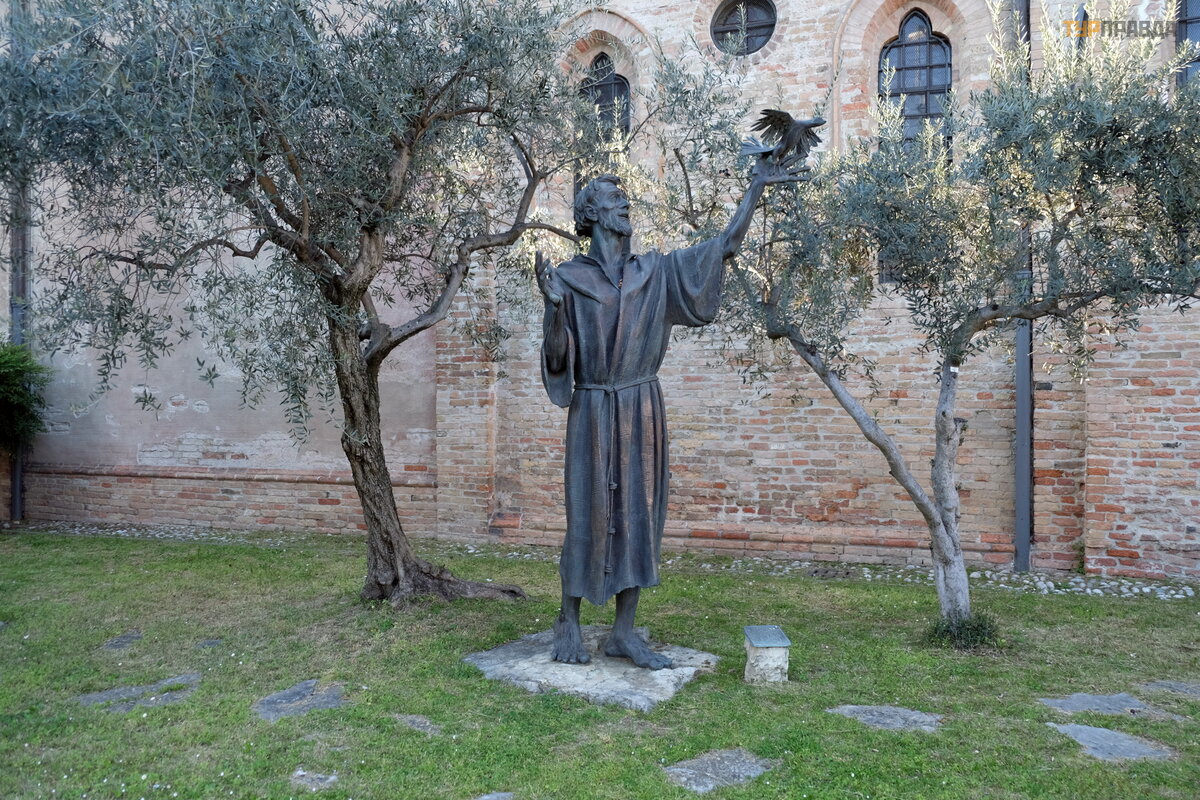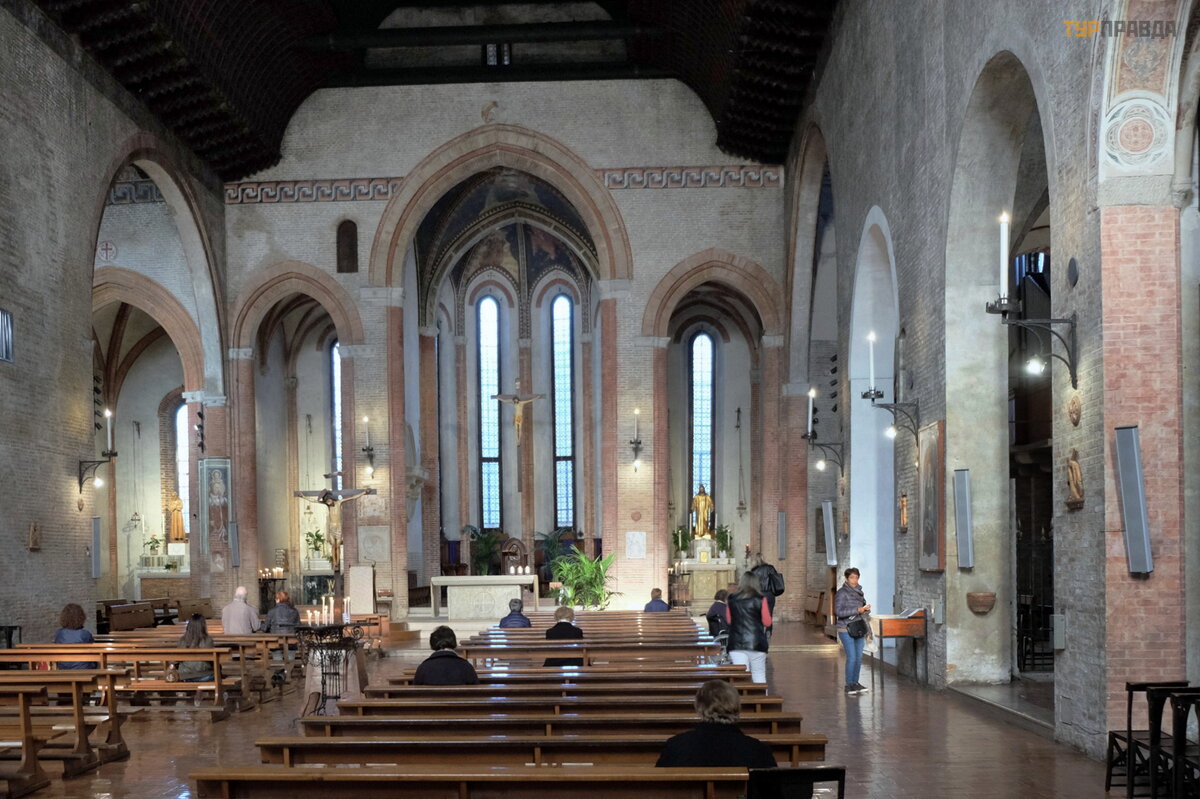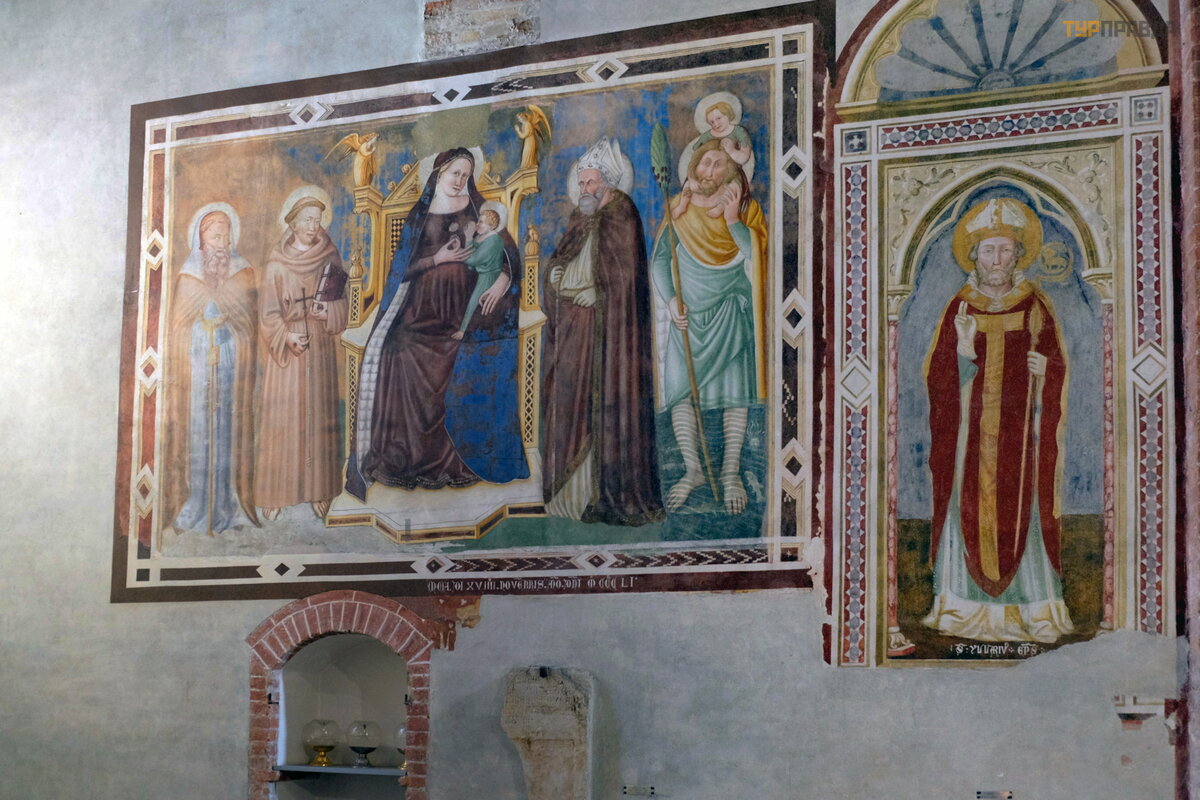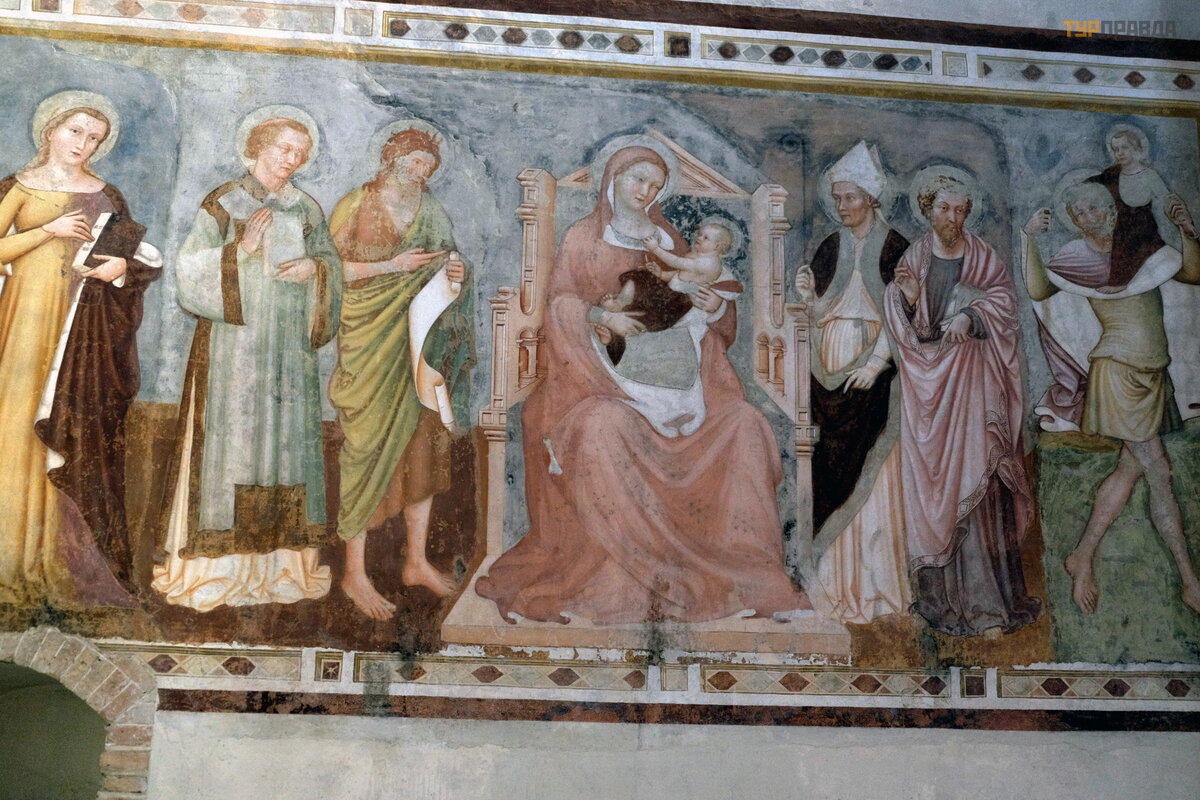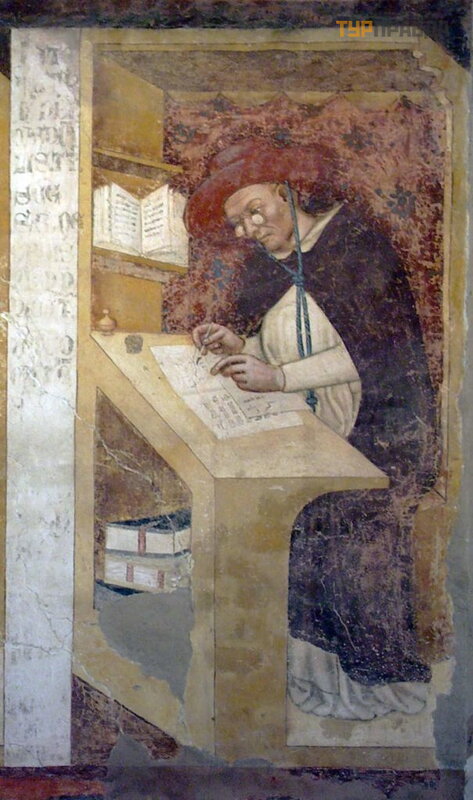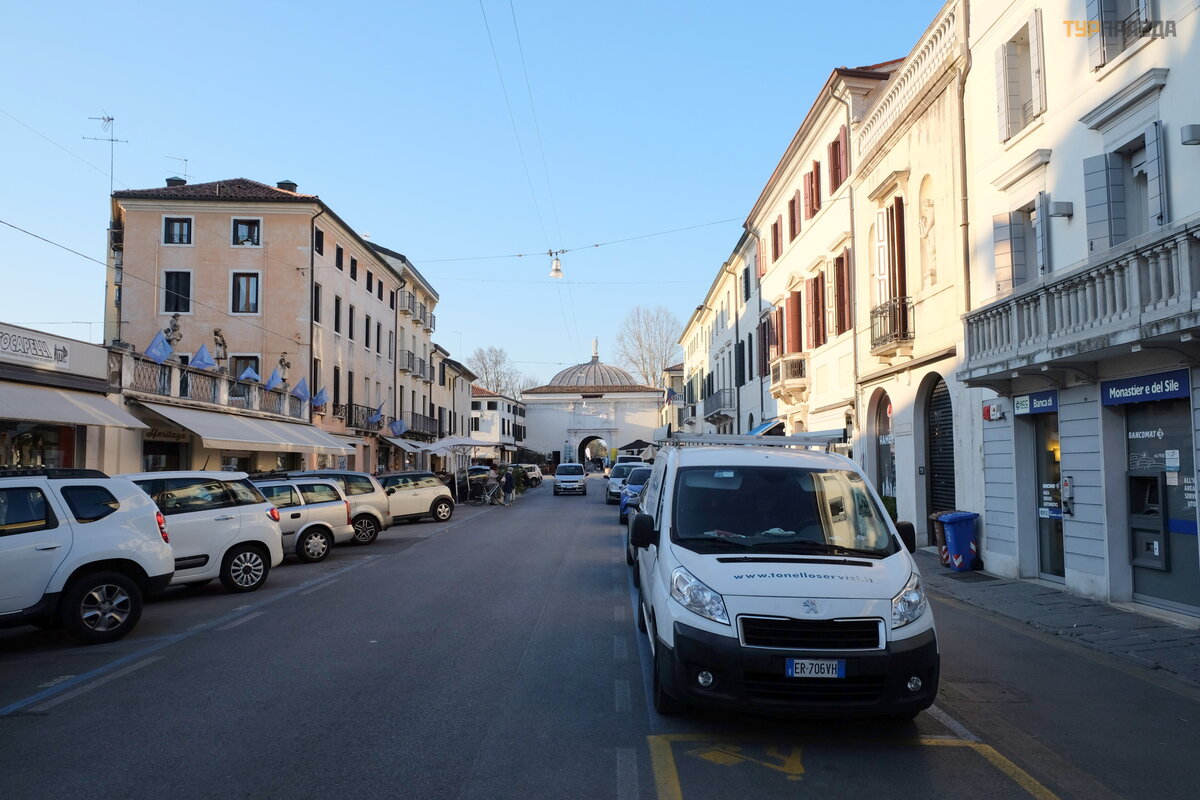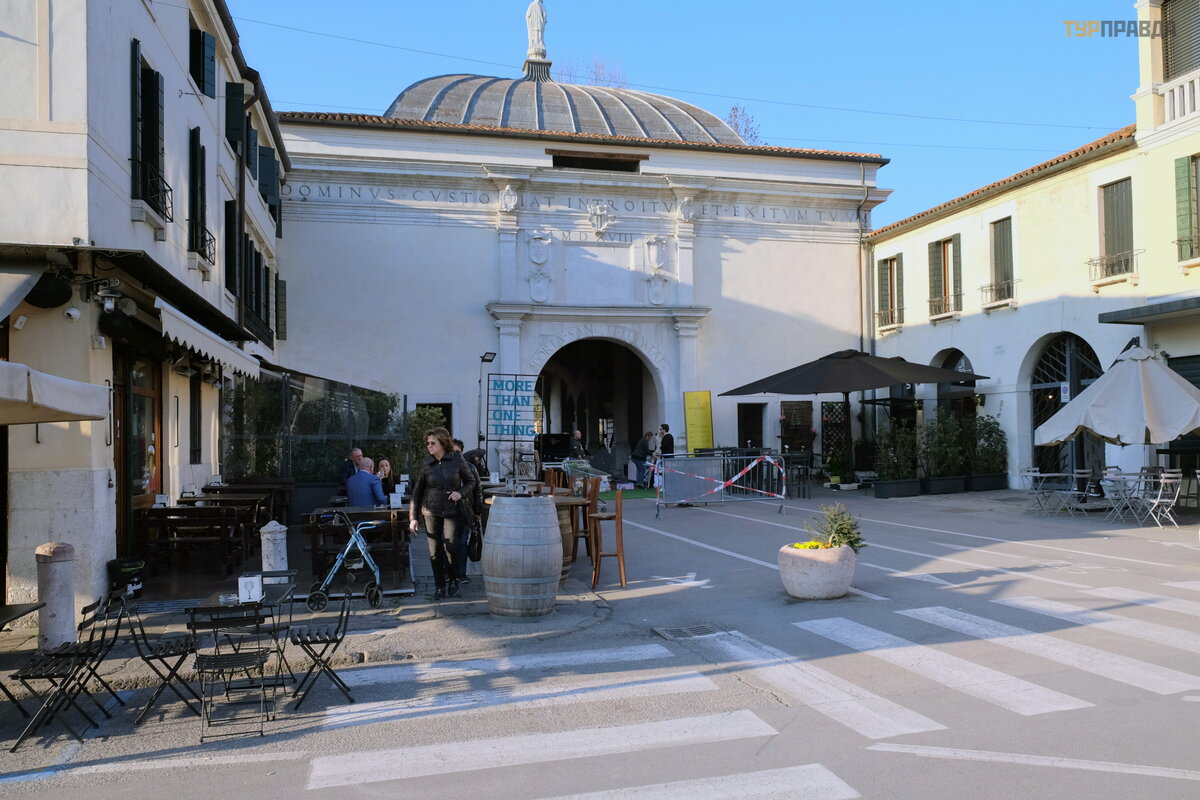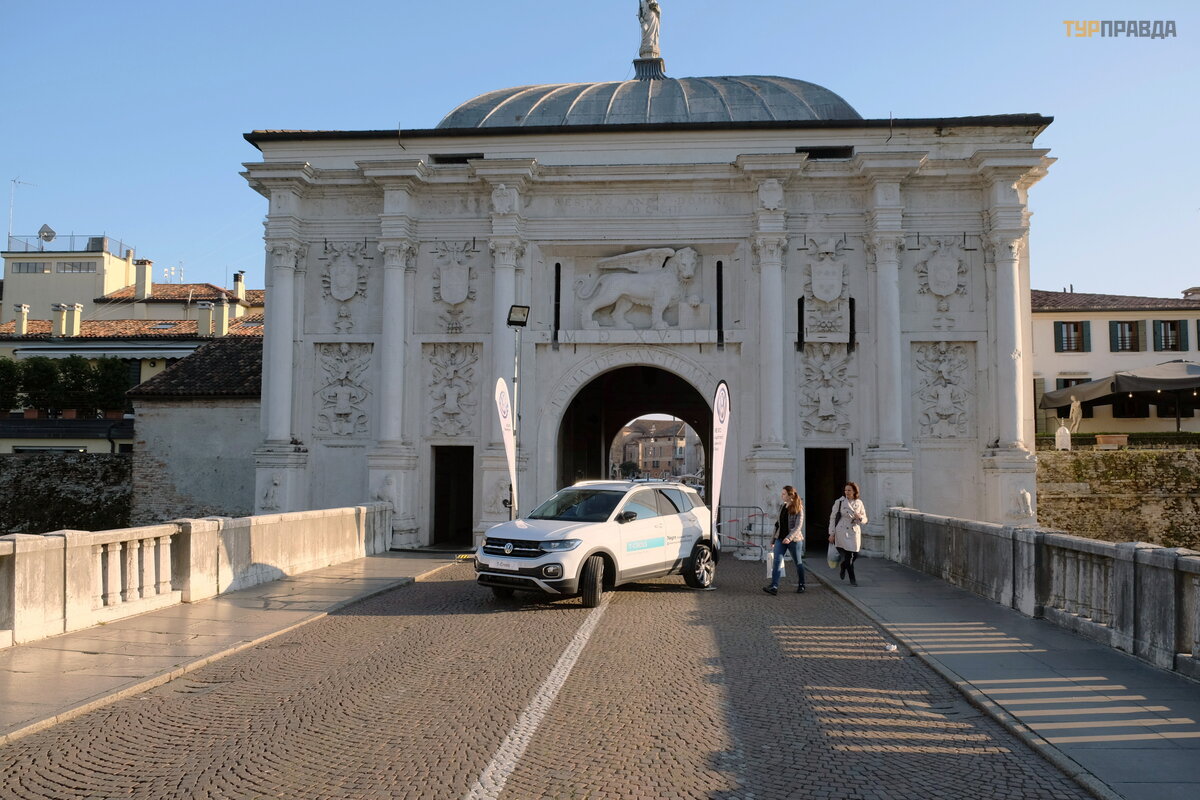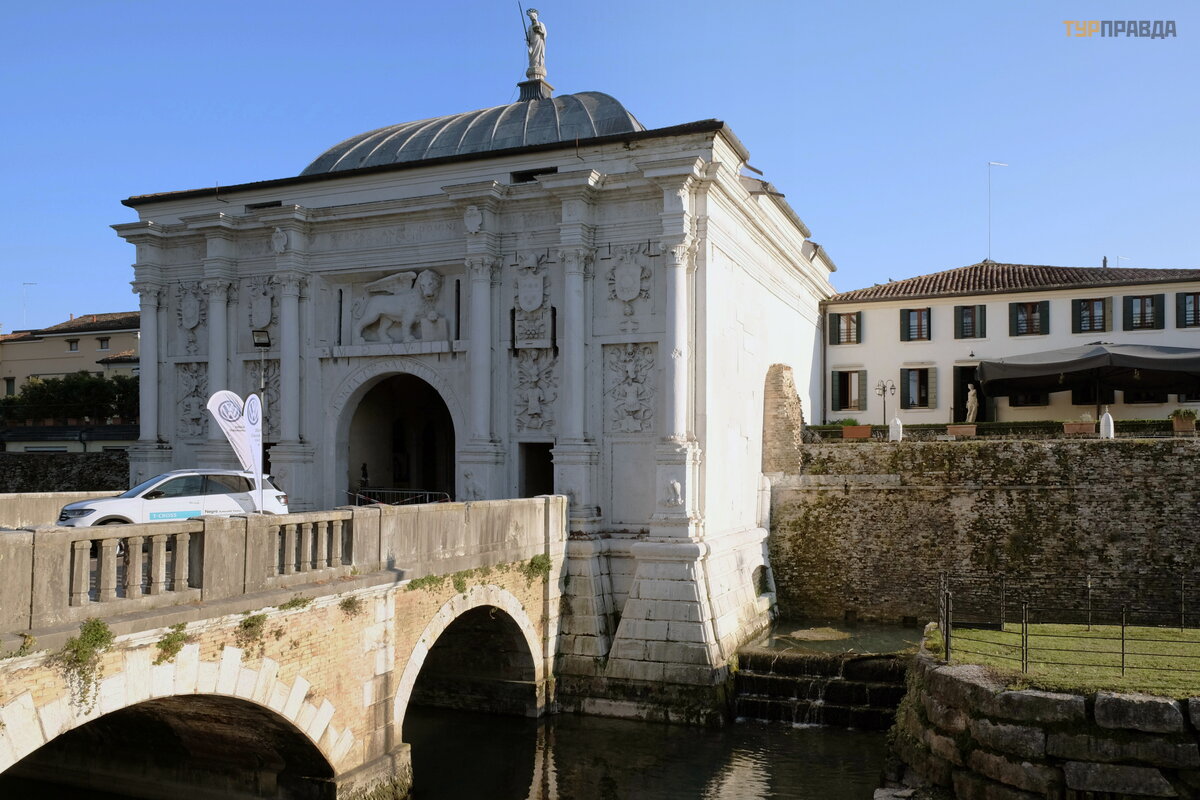Spring trip to Italy. Part 4. Treviso

A spring trip to Italy. Part 1. Trento >>>
A spring trip to Italy. Part 2. Mantova >>>
A spring trip to Italy. Part 3. Brescia >>>
On this day, we vacated the apartment and moved from Verona to Mestre.
The trip takes an hour and a half, the price is about 10 euros. Mestre is considered the mainland of Venice, like Marghera. That is, on the one hand, the Mestre railway station, and on the other, Marghera. Mestre is a rather large and comfortable town with a lot of good shops and cafes, there is also a historical part with a beautiful square.
Marghera is not such a beautiful town, but there are large chain stores Lidl and Panorama,
Several buses and trams run from Venice to these towns.
We stayed for 6 nights in a small hotel, 10 minutes walk from the station. The hotel was modest, but with all the amenities and with a shared kitchen. After checking into the hotel, we decided to go to Treviso, from the Venezia-Mestre station by train 20 minutes. Not far from Treviso there is an airfield from which travelers immediately leave for Venice without seeing the city, but in vain. The city is very interesting.
Treviso has existed as the city of Tarvisium since Roman times. And when the first settlers began to hammer foundation pillars on the site of the future Venice, Treviso was already one of the centers of early Christianity in northern Italy and had its own bishop in the 4th century. At the beginning of the XIV century, the city was included in the Venetian Republic.
Near the station, a monument to the great singer Mario del Monaco,
who lived in Treviso for the last years of his life.
Then we went towards the city center.
Treviso stands on the natural banks of the Sile and Kanyan rivers, which merge in the center of the old city, forming numerous picturesque branches and canals.
There is a university in Treviso, located on the waterfront.
There are no crowds of tourists in the city, a calm, peaceful atmosphere, people walk, look at ducks and swans.
The confluence of two rivers was mentioned by Dante Alighieri in his Divine Comedy,
The bridge built on this site bears his name.
Nearby is the island of Pescheria, which is located in the historic center of the city. It was built in 1856. For the construction of Pescheria, 3 natural islands on the Kanyan River were combined. You can get to the island by 2 bridges. There is a fish market there.
By this time, the market had already closed.
Let's head to the city center.
The church of Santa Maria Maggiore appeared.
The modern church was built in 1473 in typical late Gothic Venetian style.
I wonder
that the bell tower did not exceed the height of the church for a long time (by the way, a rare case! ), and only in the 20th century was it built on. At the same time, "tower" clocks appeared on it.
The interior is very rich in surviving frescoes and other late Gothic elements.
We move on, admiring the channels.
The Church of St. Leonardo is located on the square of the same name, it is mentioned in historical documents of the XIV century. The current building arose as a result of the reconstruction of the XVII century.
The interior is made in the form of one common hall - the nave. Here you can see the altarpieces of Saint Michael and Saint Leonard, made by the artist Ludovic Pozzoserat.
Let's walk further.
This is the Loggia of the Cavaliers (Loggia dei Cavalieri) - one of the oldest historical monuments of the city, dating back to either the 12th or 13th century. It served as a meeting place, meetings, games of the local aristocracy:
We are moving towards the main square along the picturesque streets of Treviso.
Signoria Square is the heart of Treviso.
The Prefectural Palace (Prefettura di Treviso) deserves special attention with a richly decorated facade and a huge bell tower:
This Romanesque palace served as the residence of the podeste, the mayor of Treviso, appointed by the government of Venice, and now the city council is called the Palace of the Prefecture.
Behind the palace rises the main city tower of Torre Civica, built in 1218, called "Rossignona" by the inhabitants of the city:
The Piazza della Signori is also home to one of the most significant architectural monuments of the city - the Trecento Palace (Palazzo dei Trecento, early 14th century), built in the Romanesque style. Literally, its name translates as "Palace of Three Hundred", and comes from the "Main City Council", which consisted of 300 members:
To the right of the palace is the Independence Piazzetta (Piazzetta Indipendenza). In its center is the "Monument to the Fallen for the Freedom of Italy" - one of the symbols of Treviso:
The marble female figure, which the locals call "Teresona" is an allegorical image of Italy, which stepped on the broken chains of subordination of Austria with its left foot (this is the country's past), and at its right foot is a cornucopia (this is the future). The monument is dedicated to the fallen heroes who gave their lives in the hard struggle for the unification of the Italian kingdom in 1797-1866.
And behind the monument you can see the headquarters of the Benetton company. Its founder, Luciano Benetton, is from Treviso.
Behind the Pretorio Palace is the Fountain delle Tette - "fountain of the female breast. " This fountain was installed in 1559 in honor of one of the victories over the Republic of Venice. According to the legend,
for the first three days, grape wine flowed from the chest.
Piazza San Vito is just a few minutes walk from Piazza della Signoria and takes up more space, in the center of the fountain:
On the opposite side of the square is the pseudo-Romanesque Littorio building. There are several such buildings in Treviso.
Further route to the cathedral.
The Cathedral of the Holy Apostle Peter (Cattedrale di San Pietro Apostolo) was founded in the early Christian period. Already in the 6th century AD, a church stood in its place. The cathedral itself dates back to the 12th century, when it was built in a typical Romanesque style.
The bell tower of the cathedral remained unfinished, they say, the Venetians did not want
so that it was higher than the campanile opposite the Basilica of St. Mark. To the left of the cathedral is an example of Romanesque architecture of the 11th-12th centuries, the baptistery of San Giovanni.
But the facade of the cathedral overlooking the Cathedral Square (Piazza Duomo) is more like the facade of the theater. It was attached to the church in 1836, when work was underway to restore the temple after the French occupation.
Inside you can see some magnificent works of art, as well as admire the extraordinary frescoes.
The most valuable artwork in the cathedral is Titian's Annunciation. . .
. . . and the Adoration of the Magi fresco by Pordenone.
Three city gates have been preserved in Treviso since the Venetian rule. We decided to see St. Tom's Gate. We go again along the streets and canals.
Via Calmaggiore, called the Roman Gallery due to its many shops:
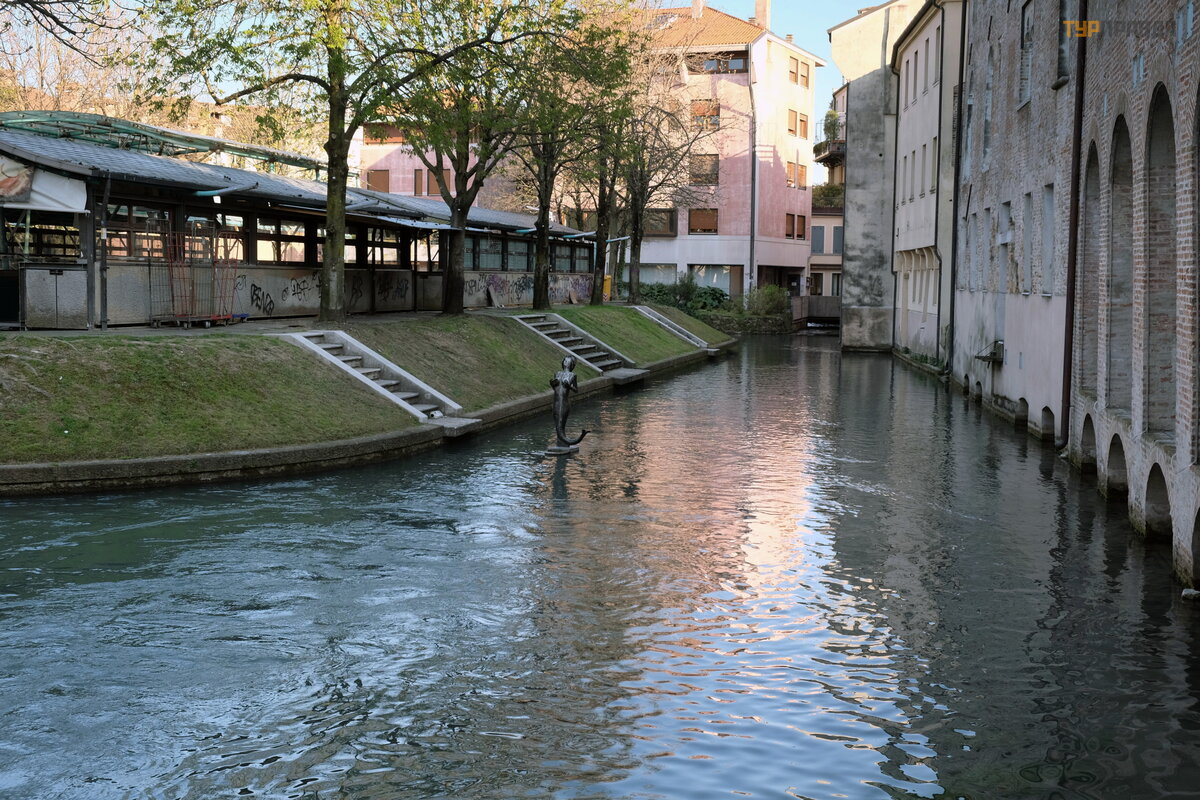 Some houses are right on the water
Some houses are right on the water
Even the water wheel has survived:
On the way we went to another remarkable church - St. Nicholas. This beautiful building was erected in the 13th century by the Dominicans, who at that time lived in Treviso.
Not far from this entrance is a modern statue of St. Francis, to whom this church is dedicated.
Inside, you can see a large number of different decorations, such as a wooden ceiling, stone and brick columns and arches, as well as a colored tiled floor. The children of great poets are buried inside - Francesca Petrarch, who died in Treviso in 1384, and the son of the great Dante - Pietro Alighieri, who was himself a poet.
An interesting fresco "The Monk with Glasses" by artist Tomas da Moderna, is considered the first image of glasses in world painting:
Leaving the church, we approached the medieval city wall.
Treviso is a walled city. In the restored fortifications, you can see towers with secret loopholes, and the city walls are part of the fortification, the length of which is 4 km. Three of the historic gates have been preserved.
After walking a little, we found ourselves at the gate of St. Thomas (Porta San Tomaso). This is a view of the gate from inside the city:
This city gate was built at the beginning of the 16th century. Although the gate is named after St. Thomas, there is a statue of another saint, St. Paul, on the roof.
And this is a view of the gate from the outside:
A ditch with water in front of the fortress wall:
This is where our trip to Treviso ends. We also bought a wonderful locally produced proseco in the supermarket - this is an extra-class sparkling wine. After all, Treviso is considered in Italy "the capital of Prosecco". If you see on the label "Spumante Superiore Extra Dry", produced in the vicinity of Treviso, feel free to take it. The drink is not worse than "Veuve Clicquot". For generally little money: €5-8 per bottle.
